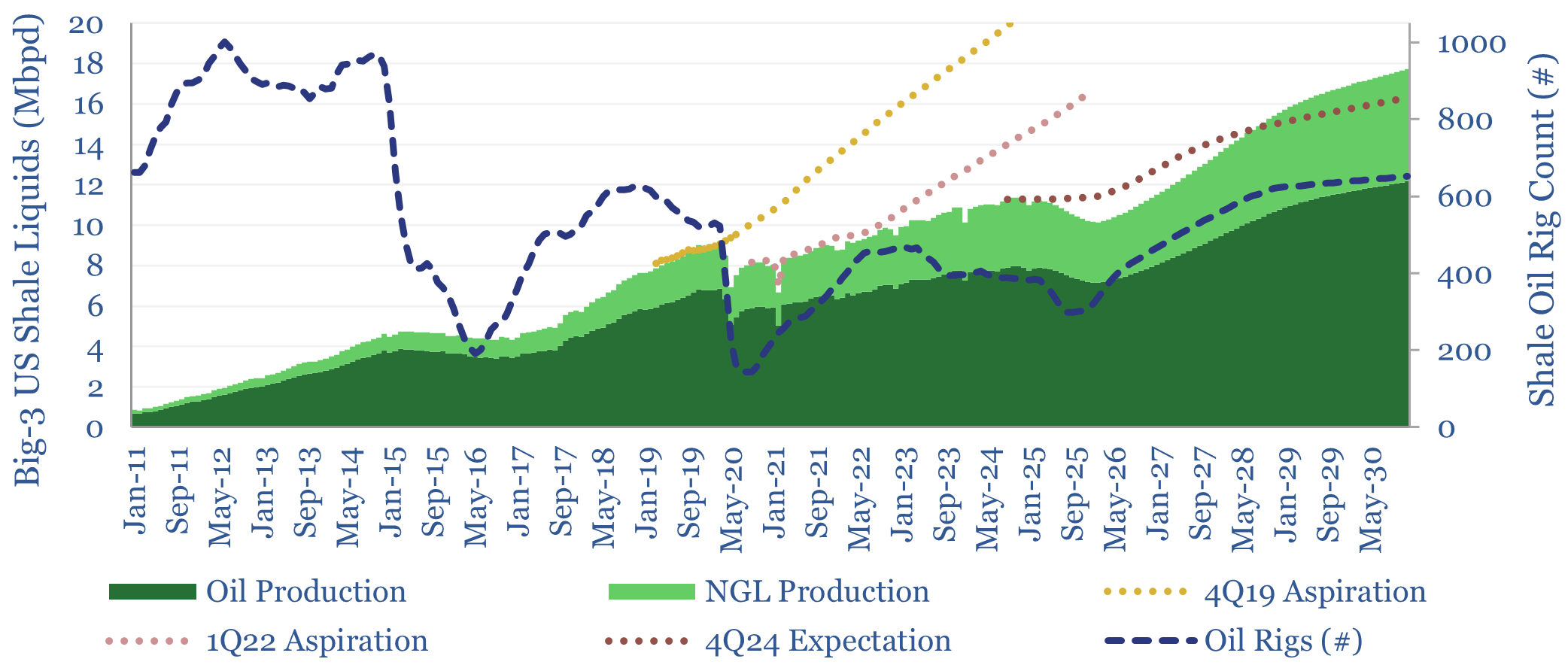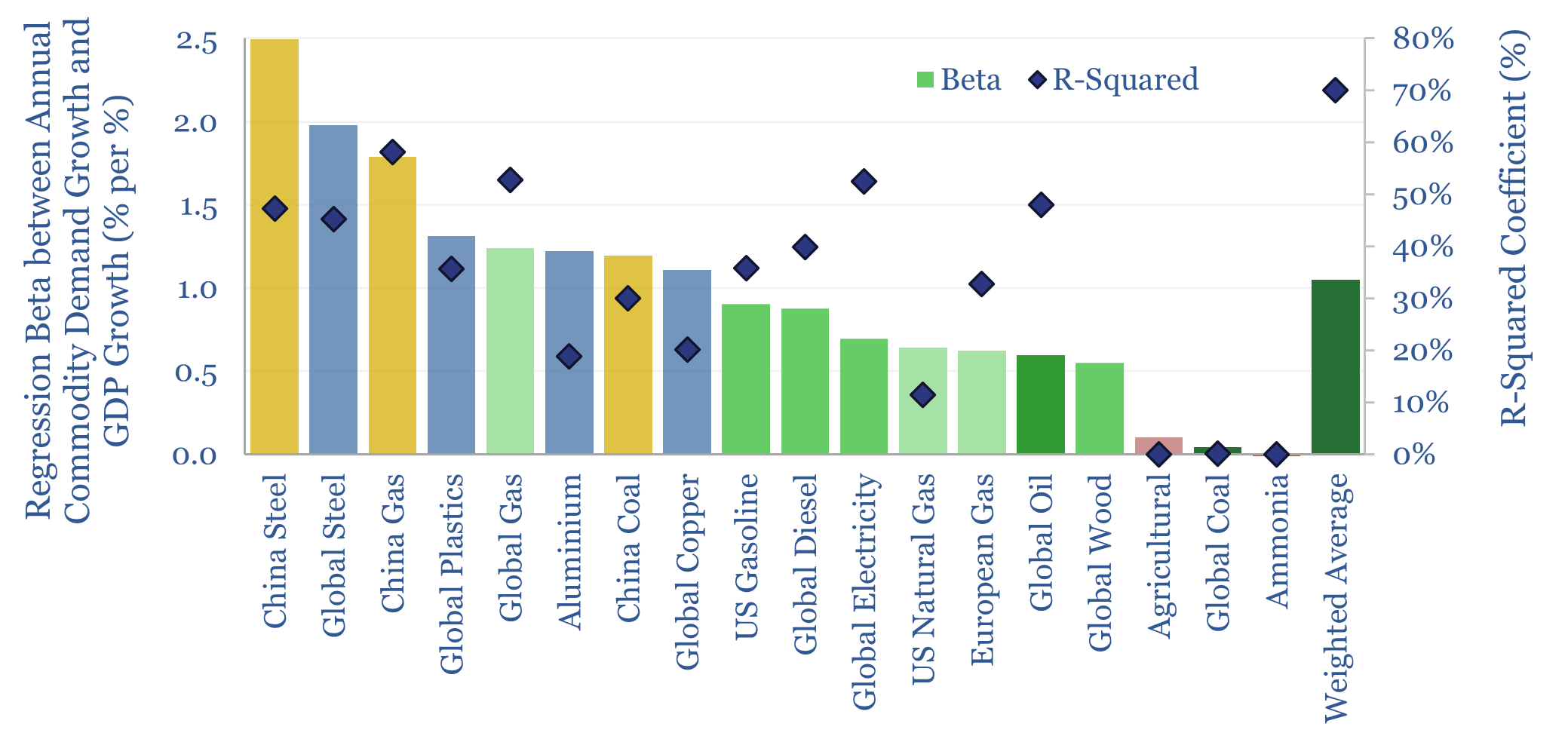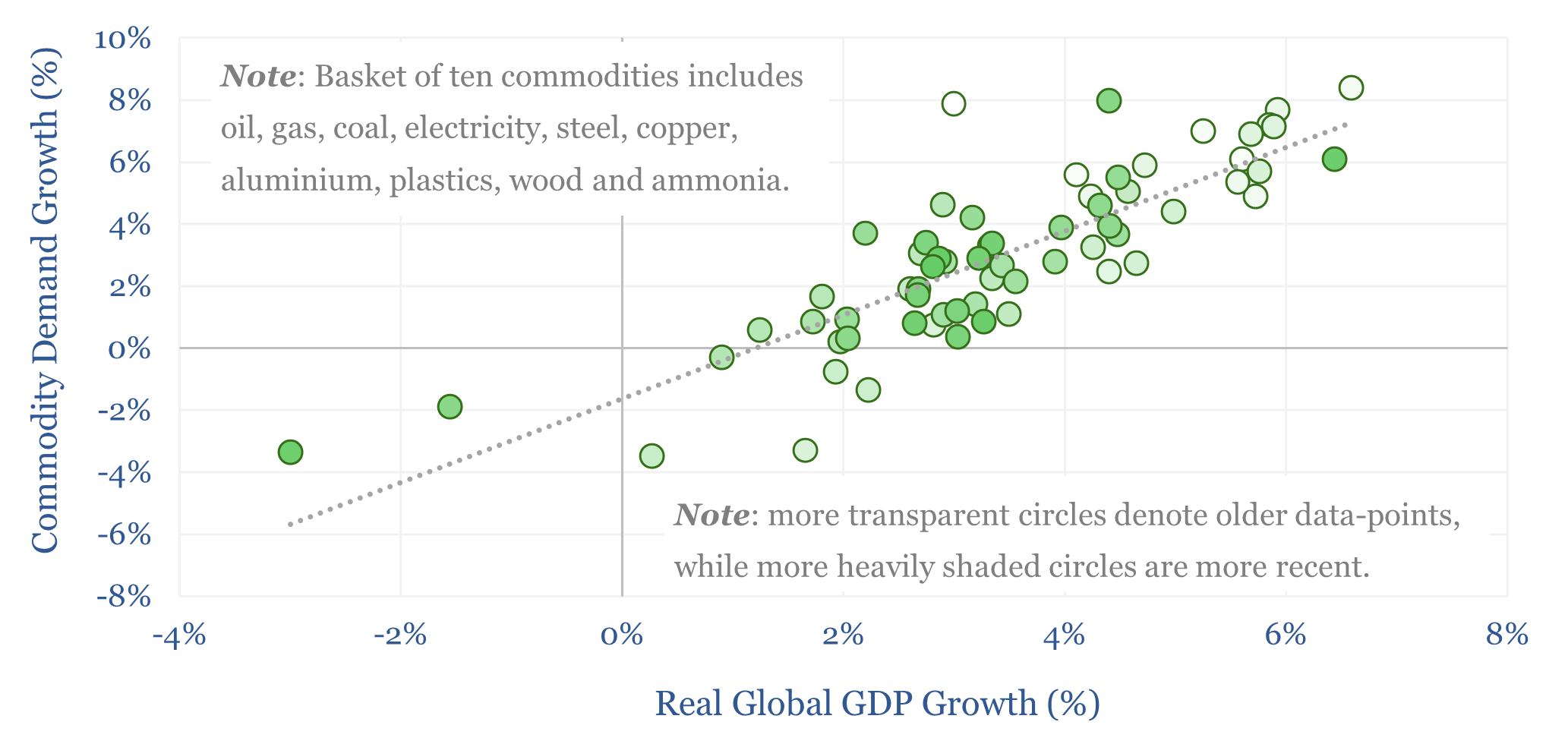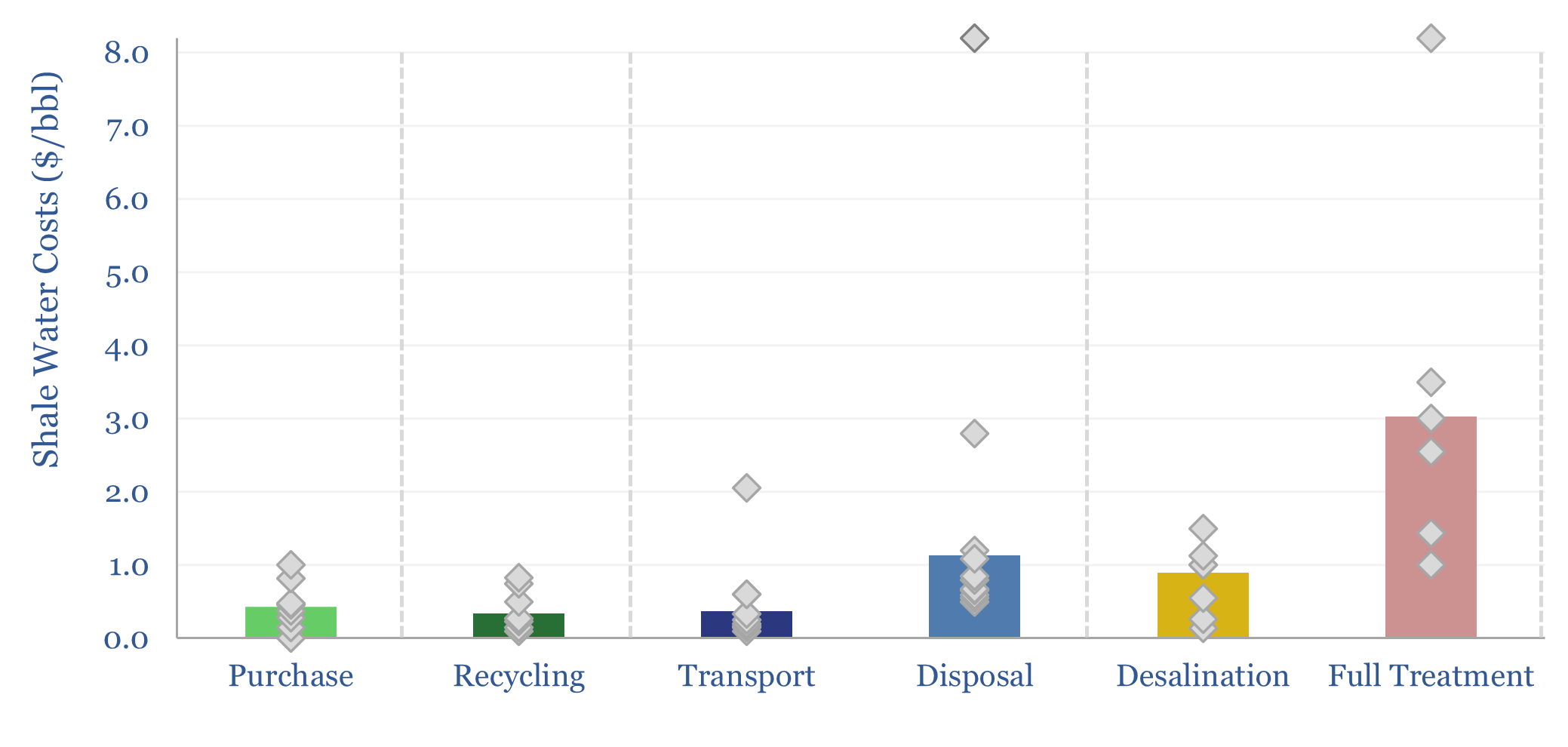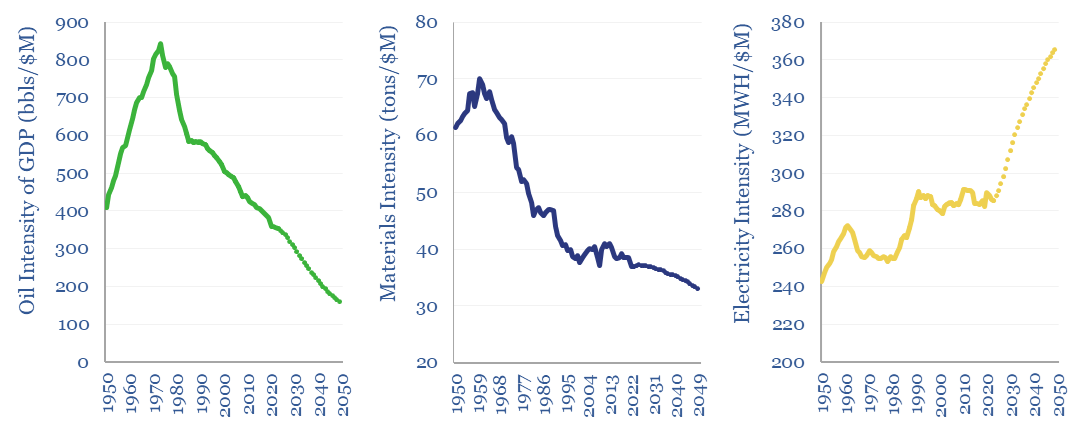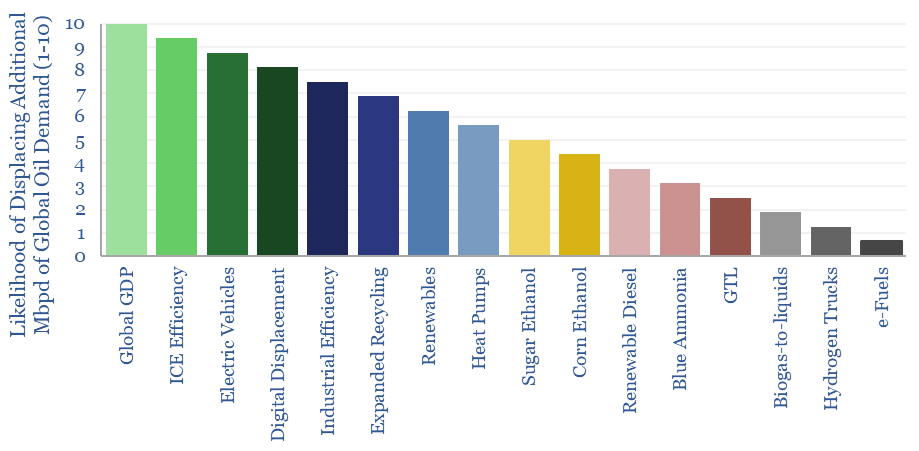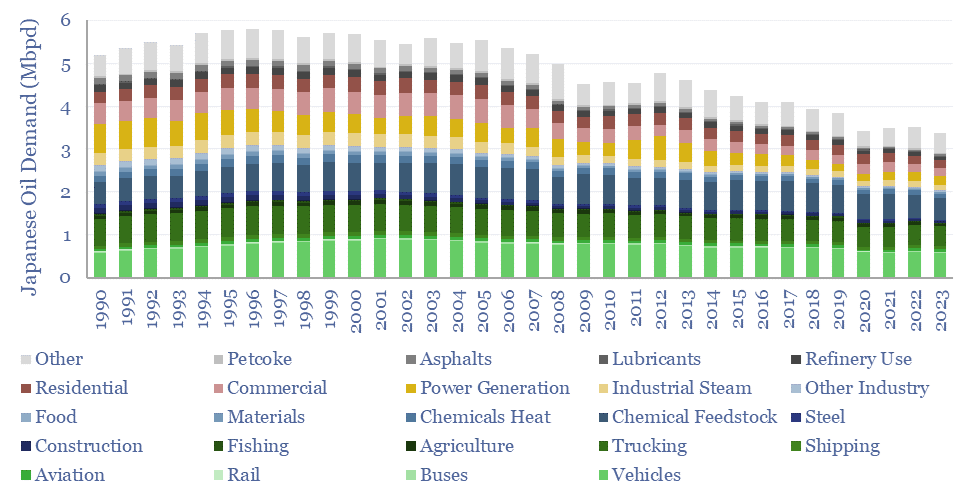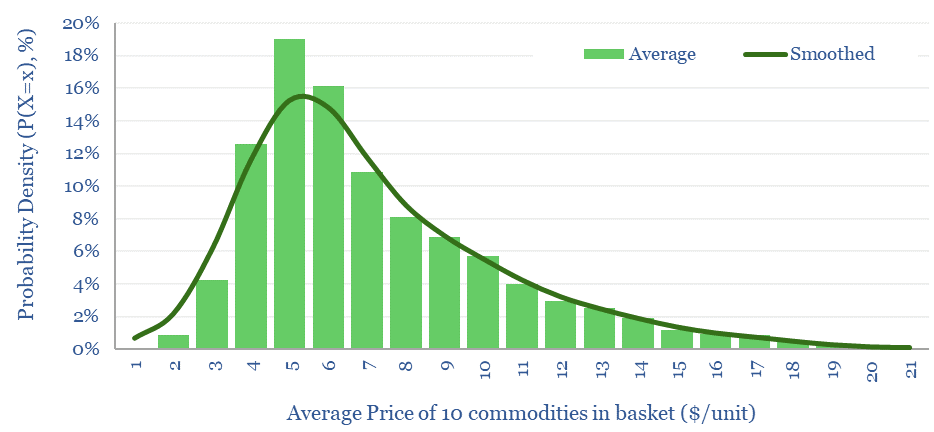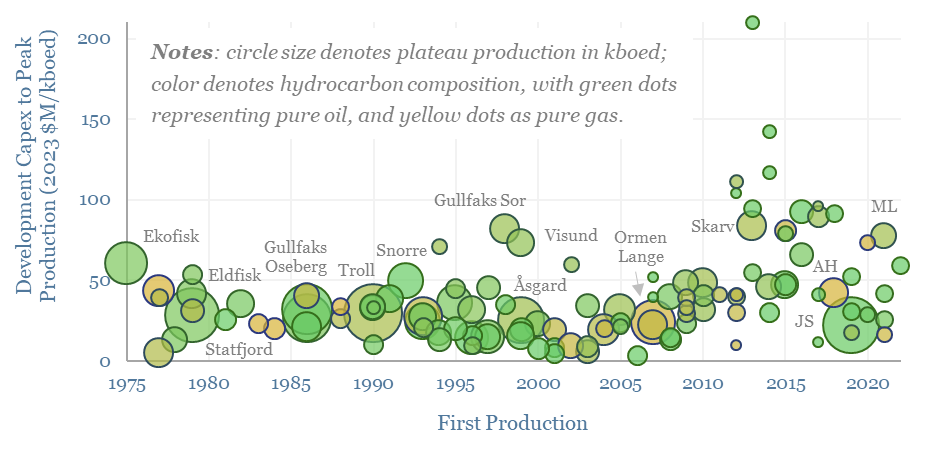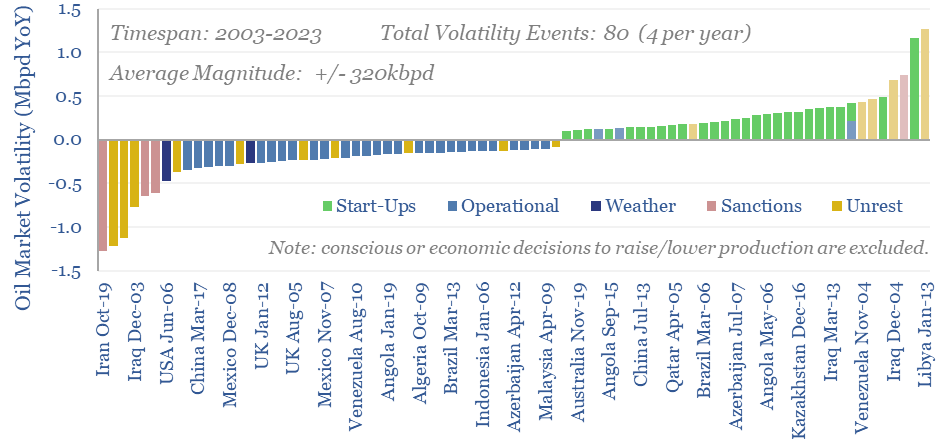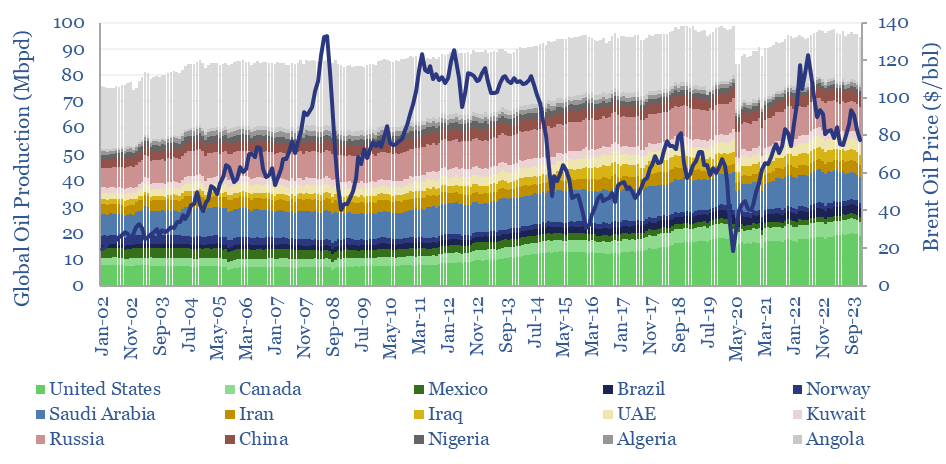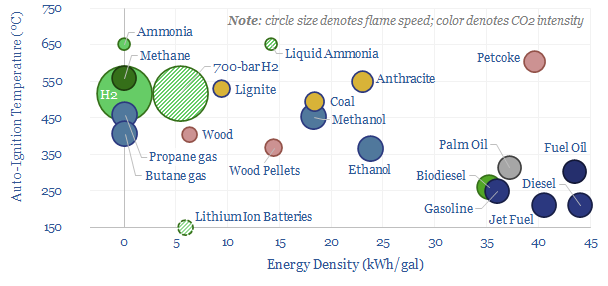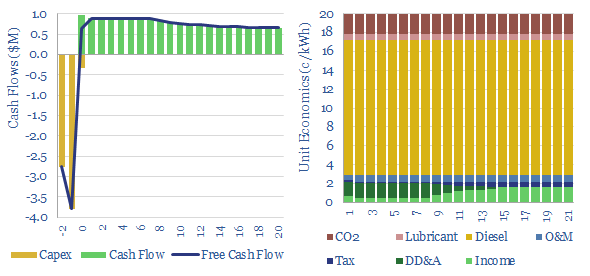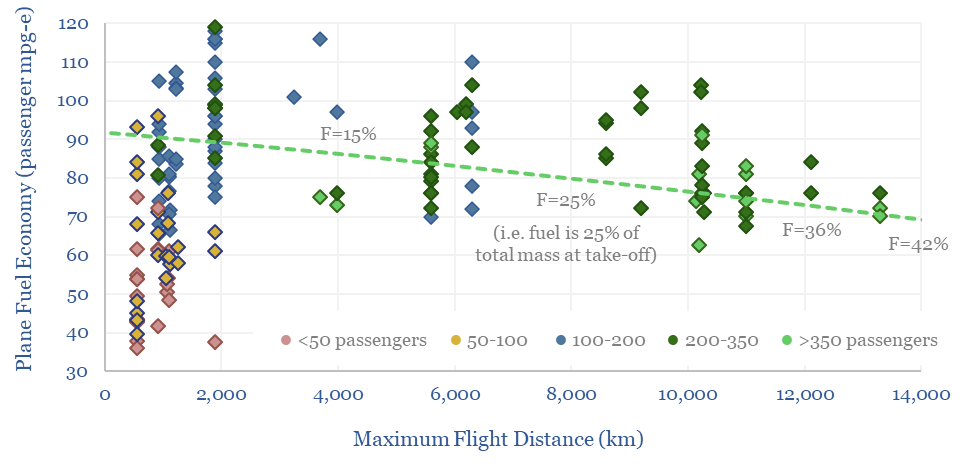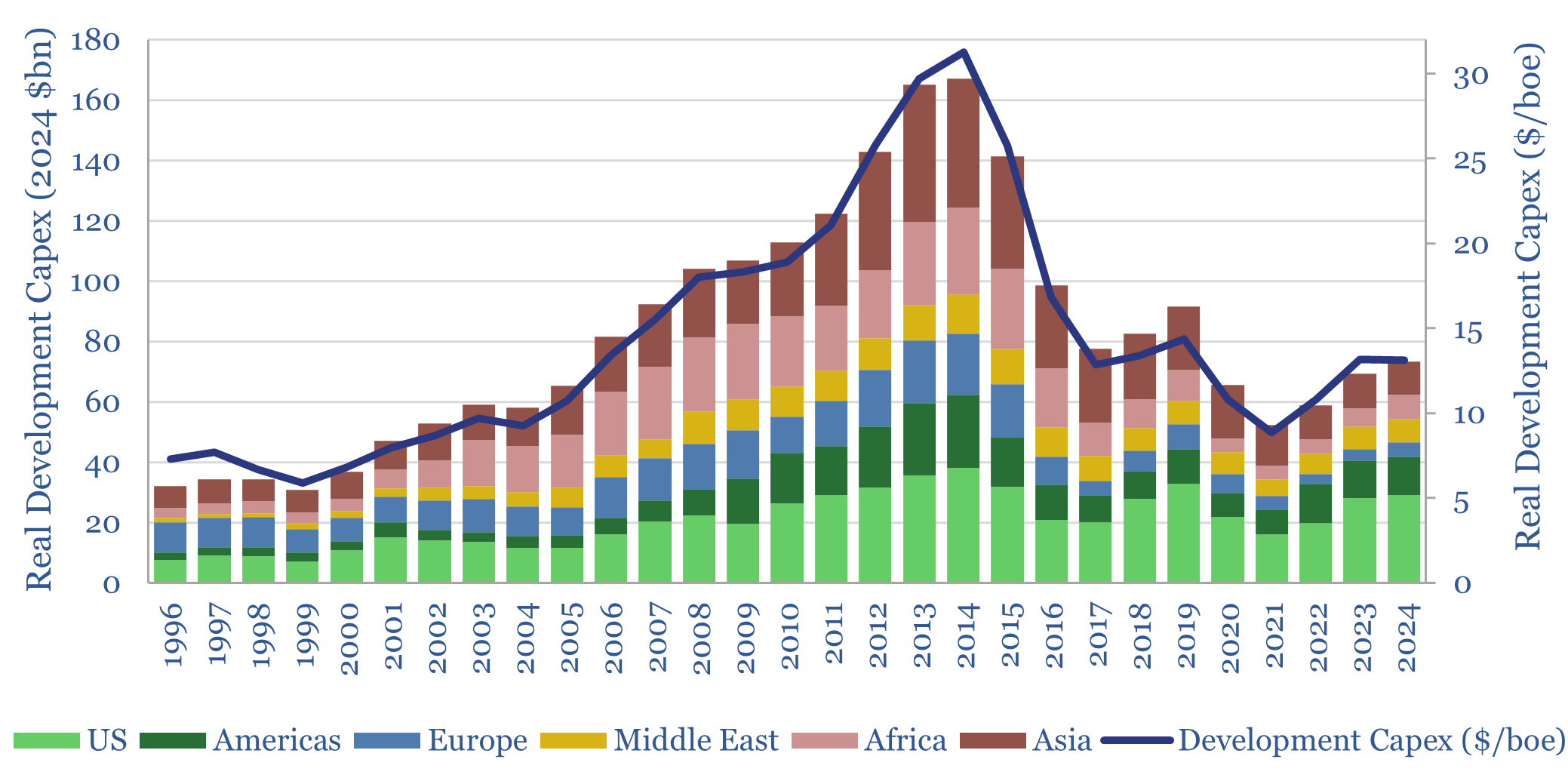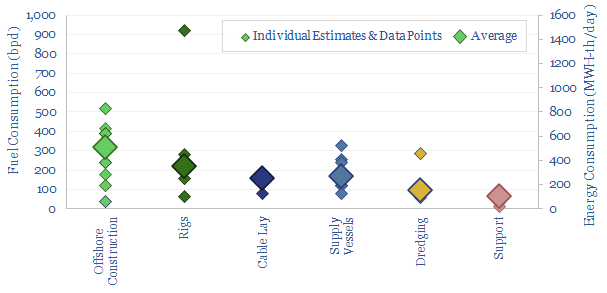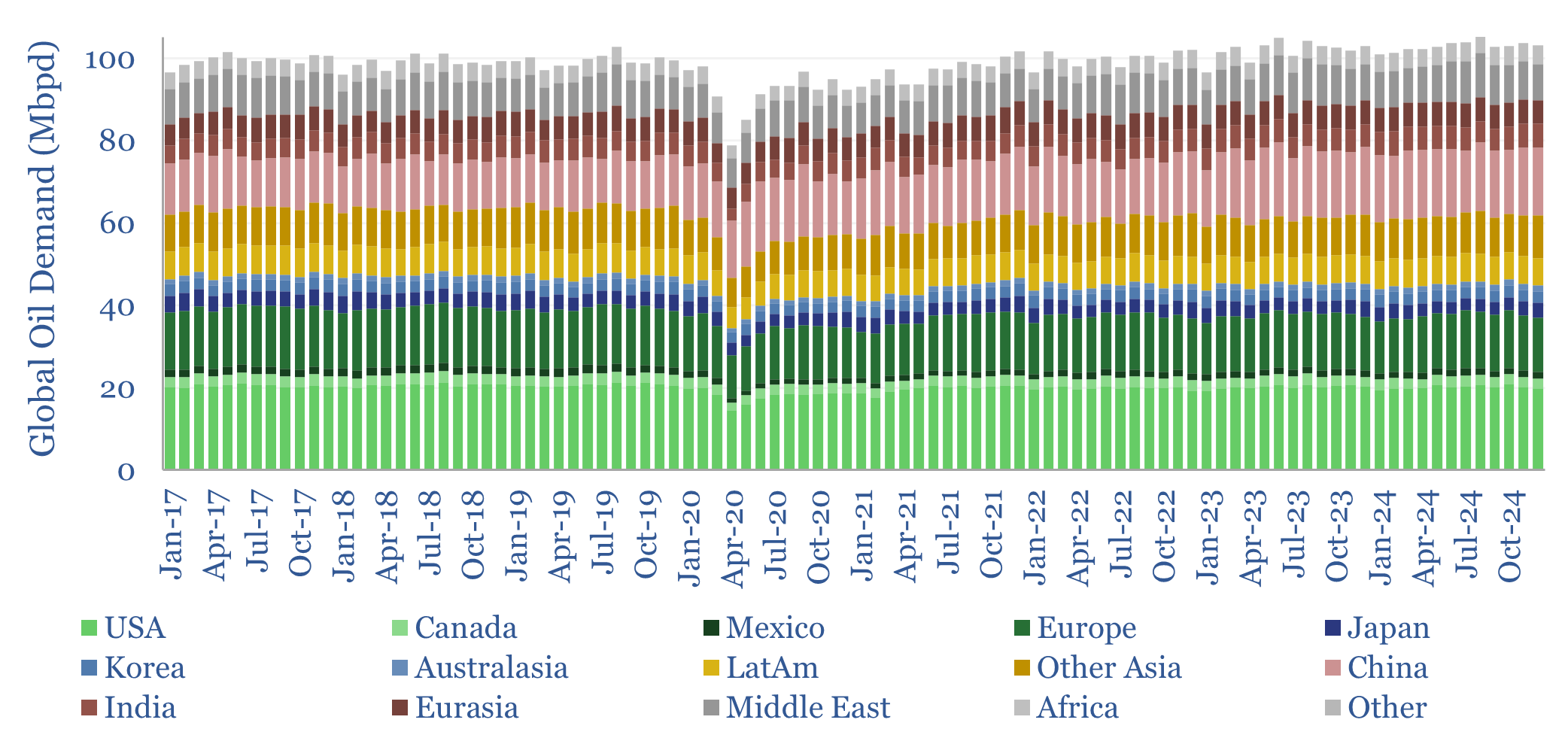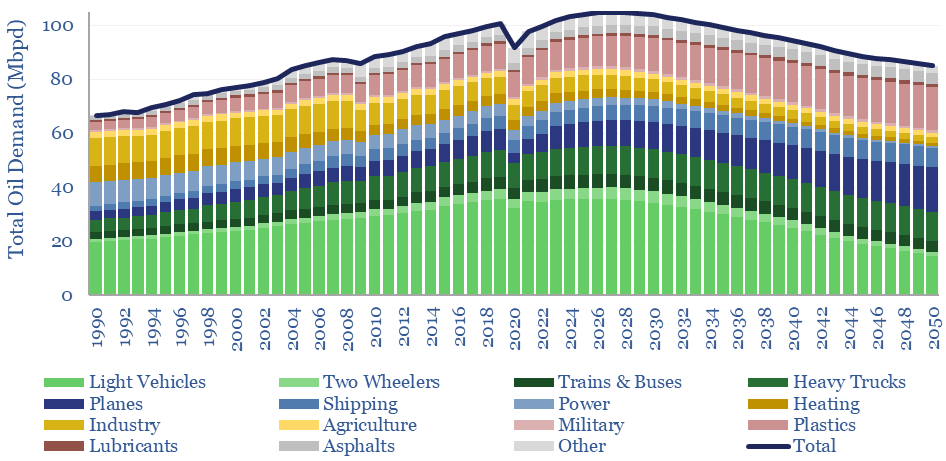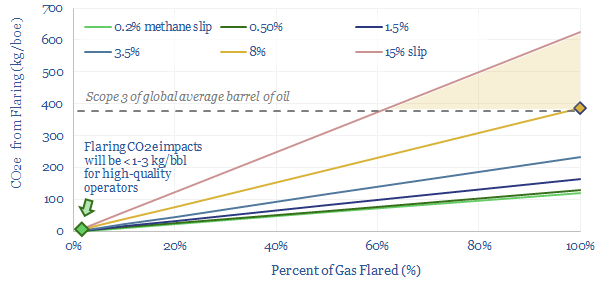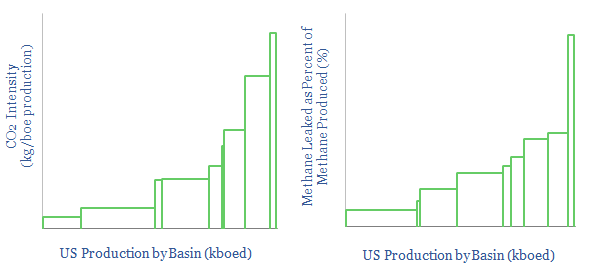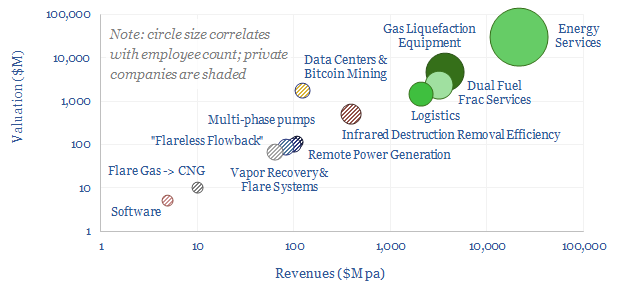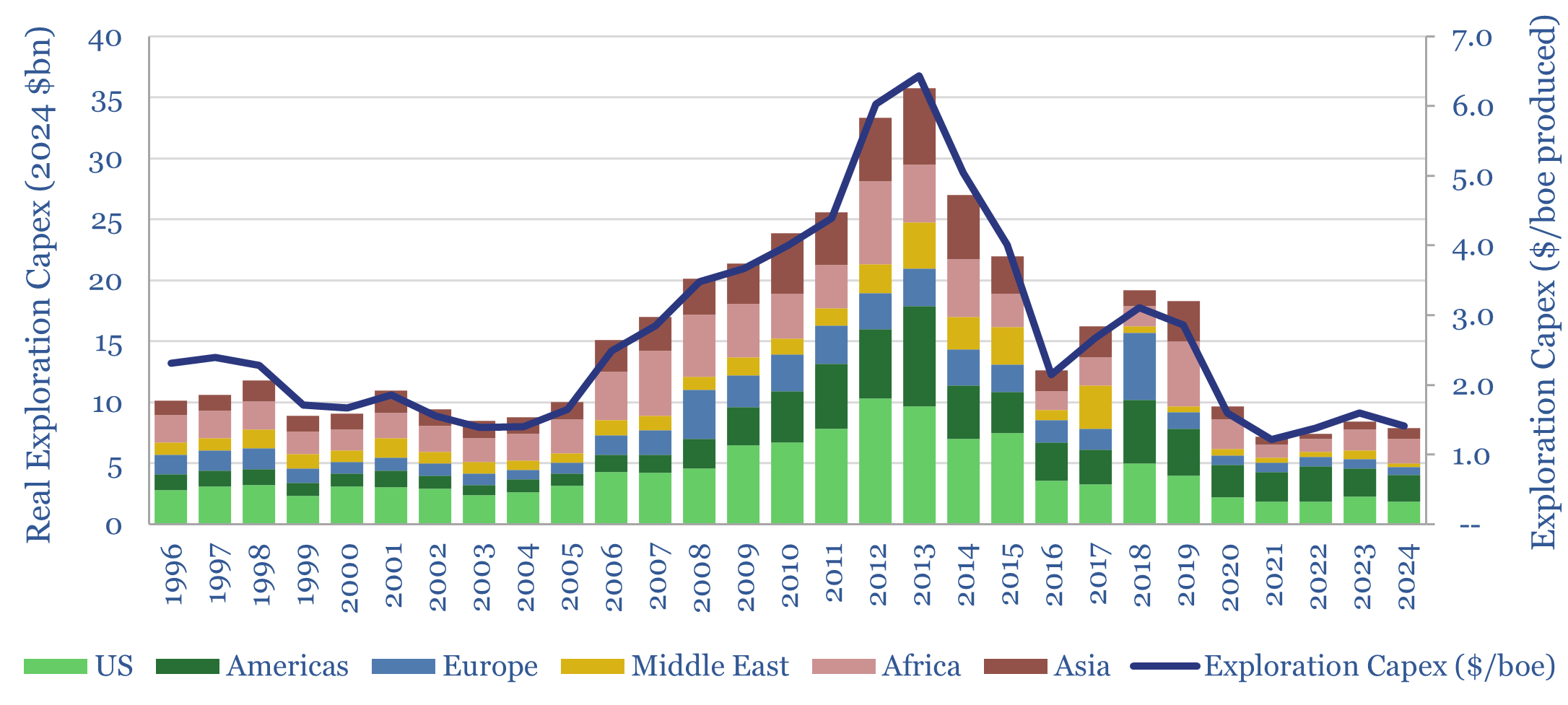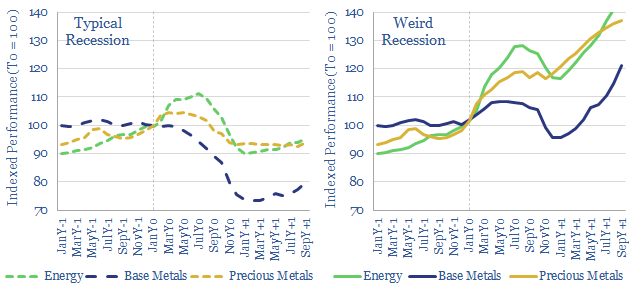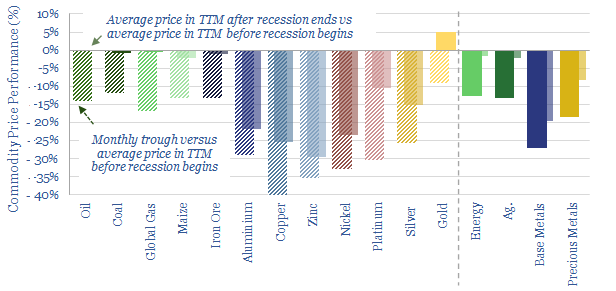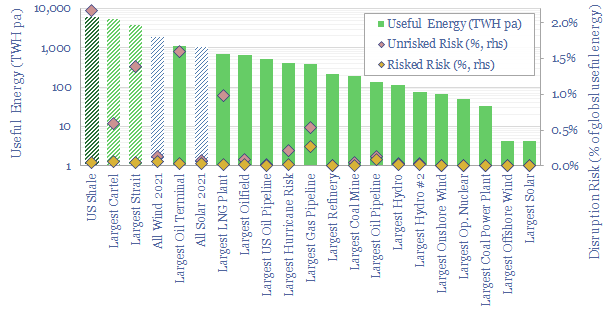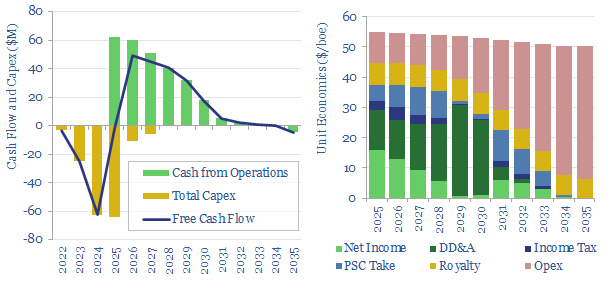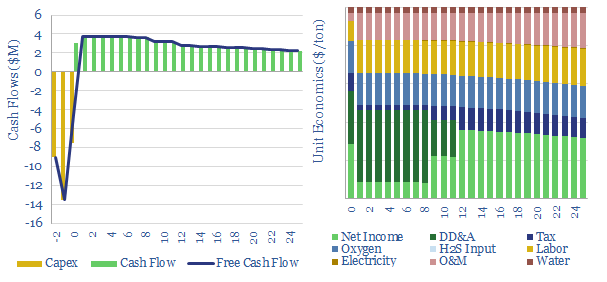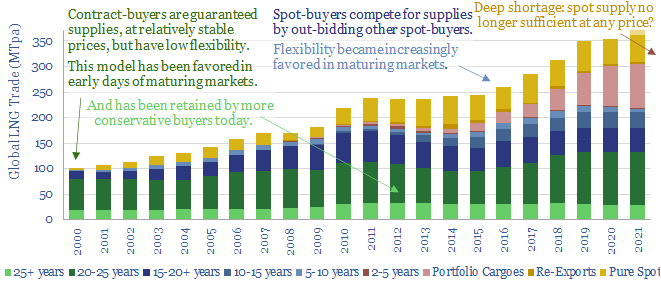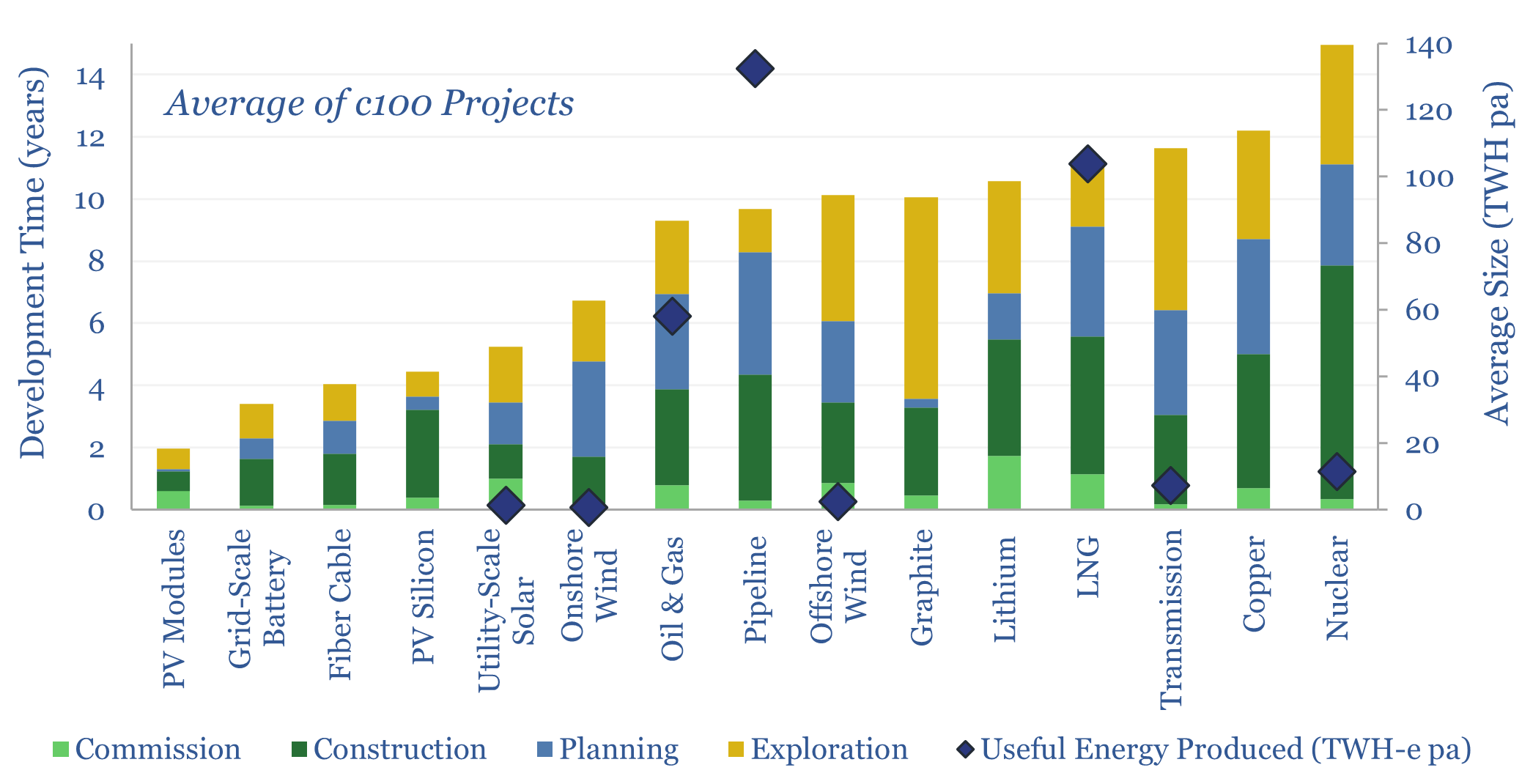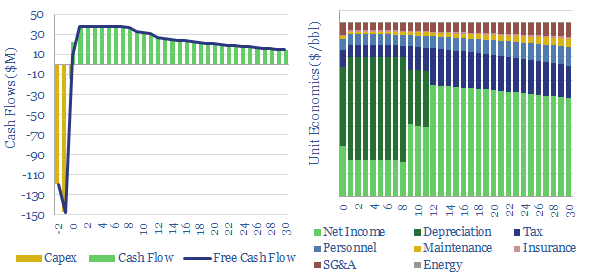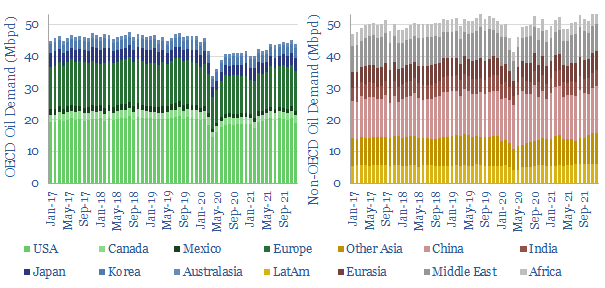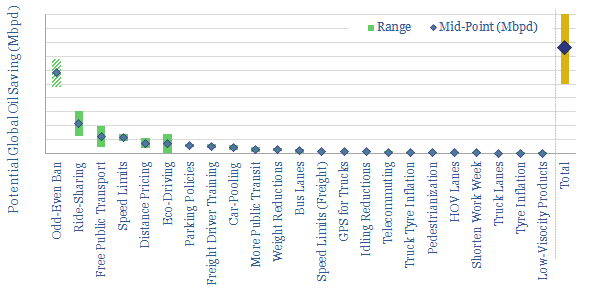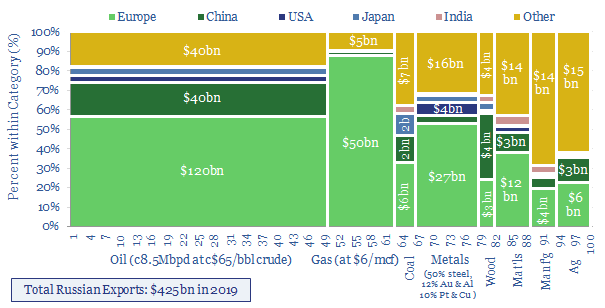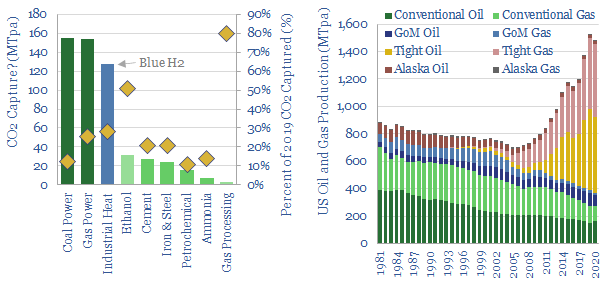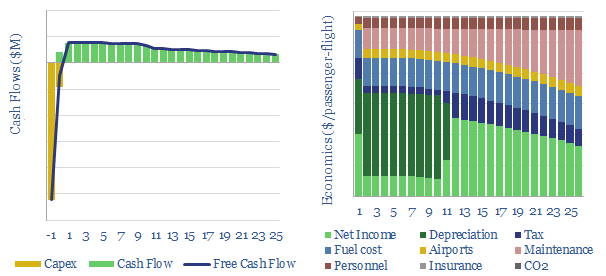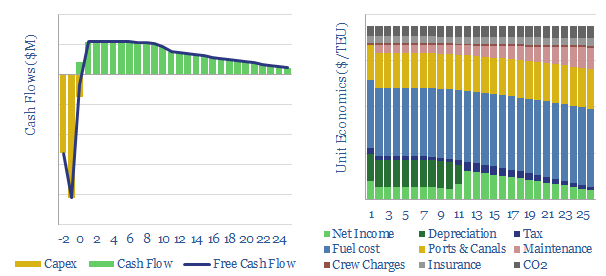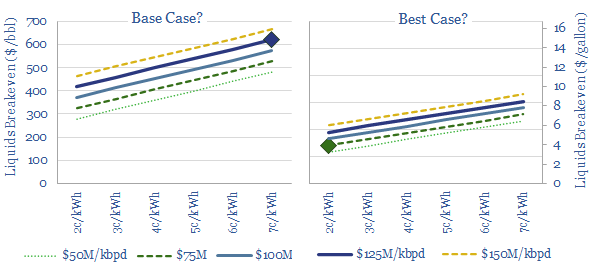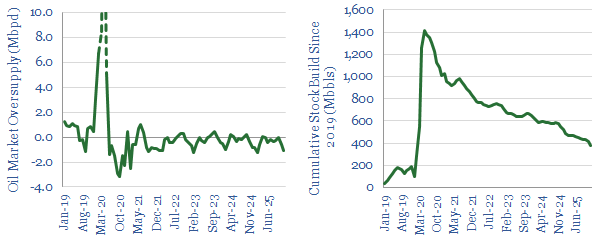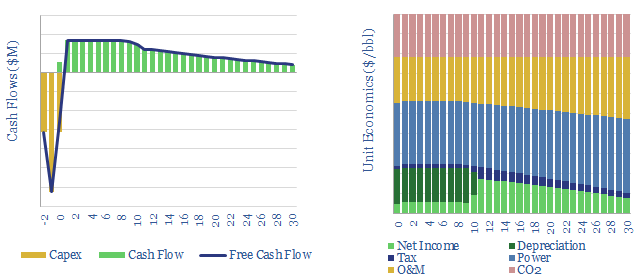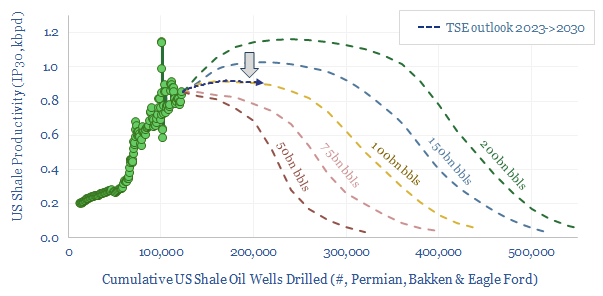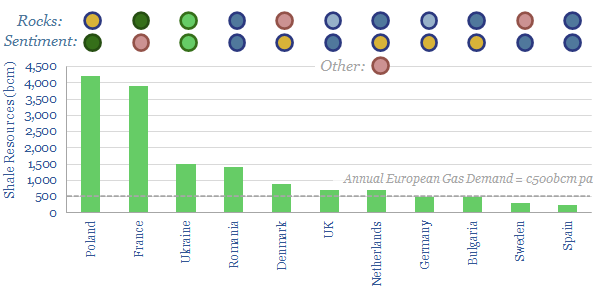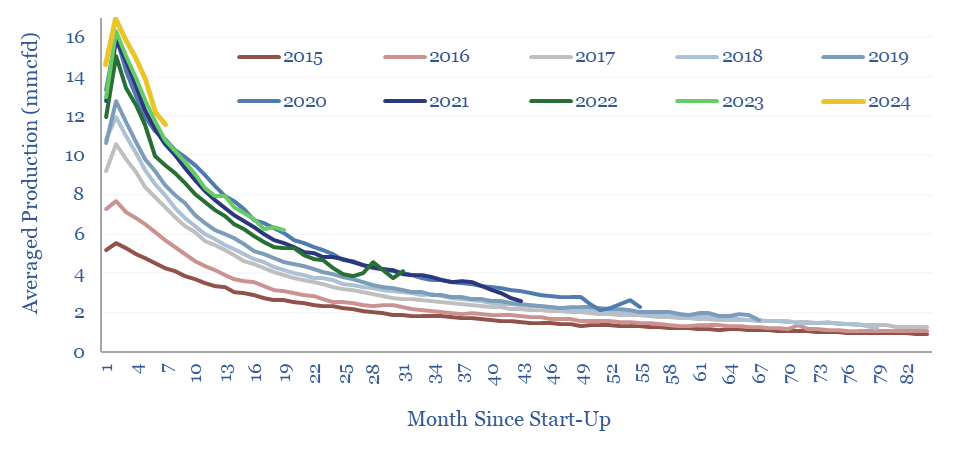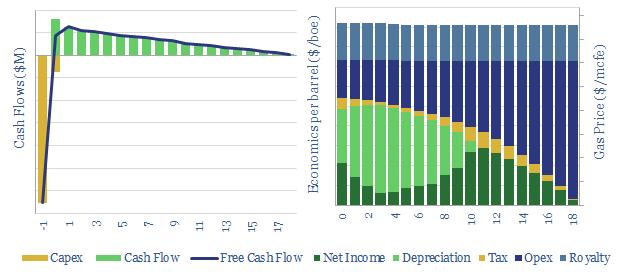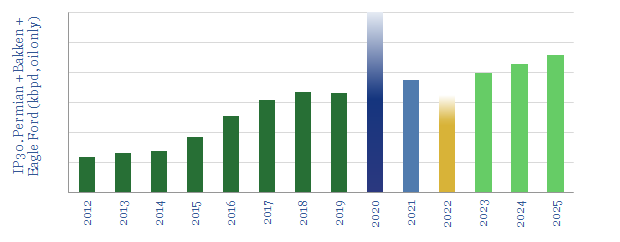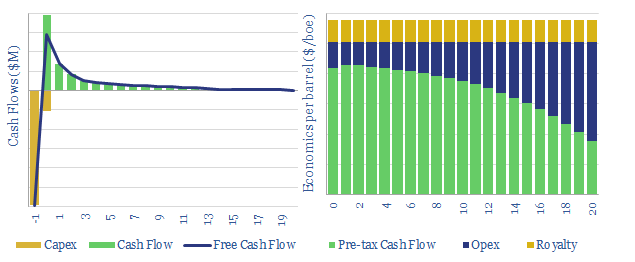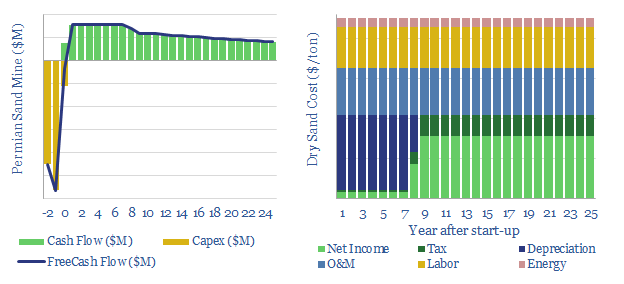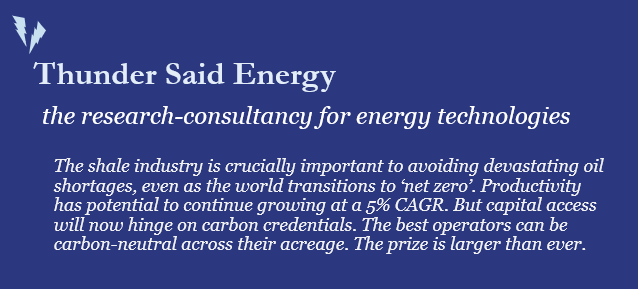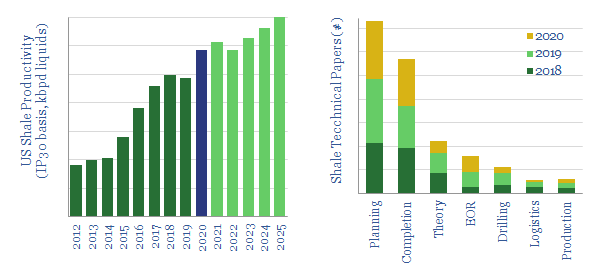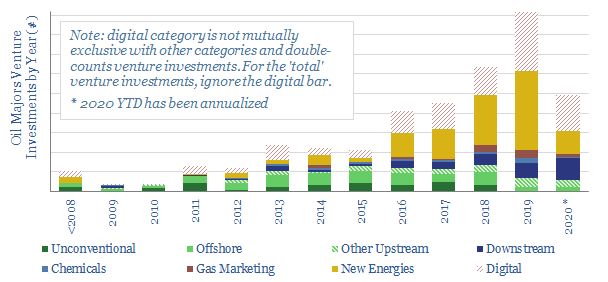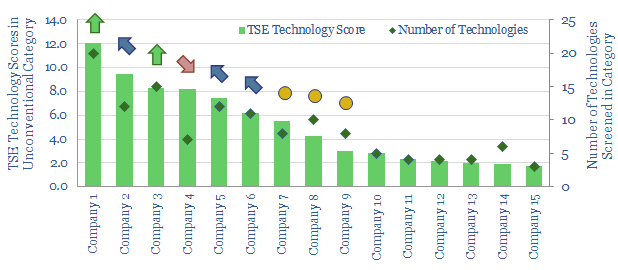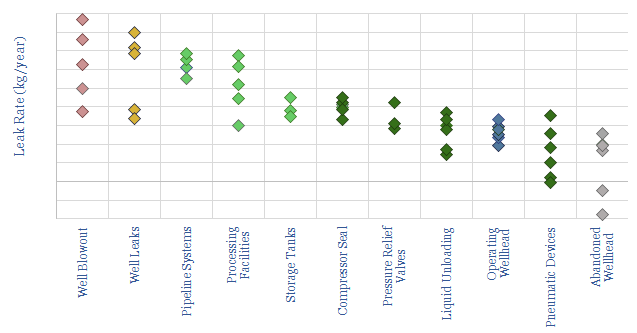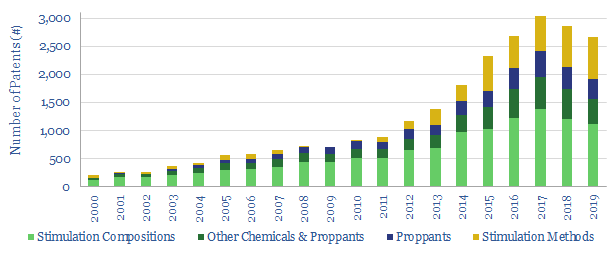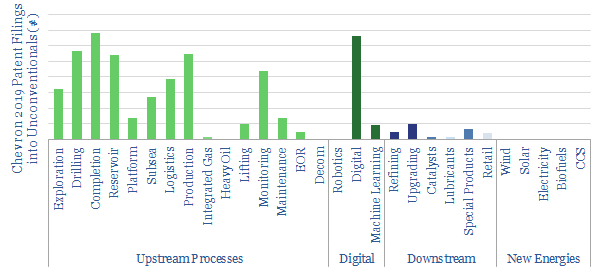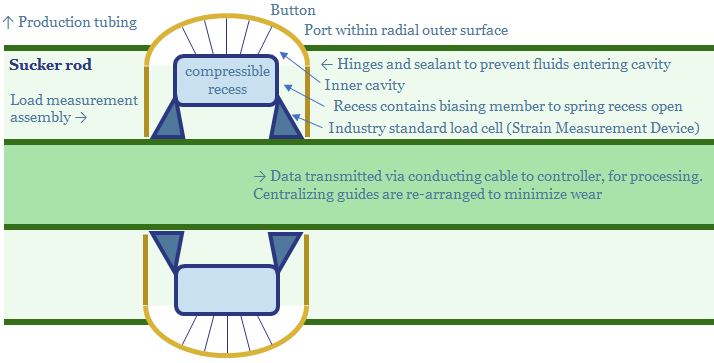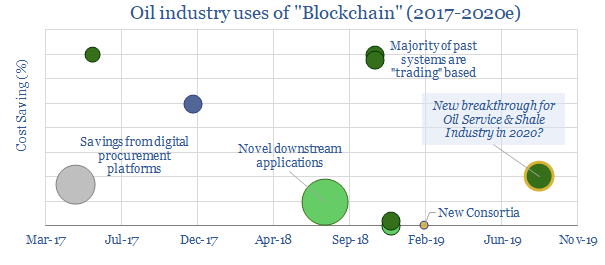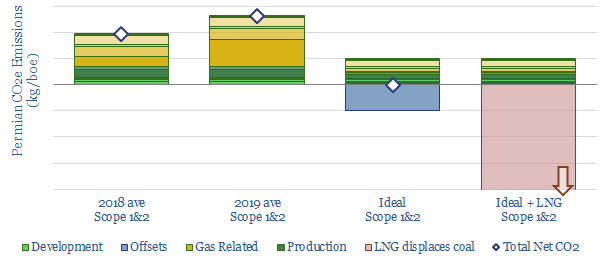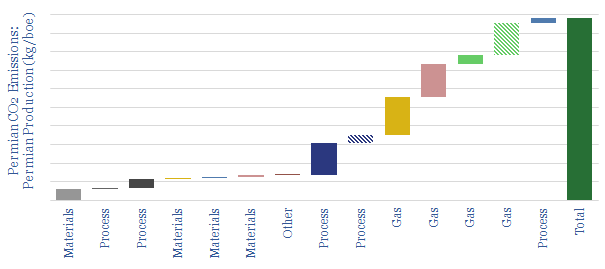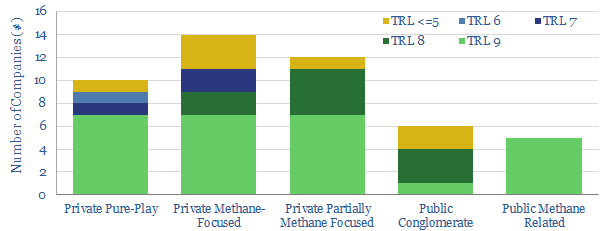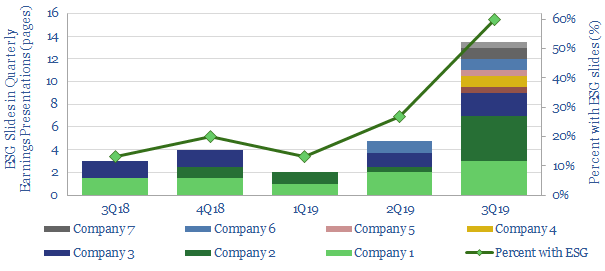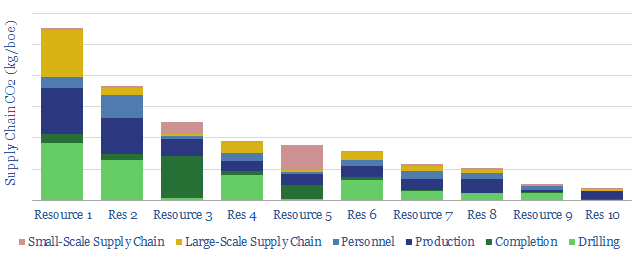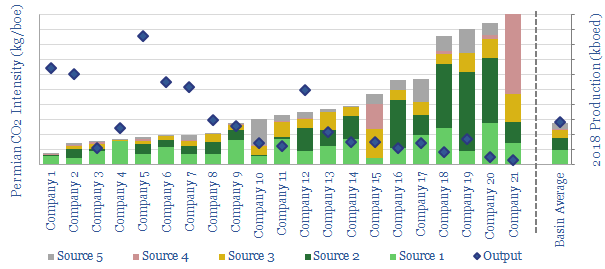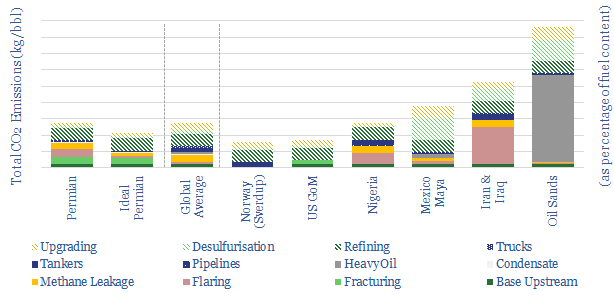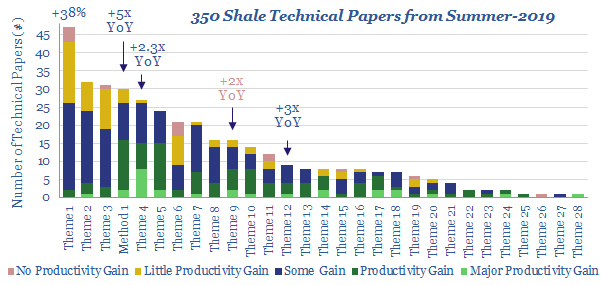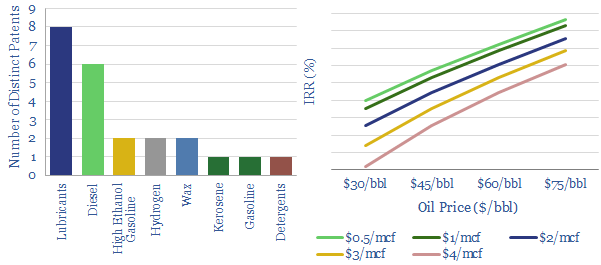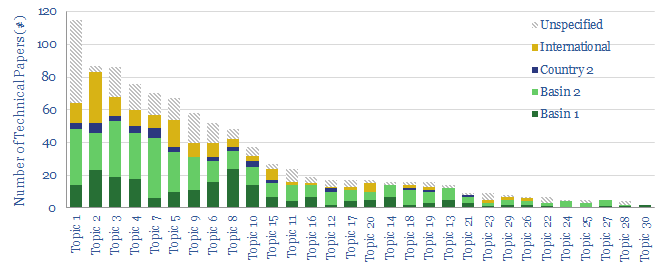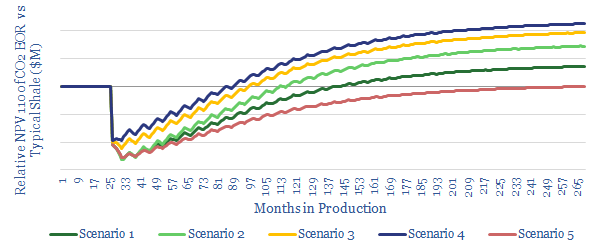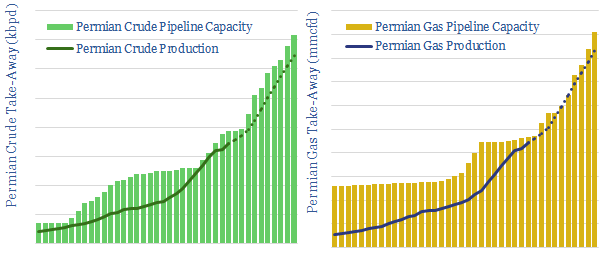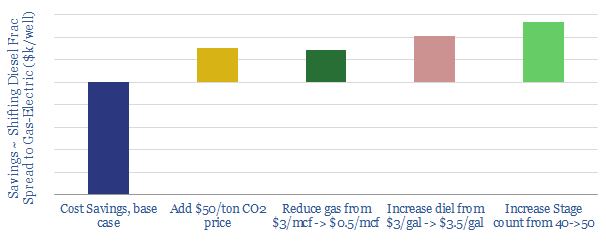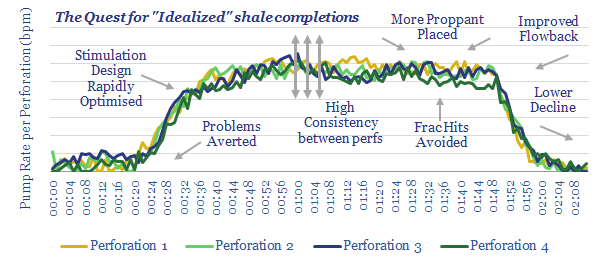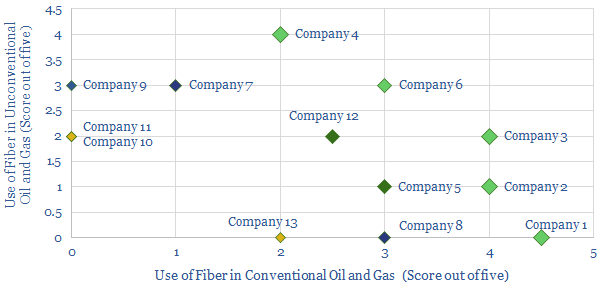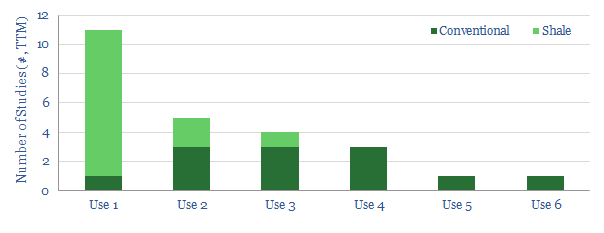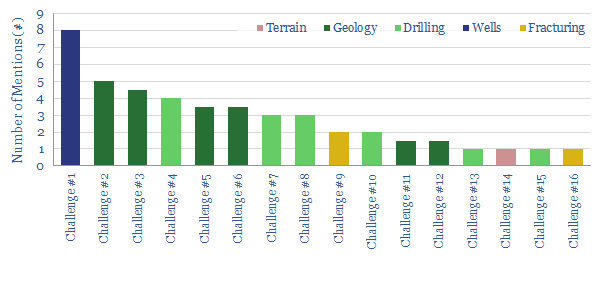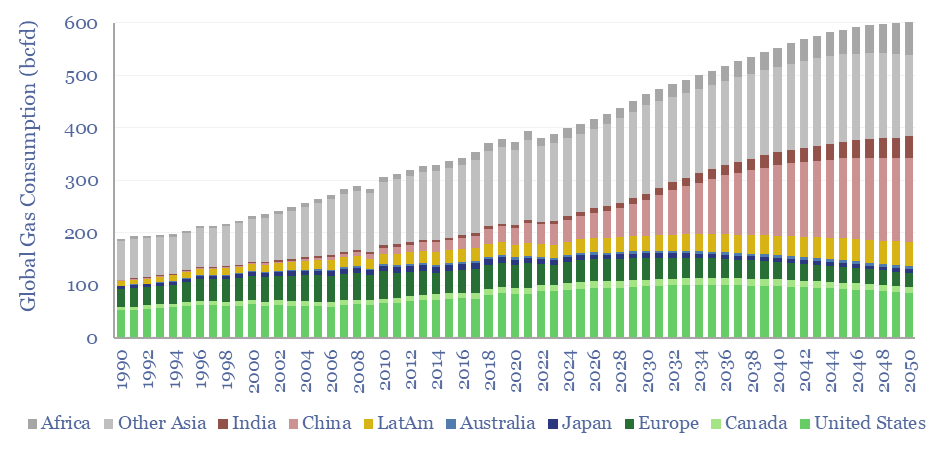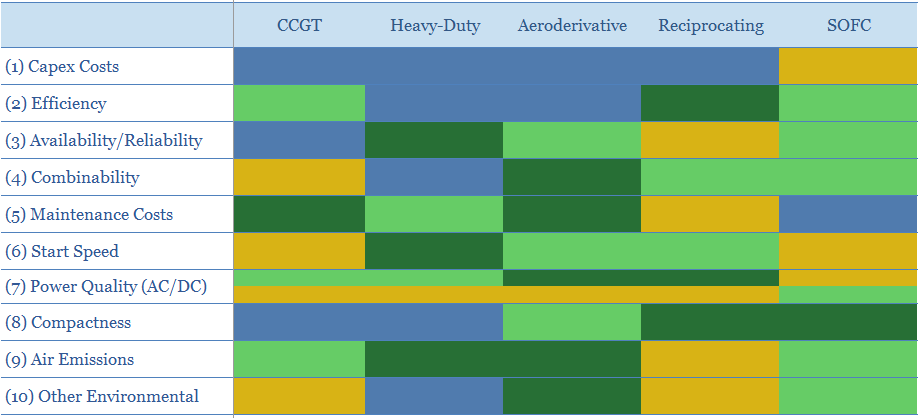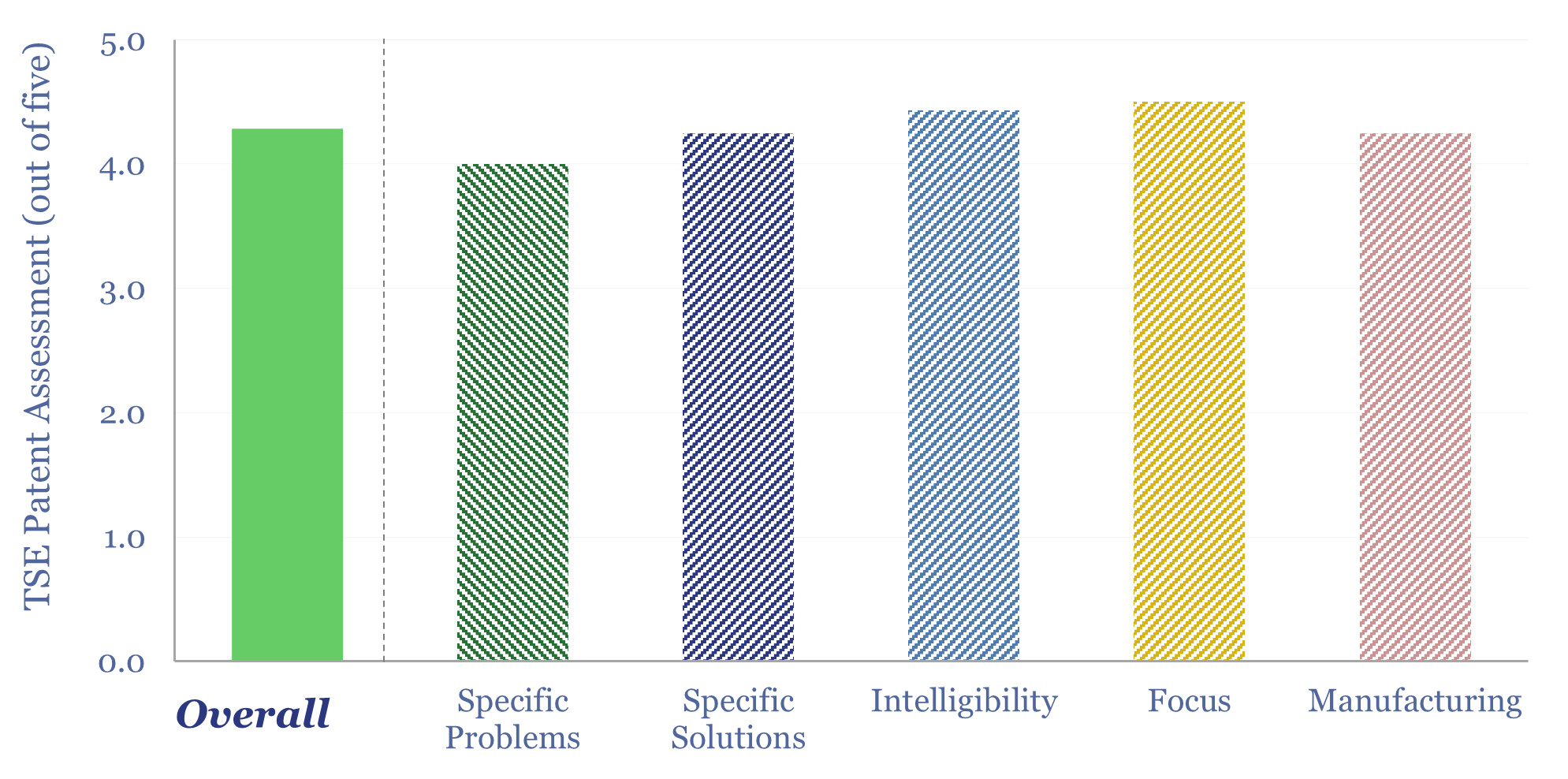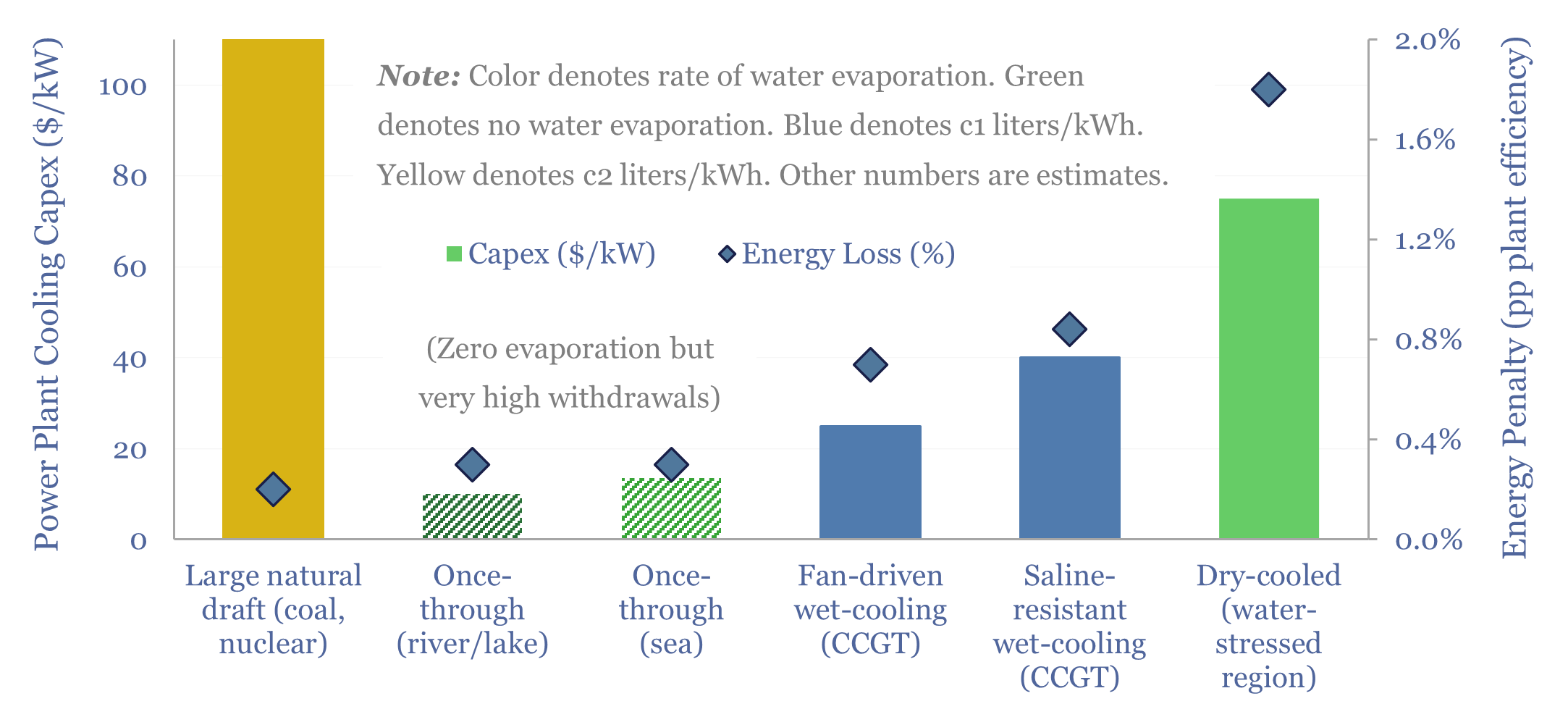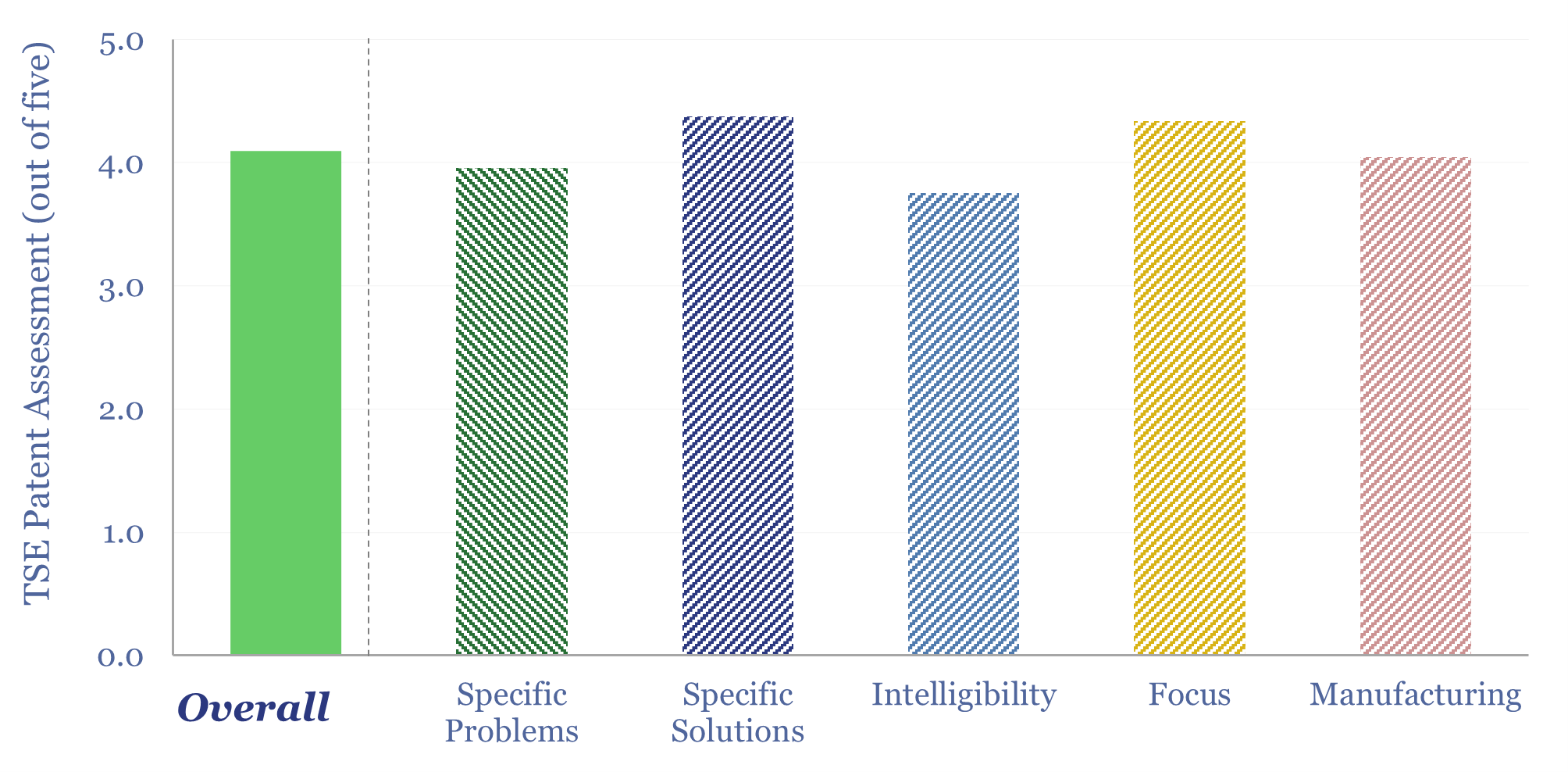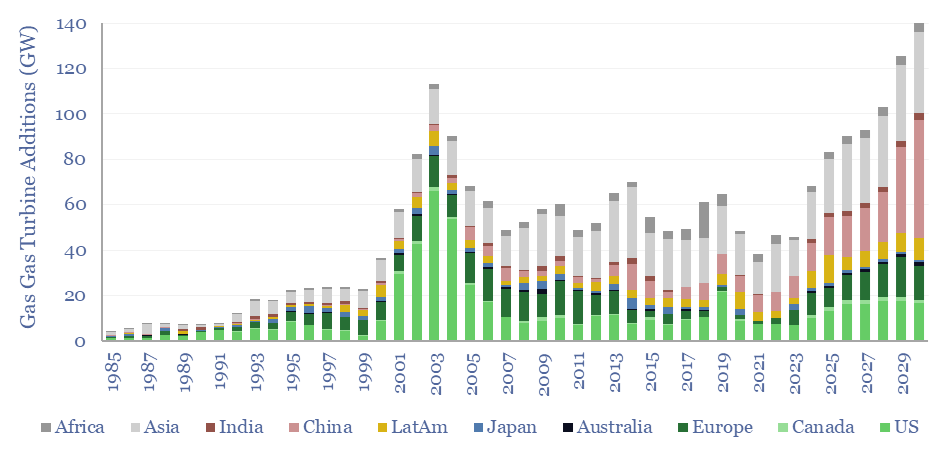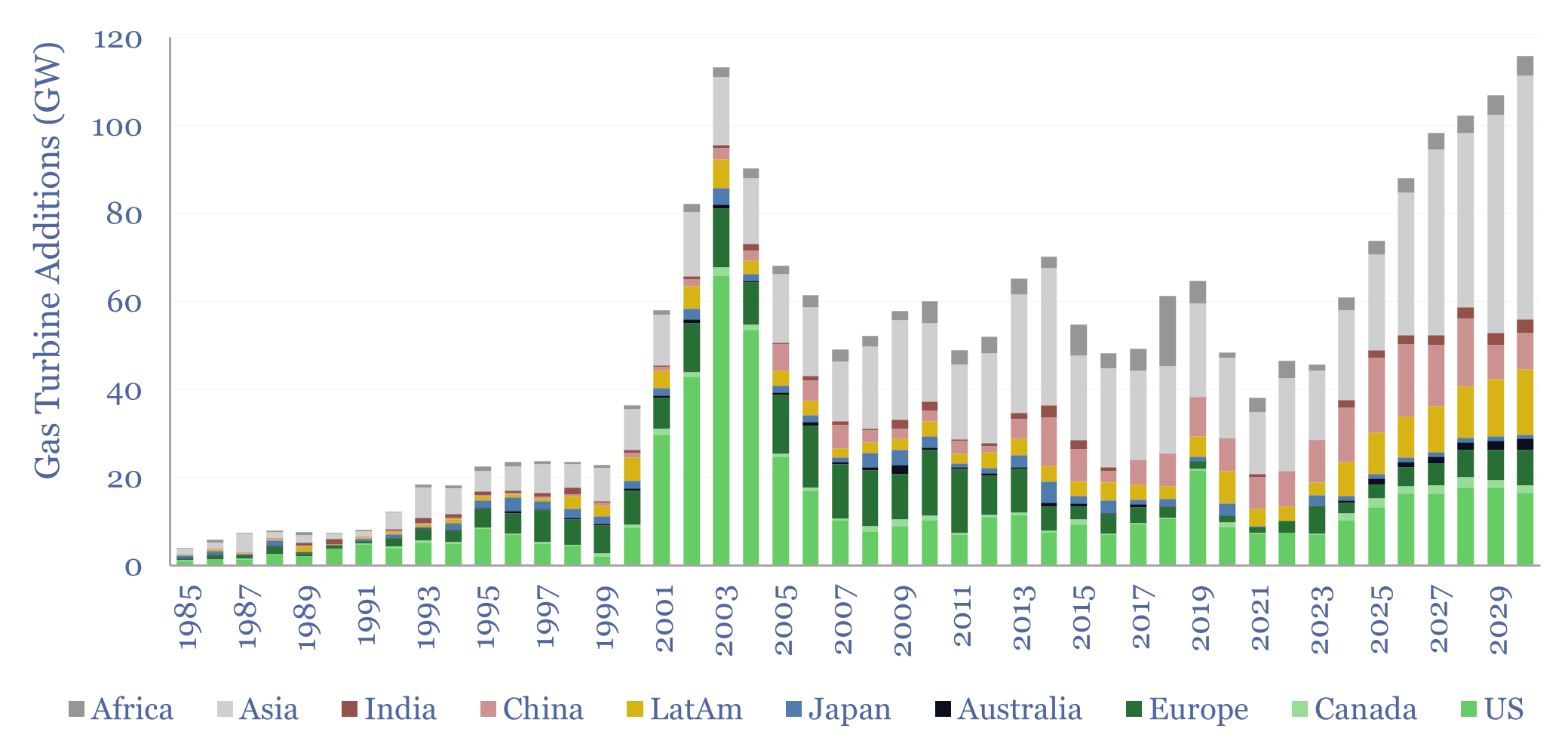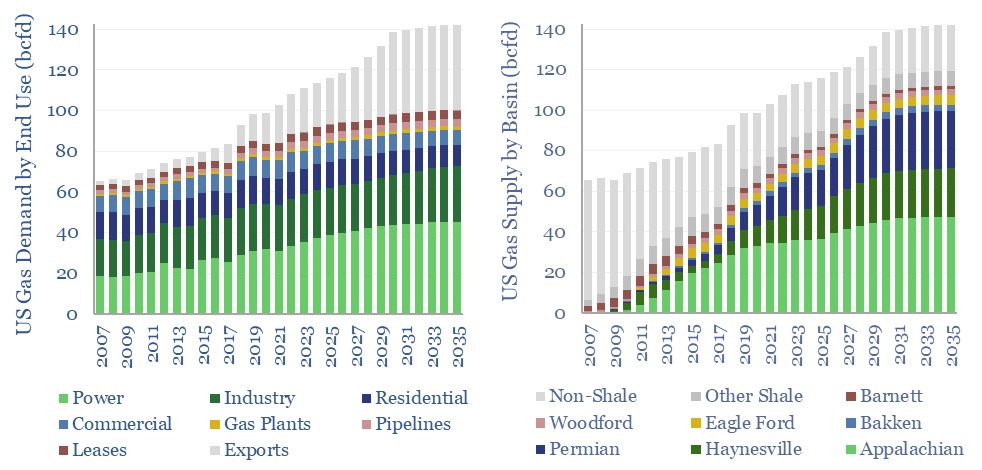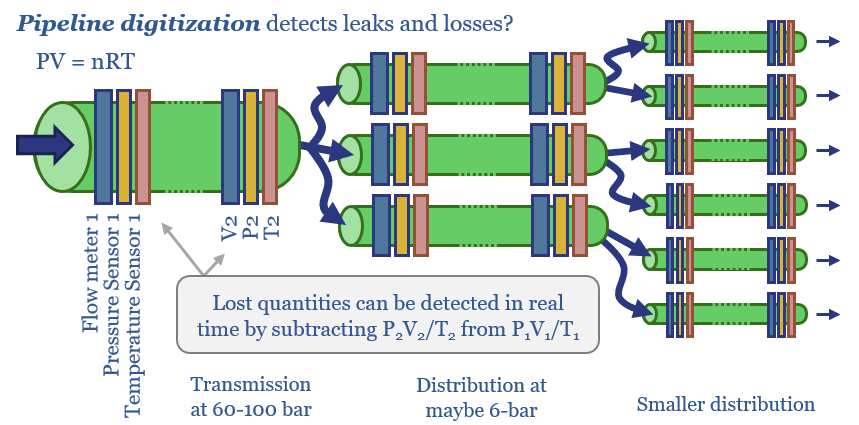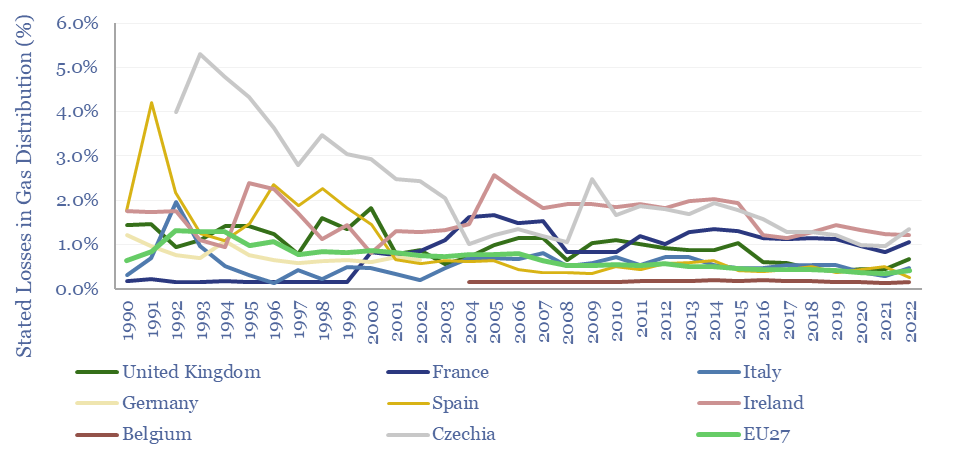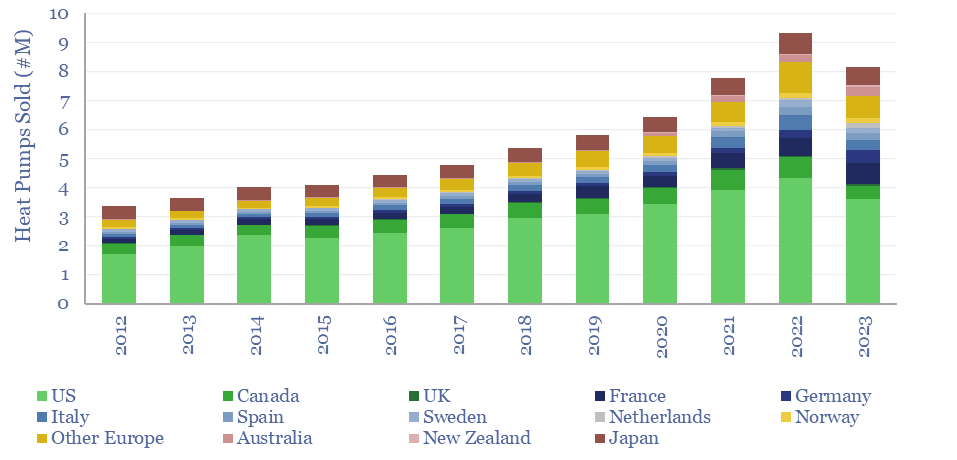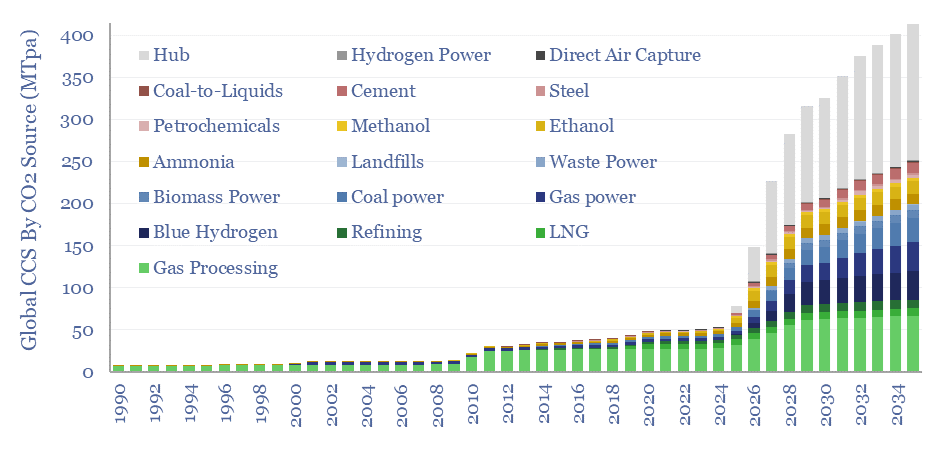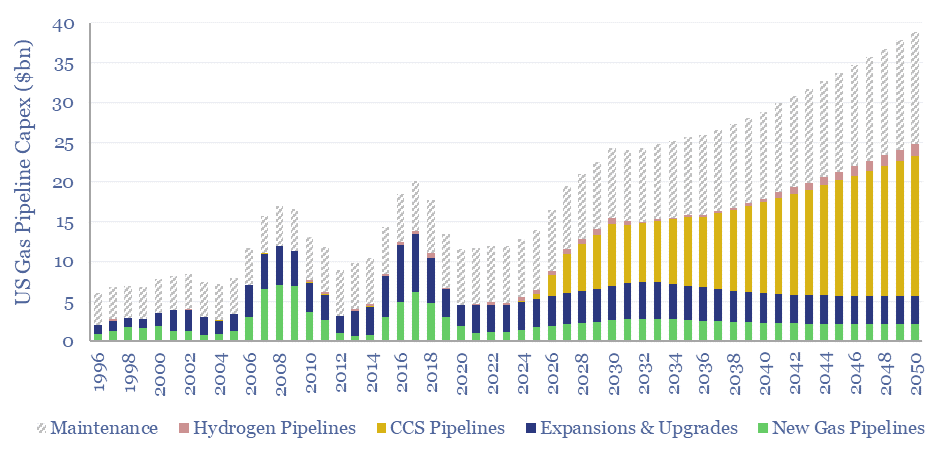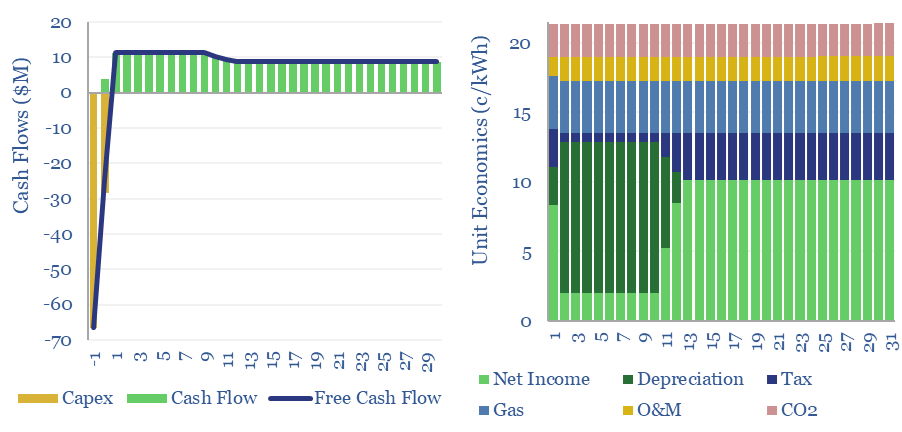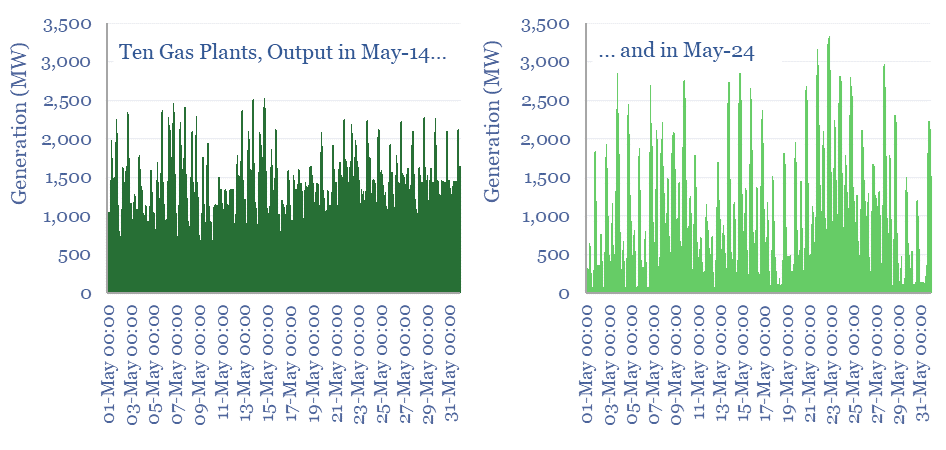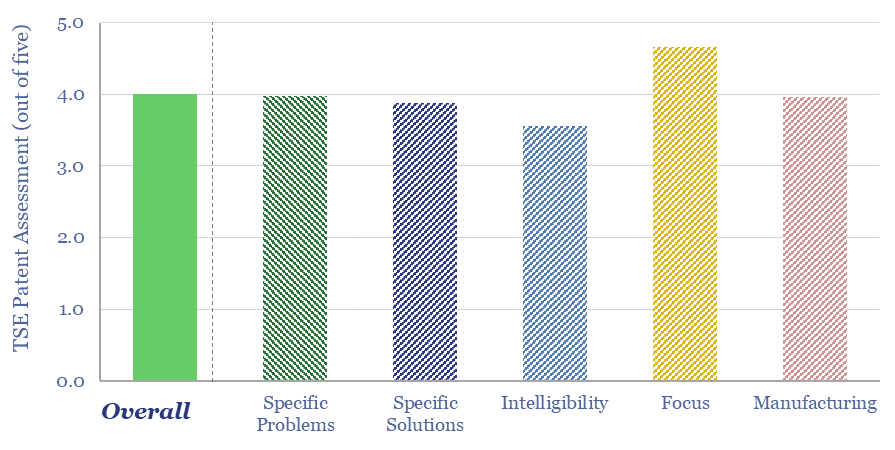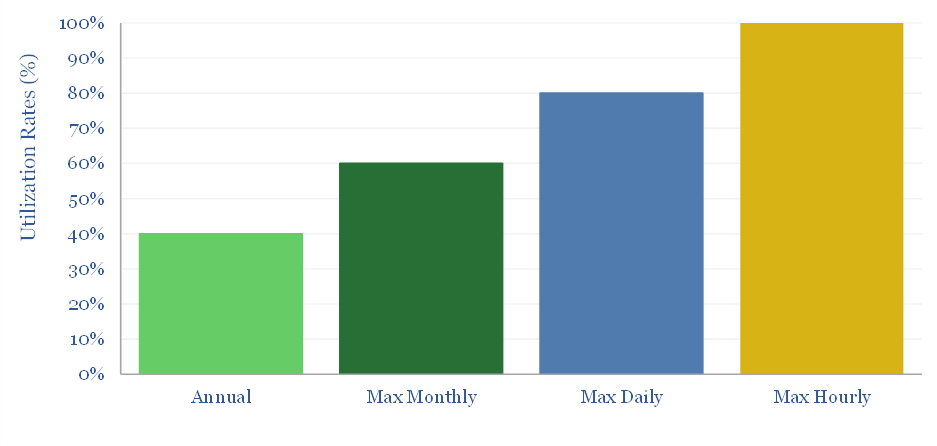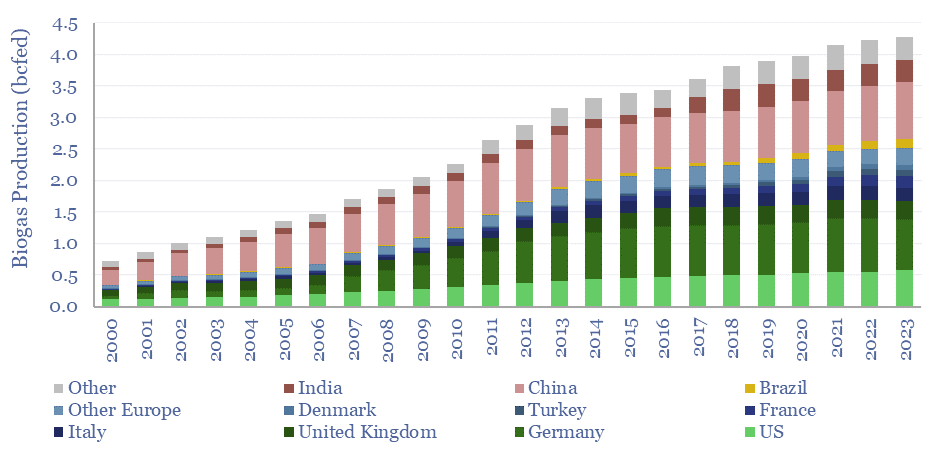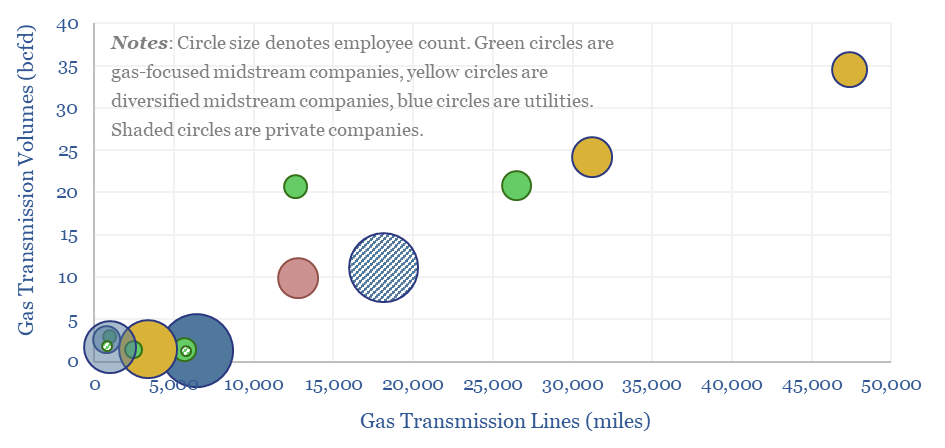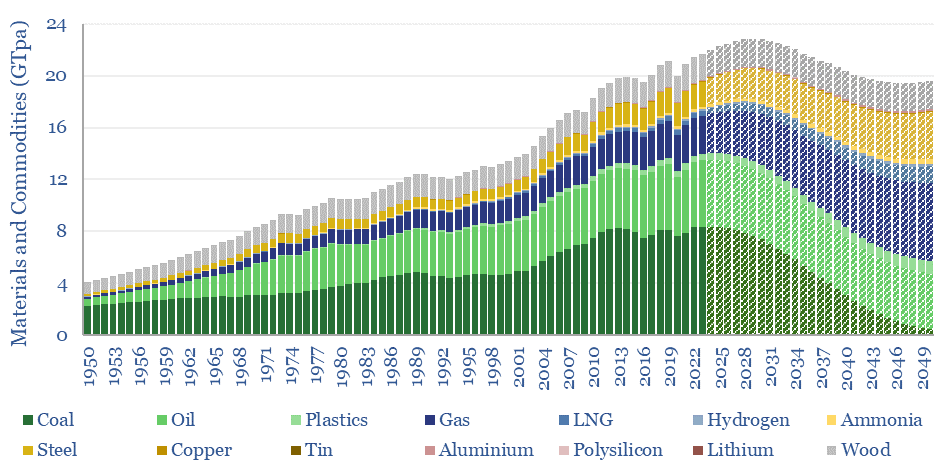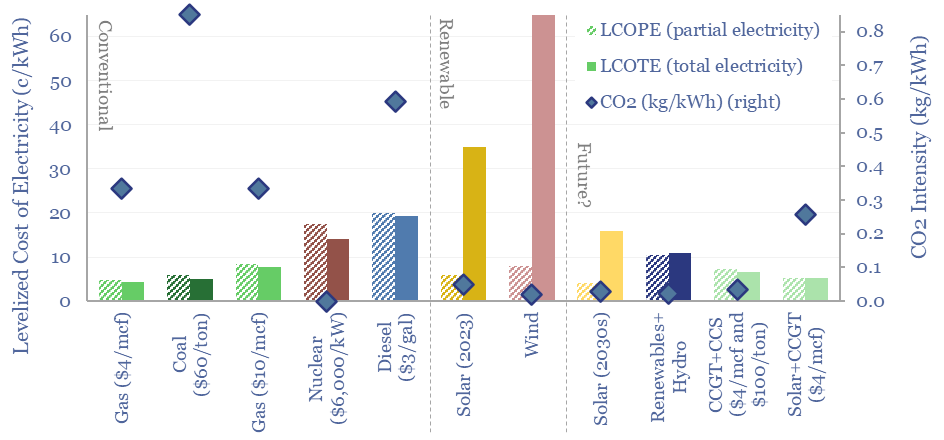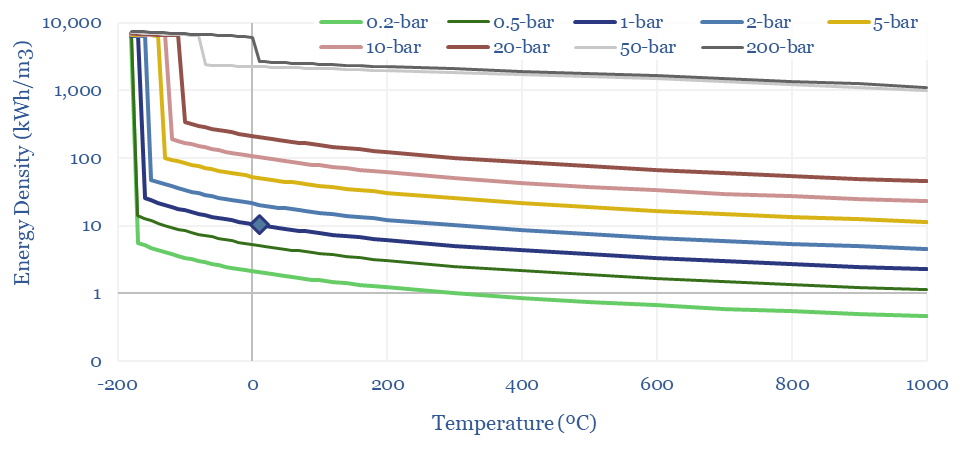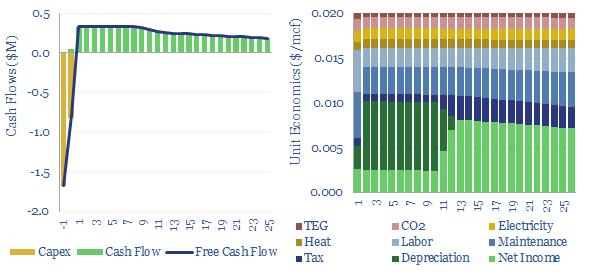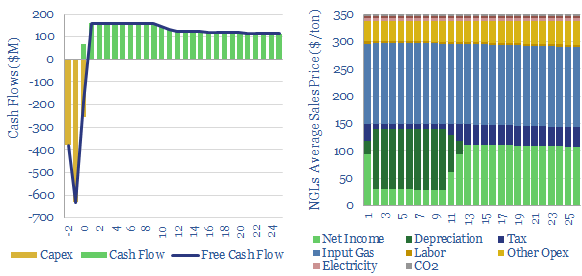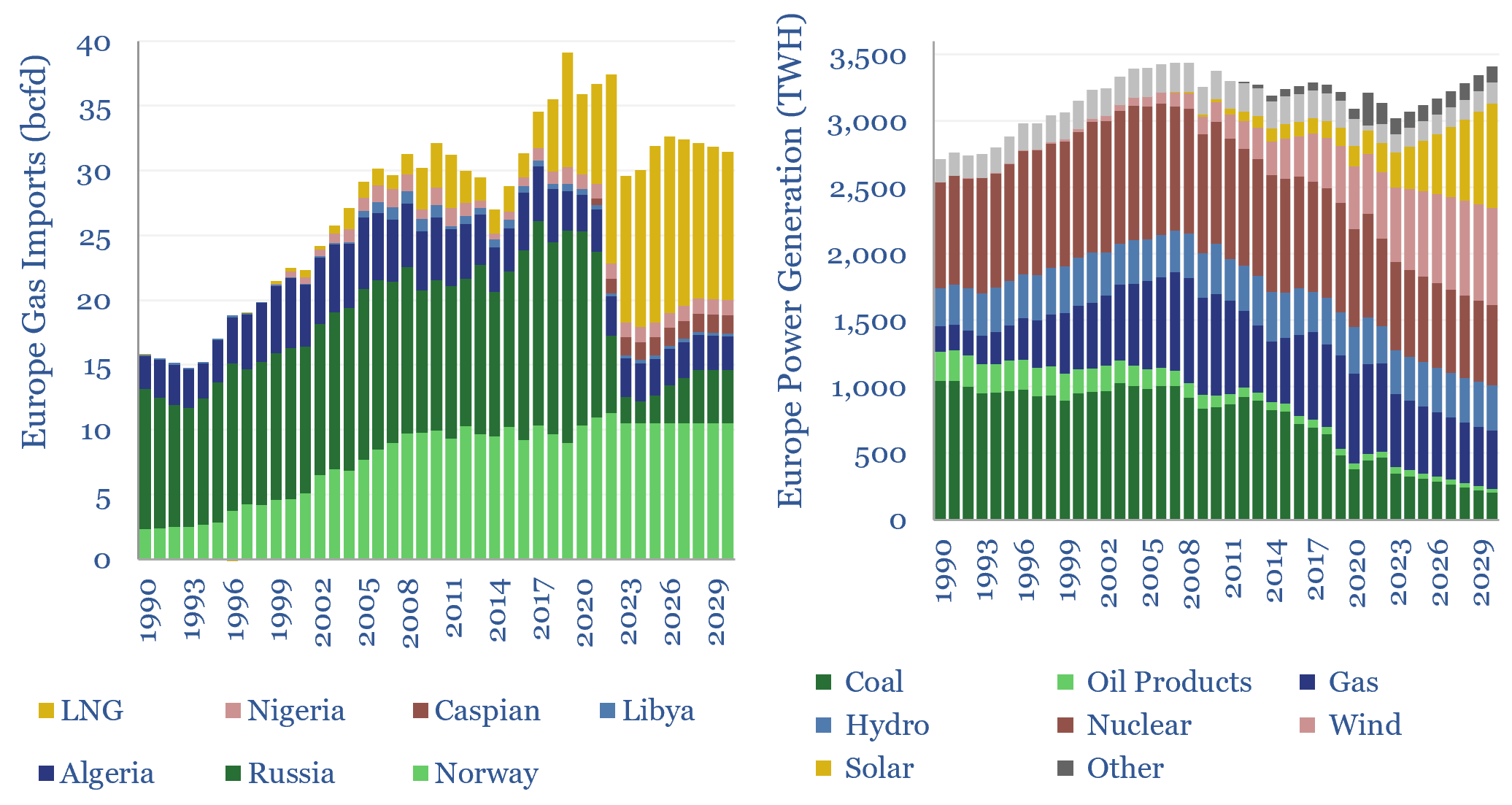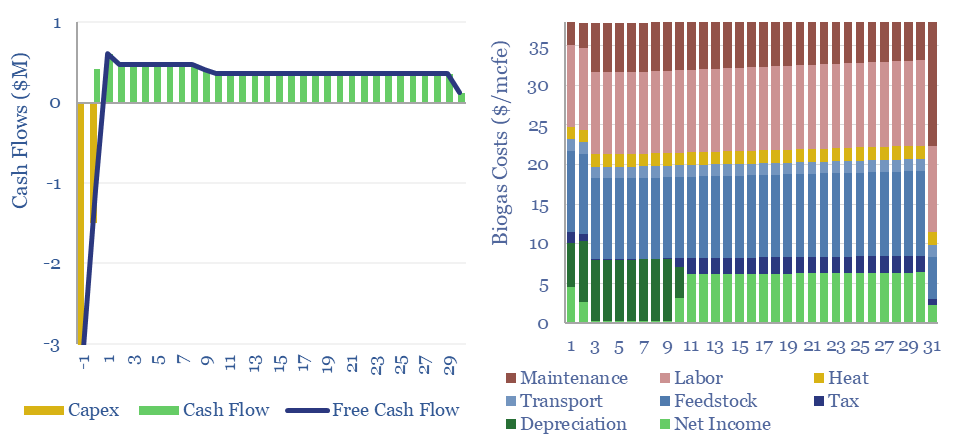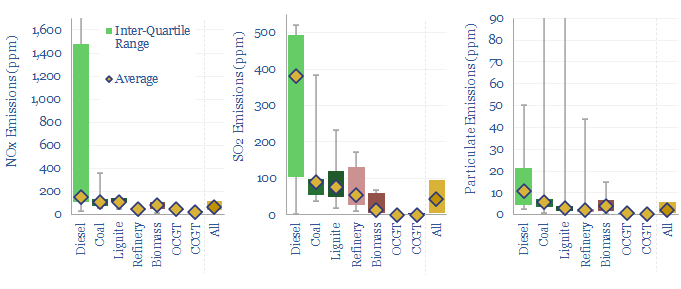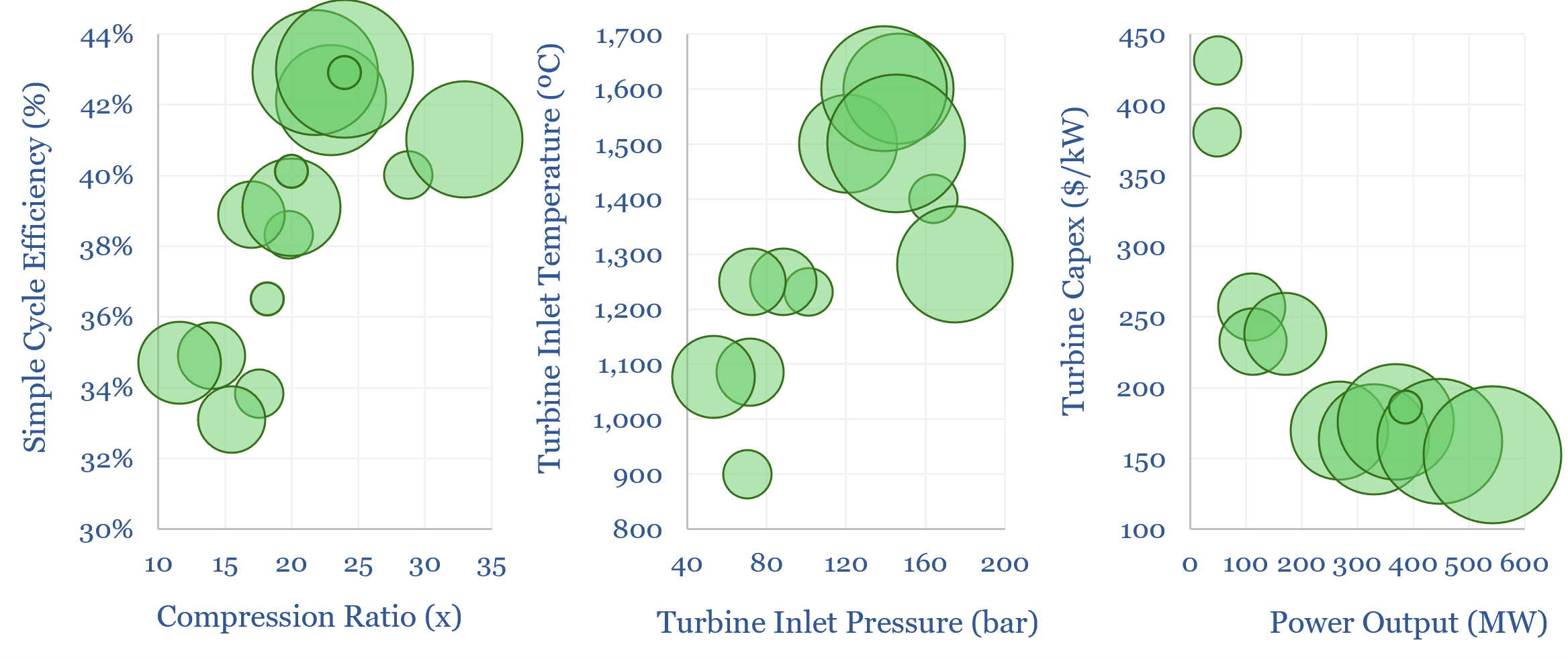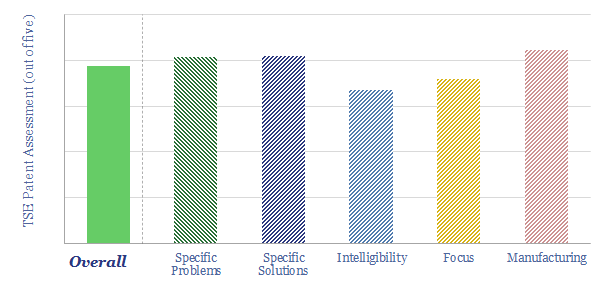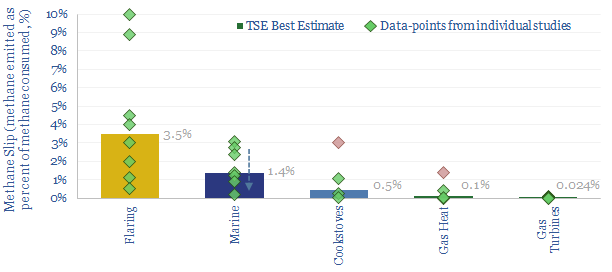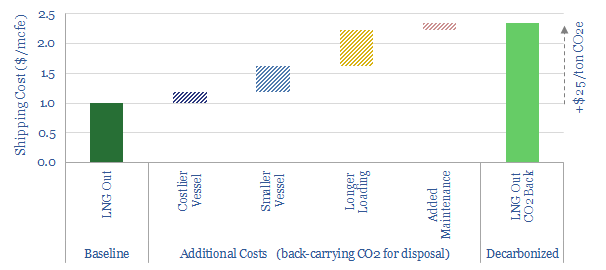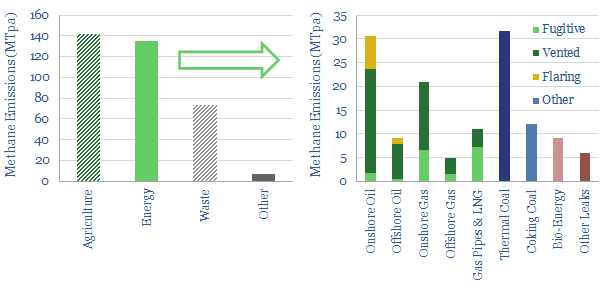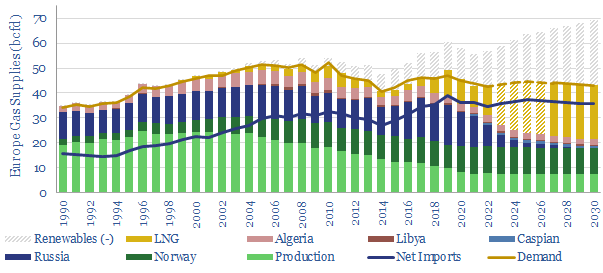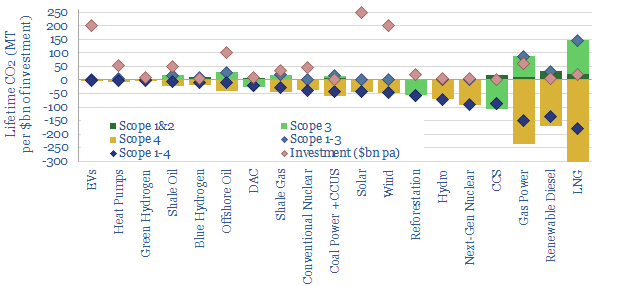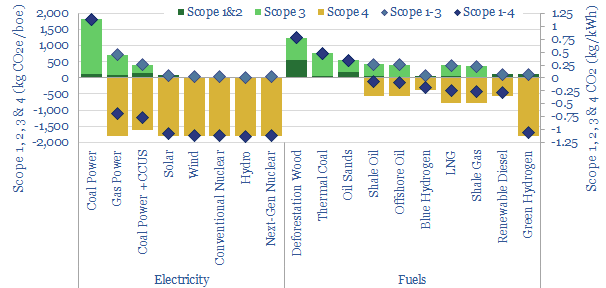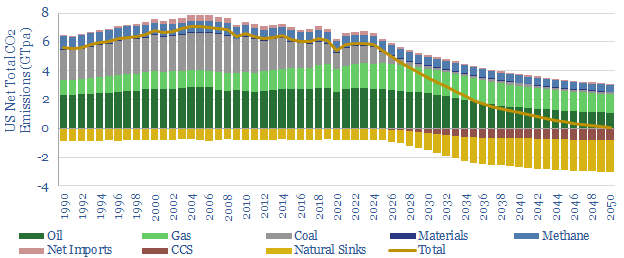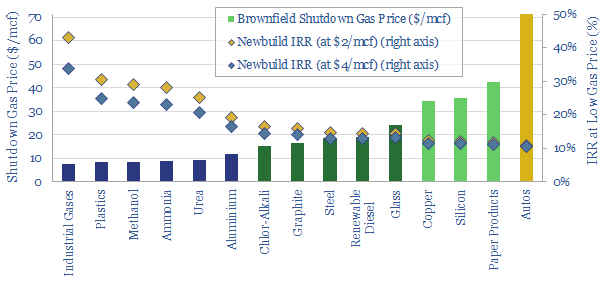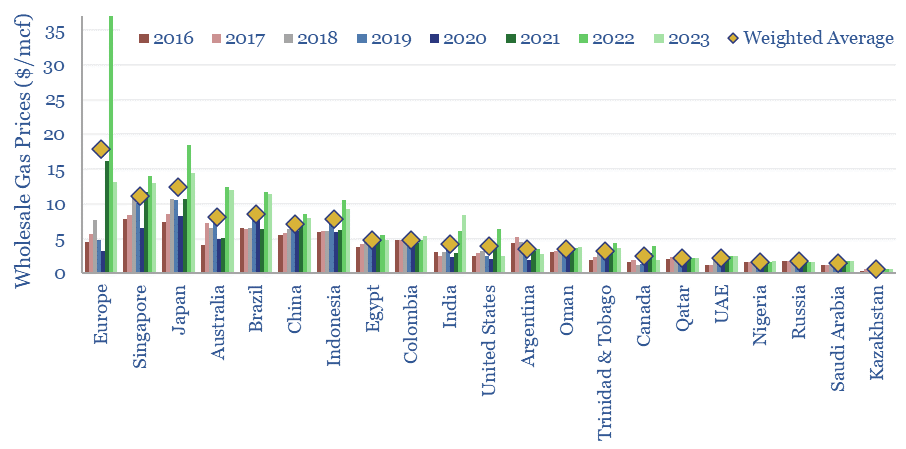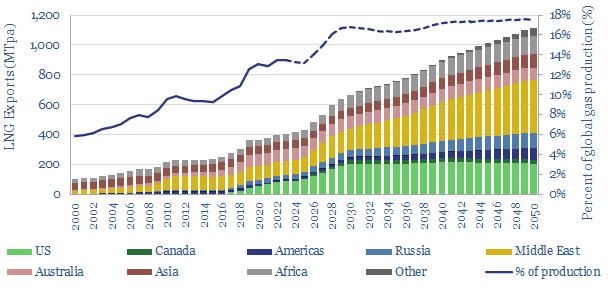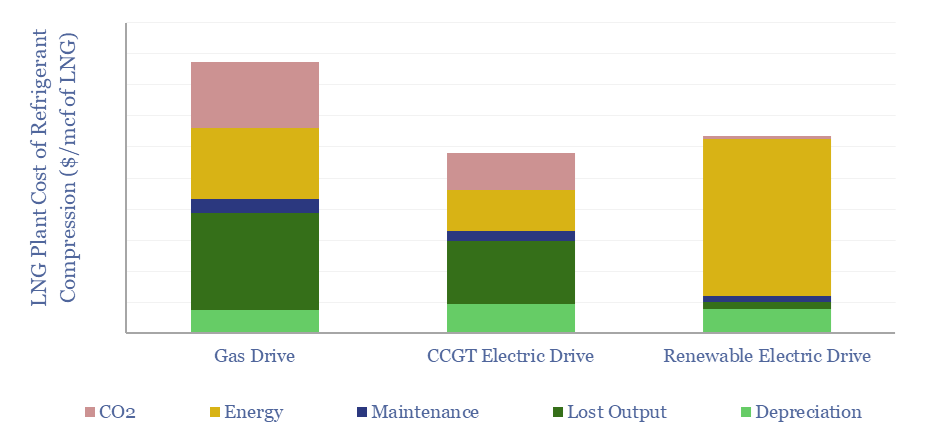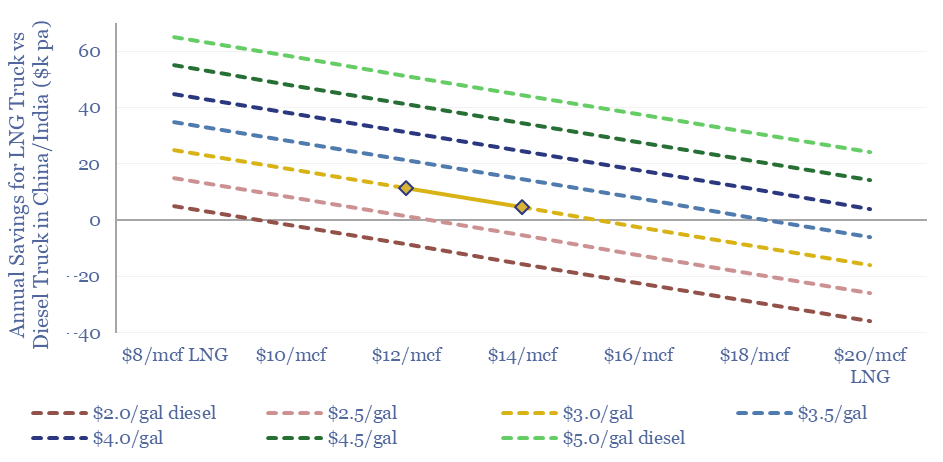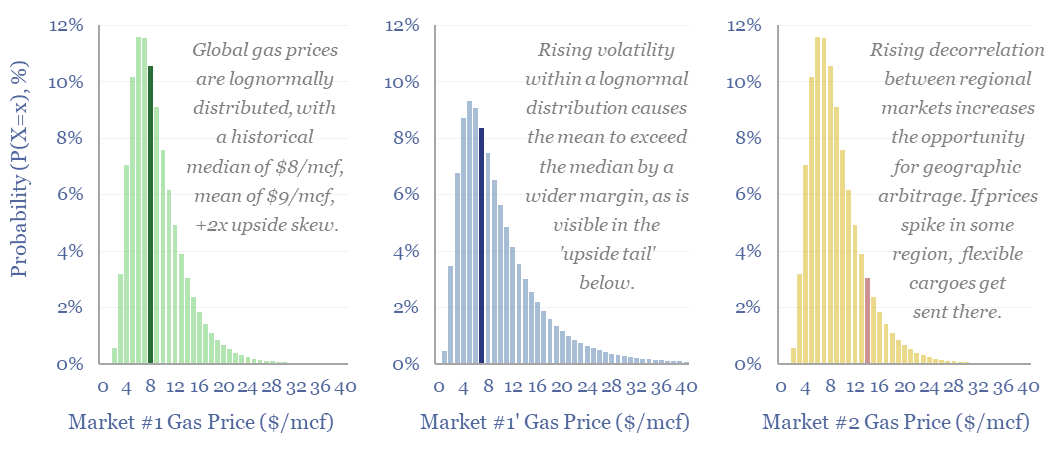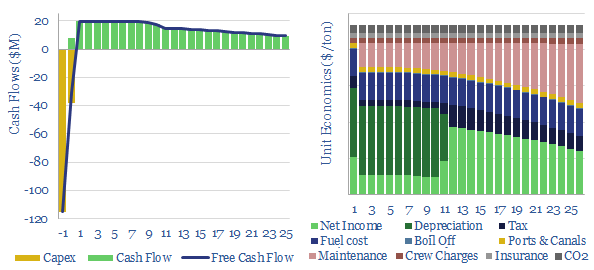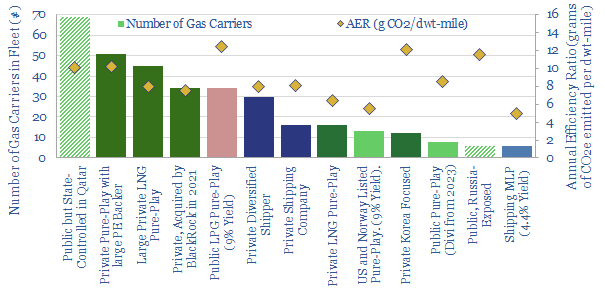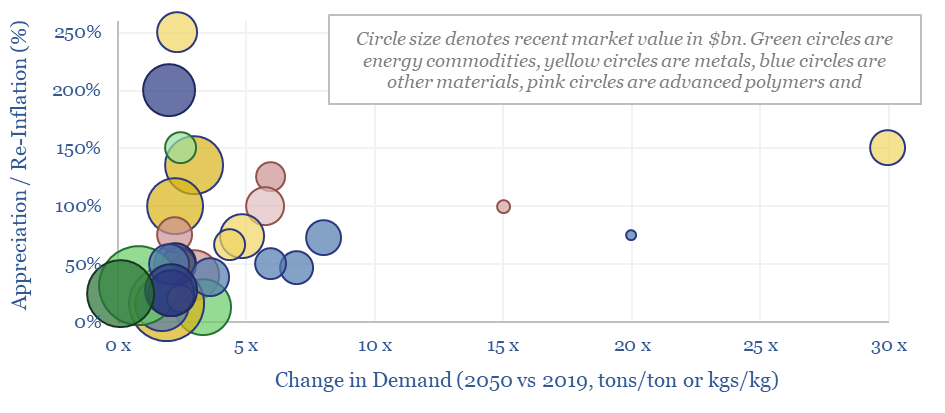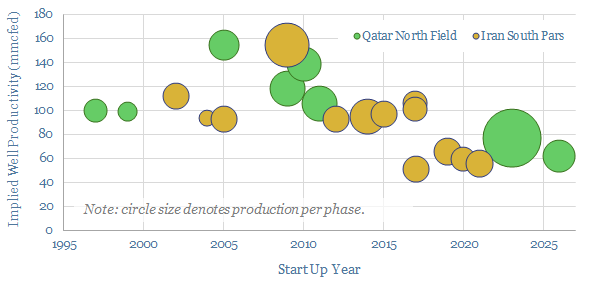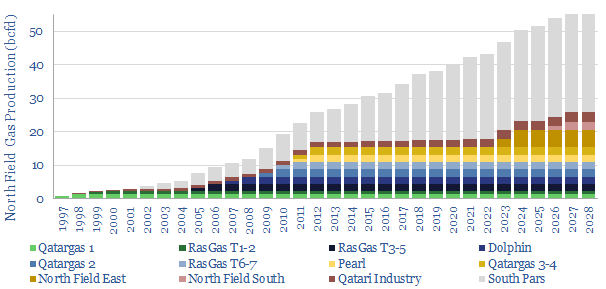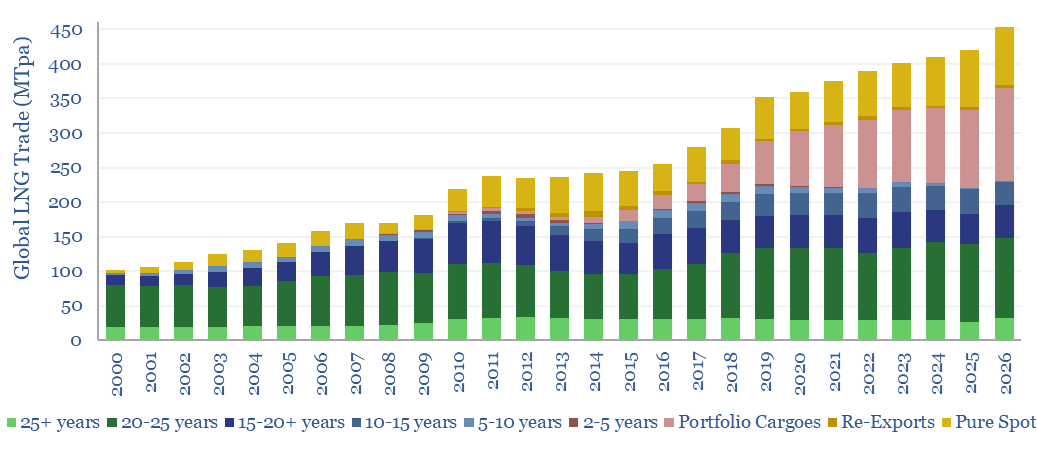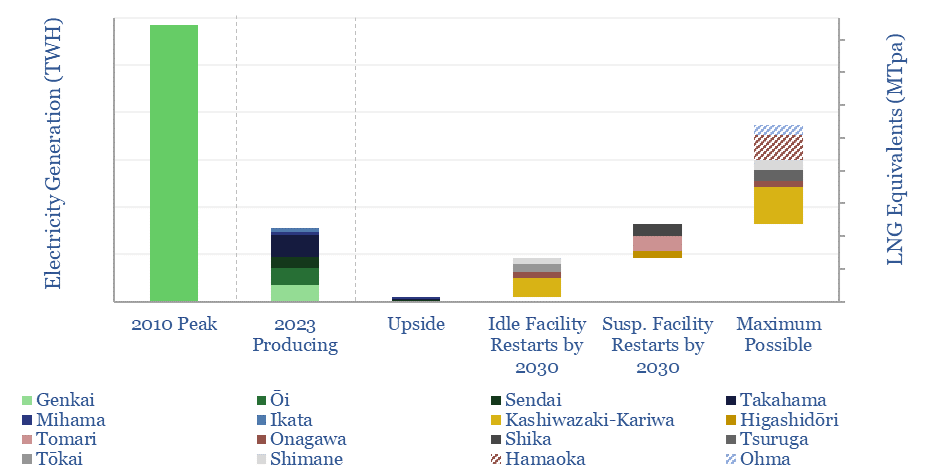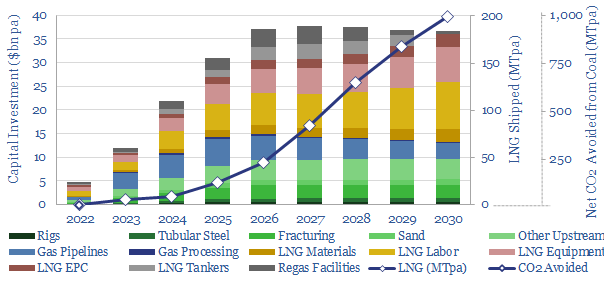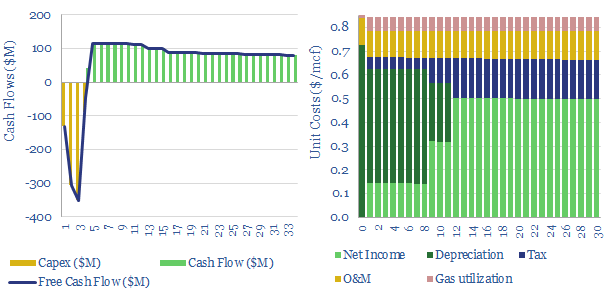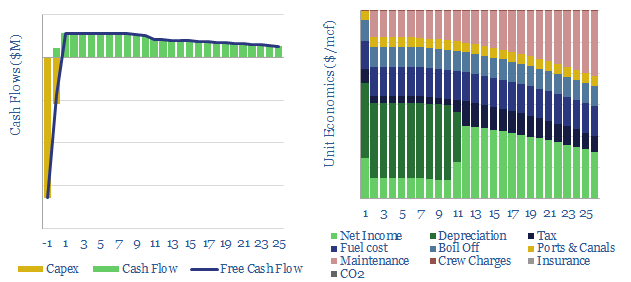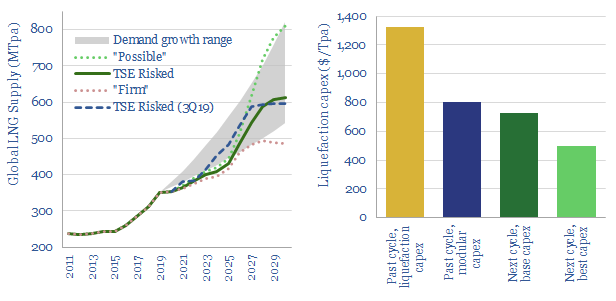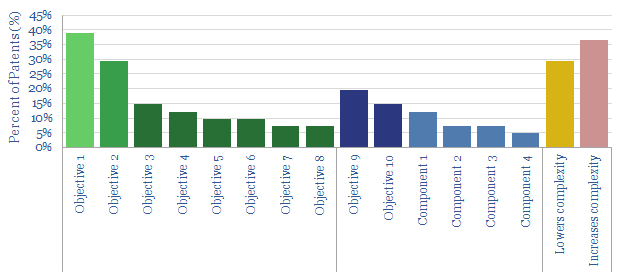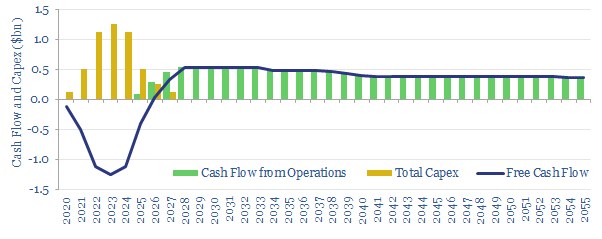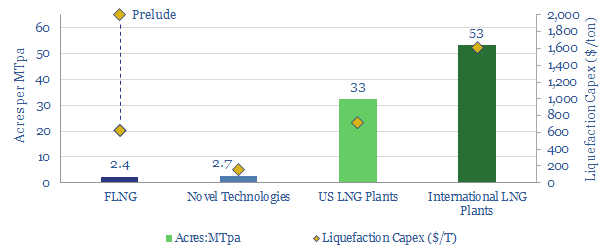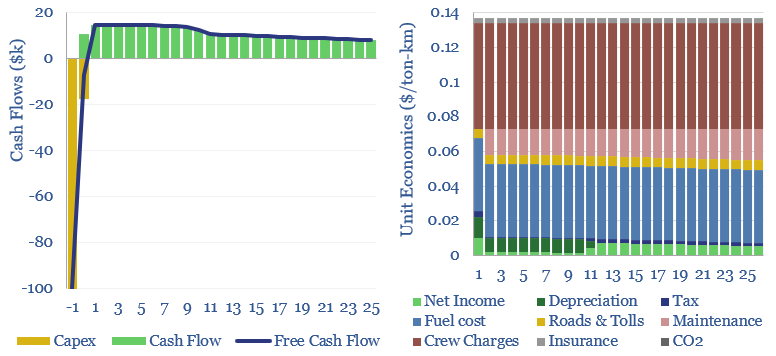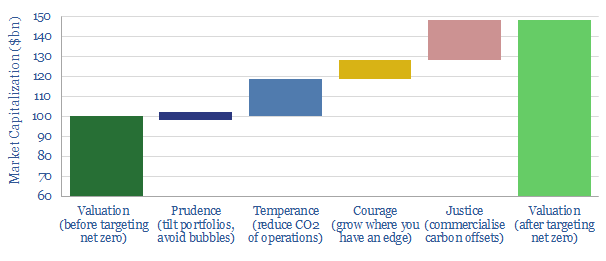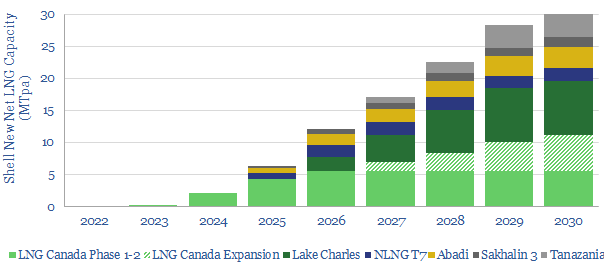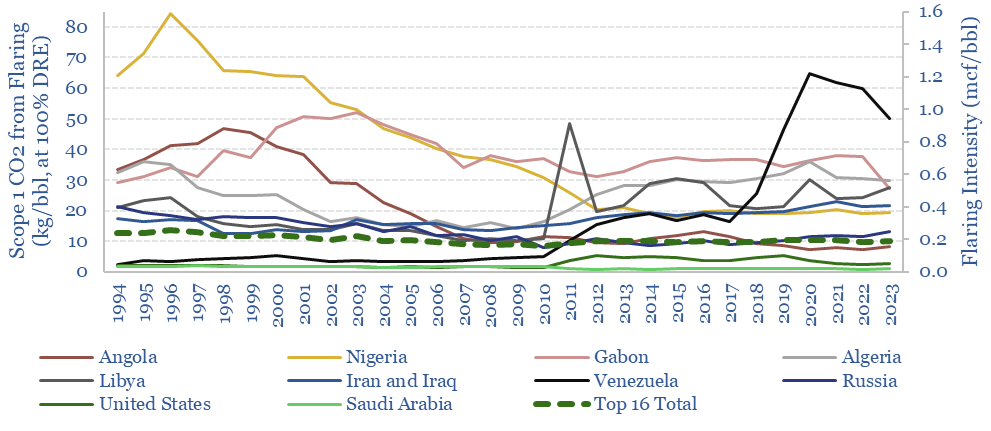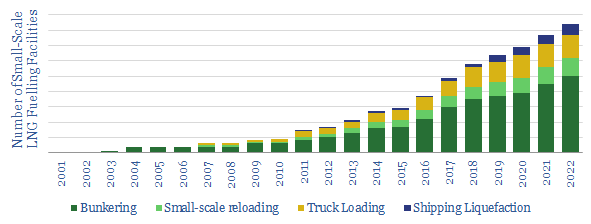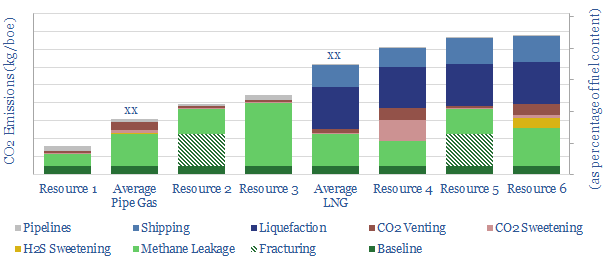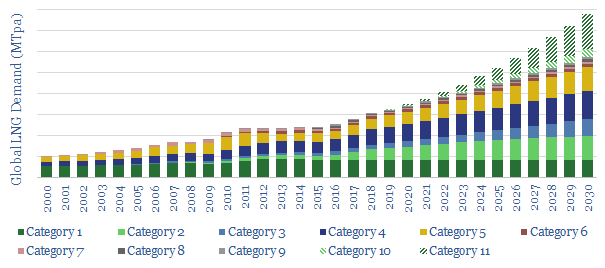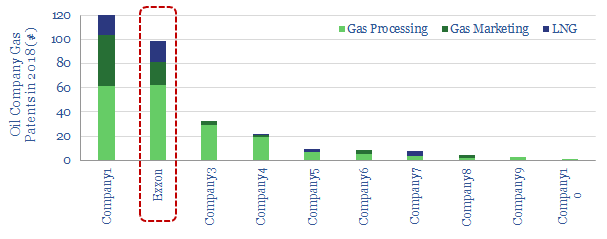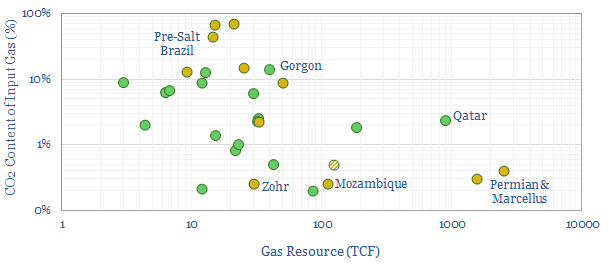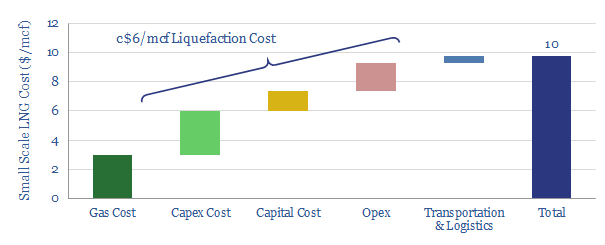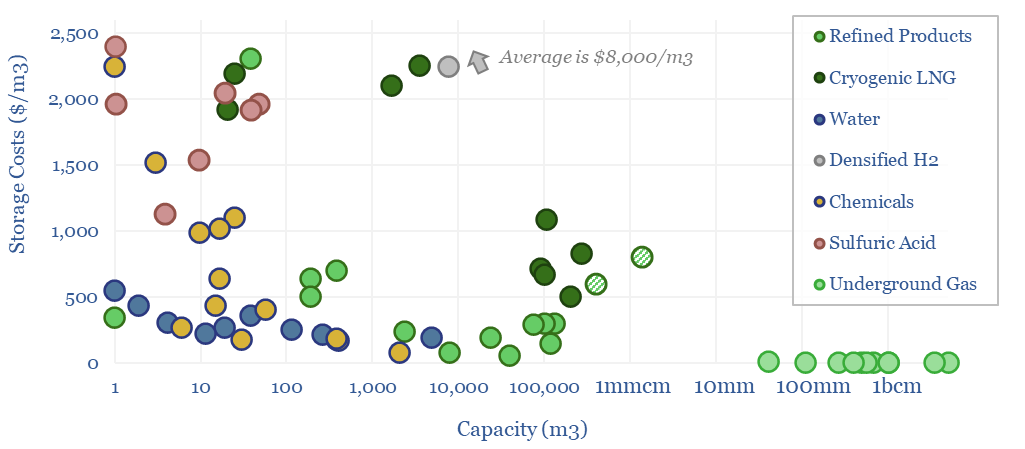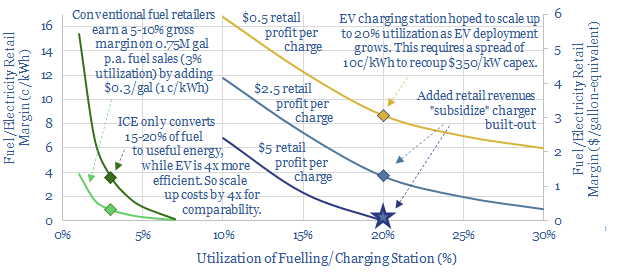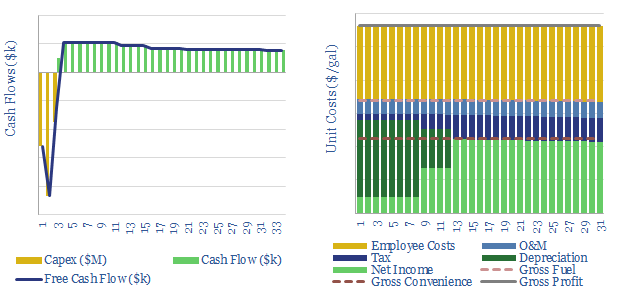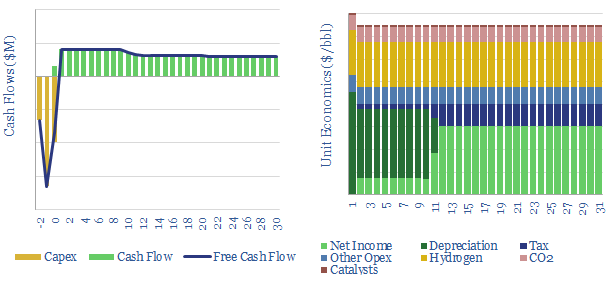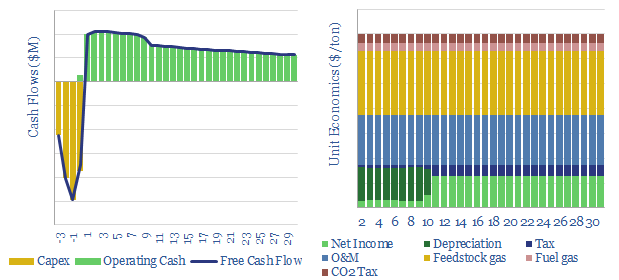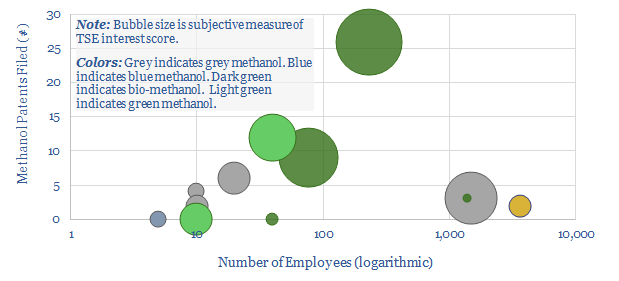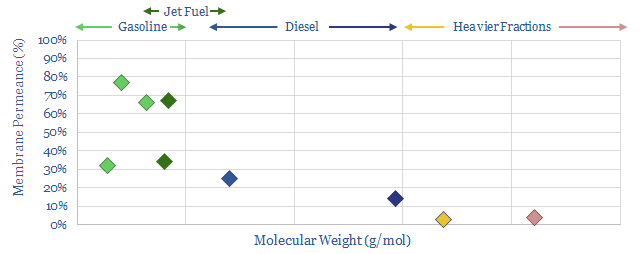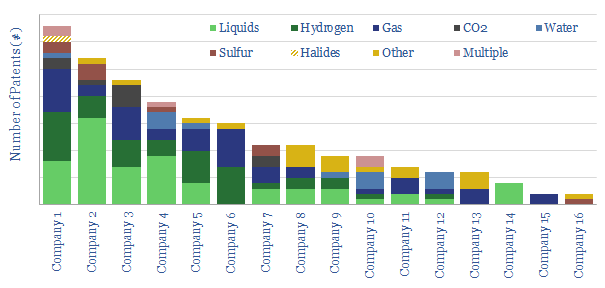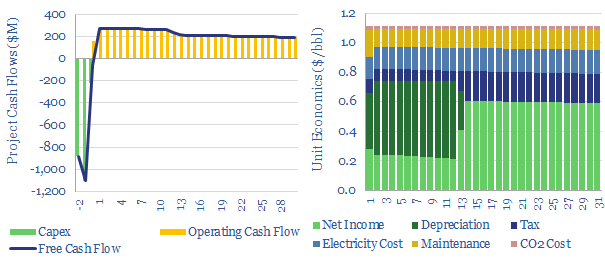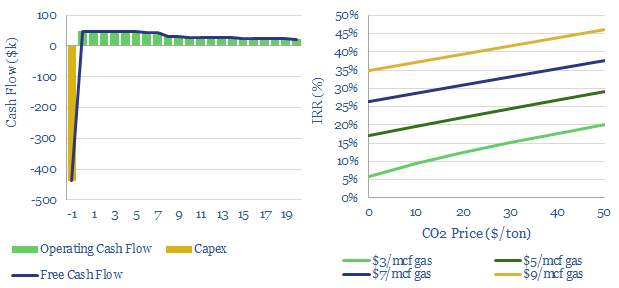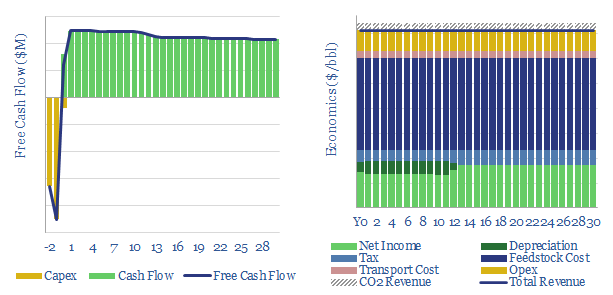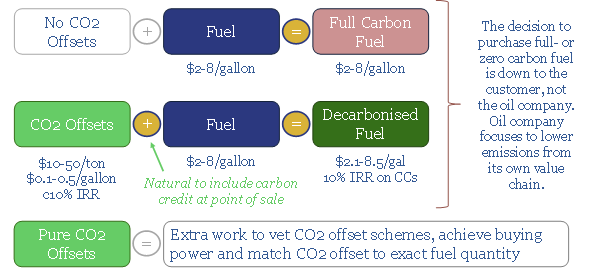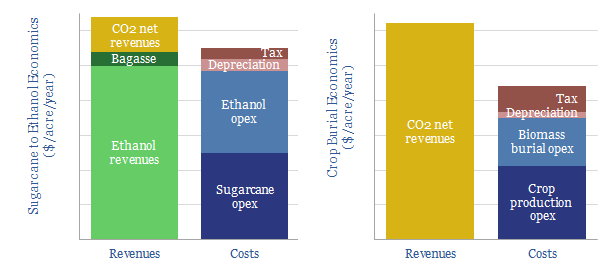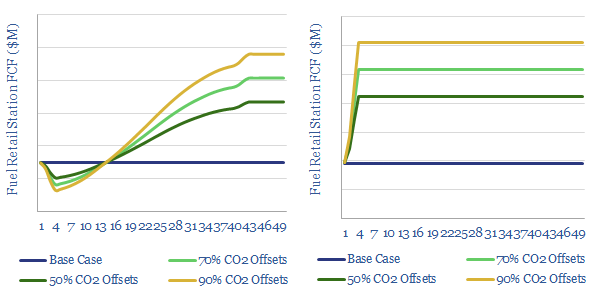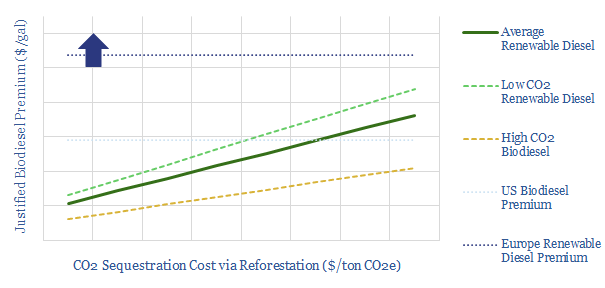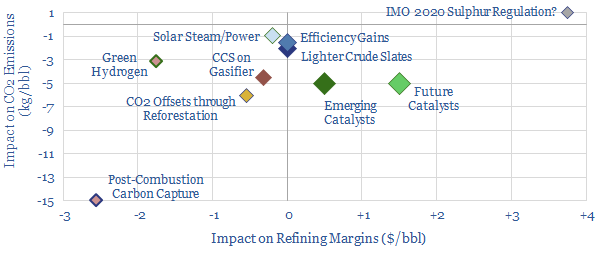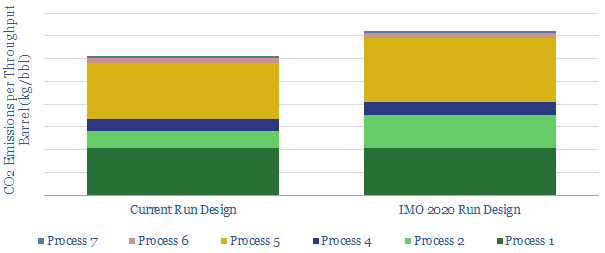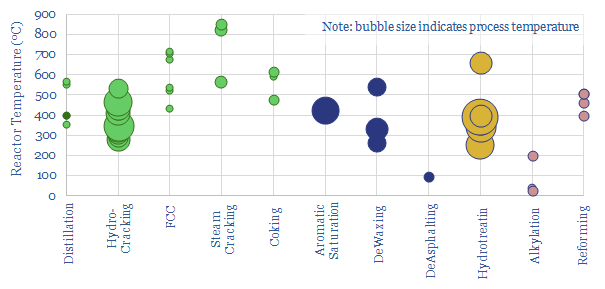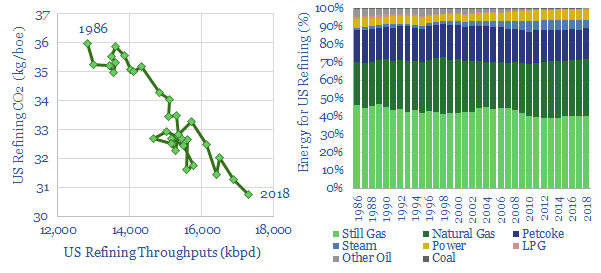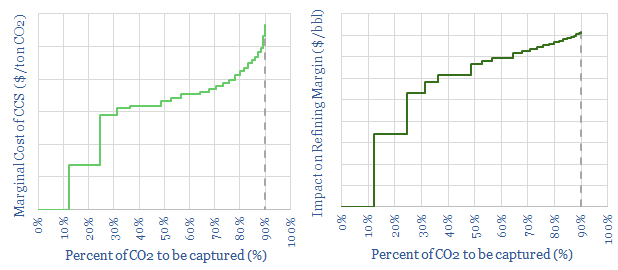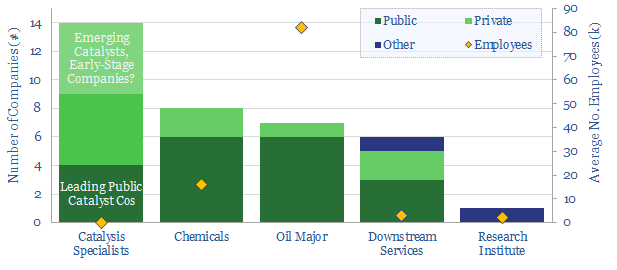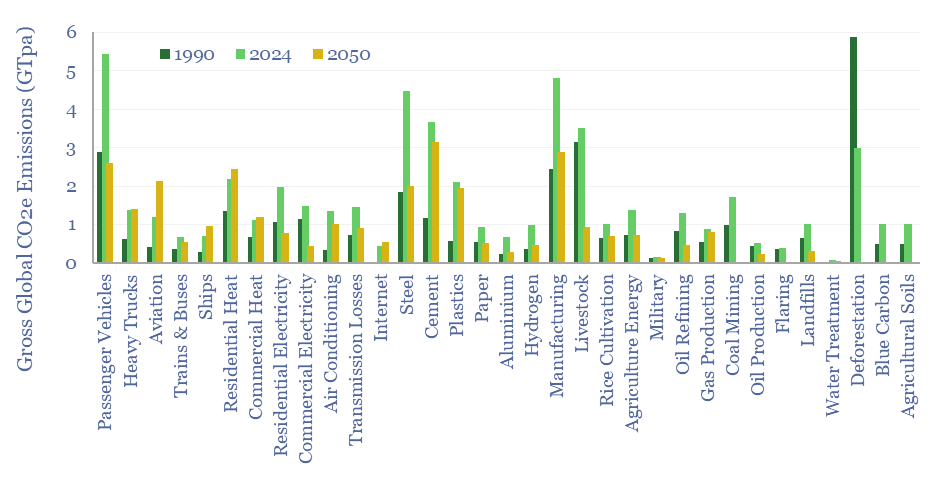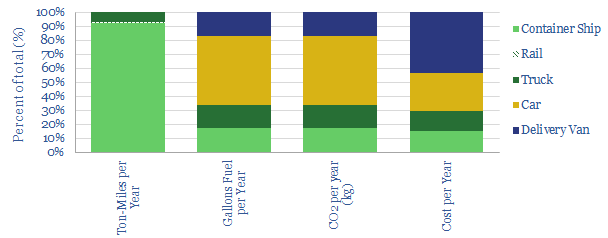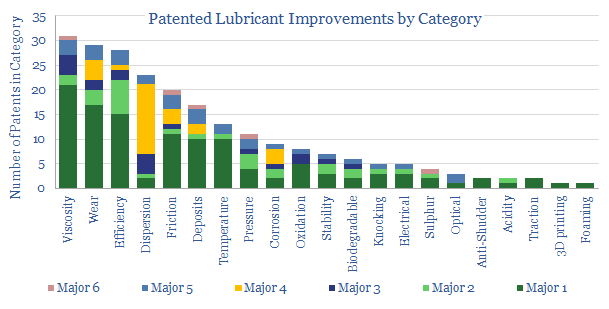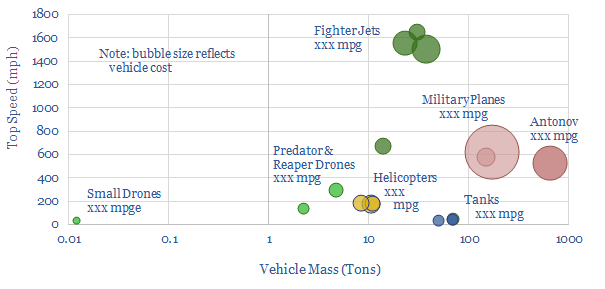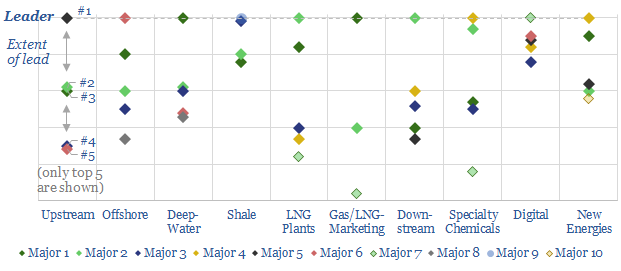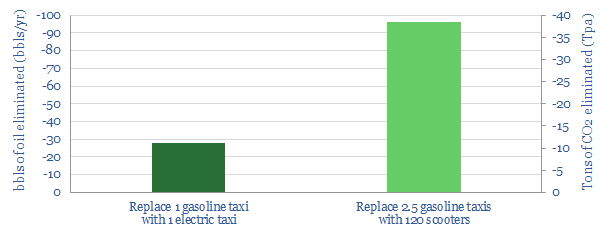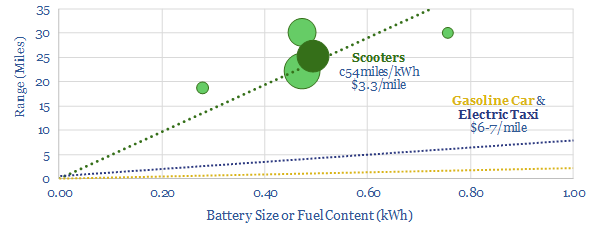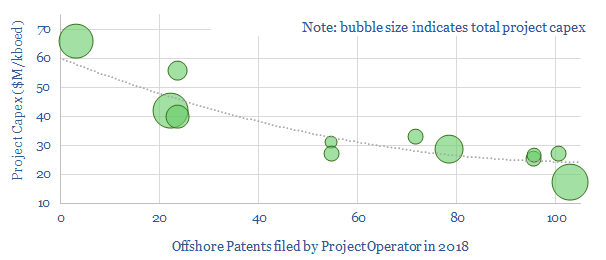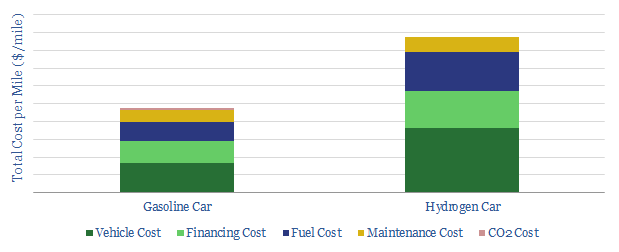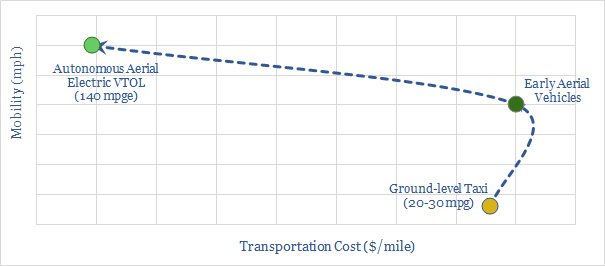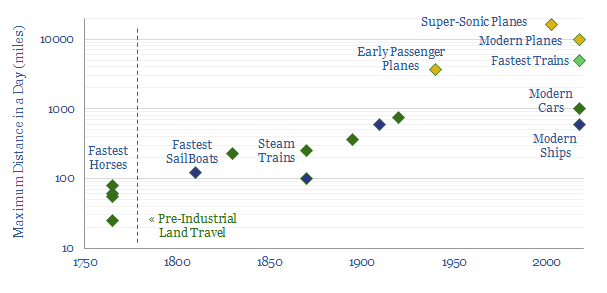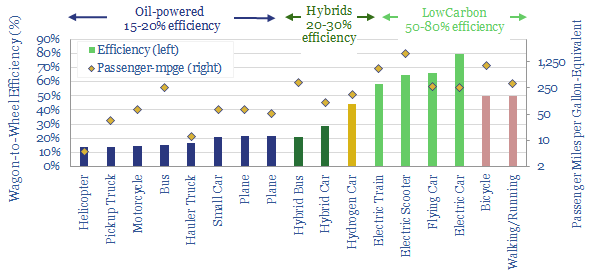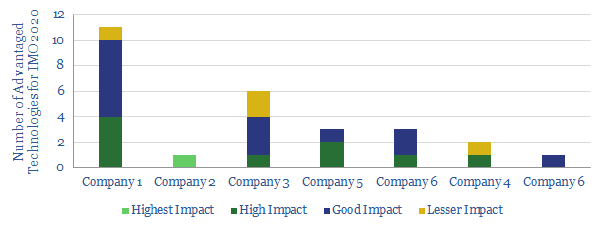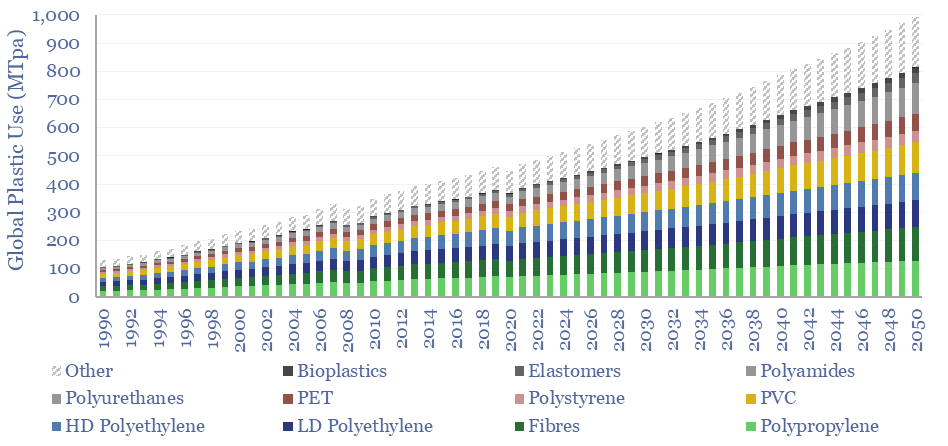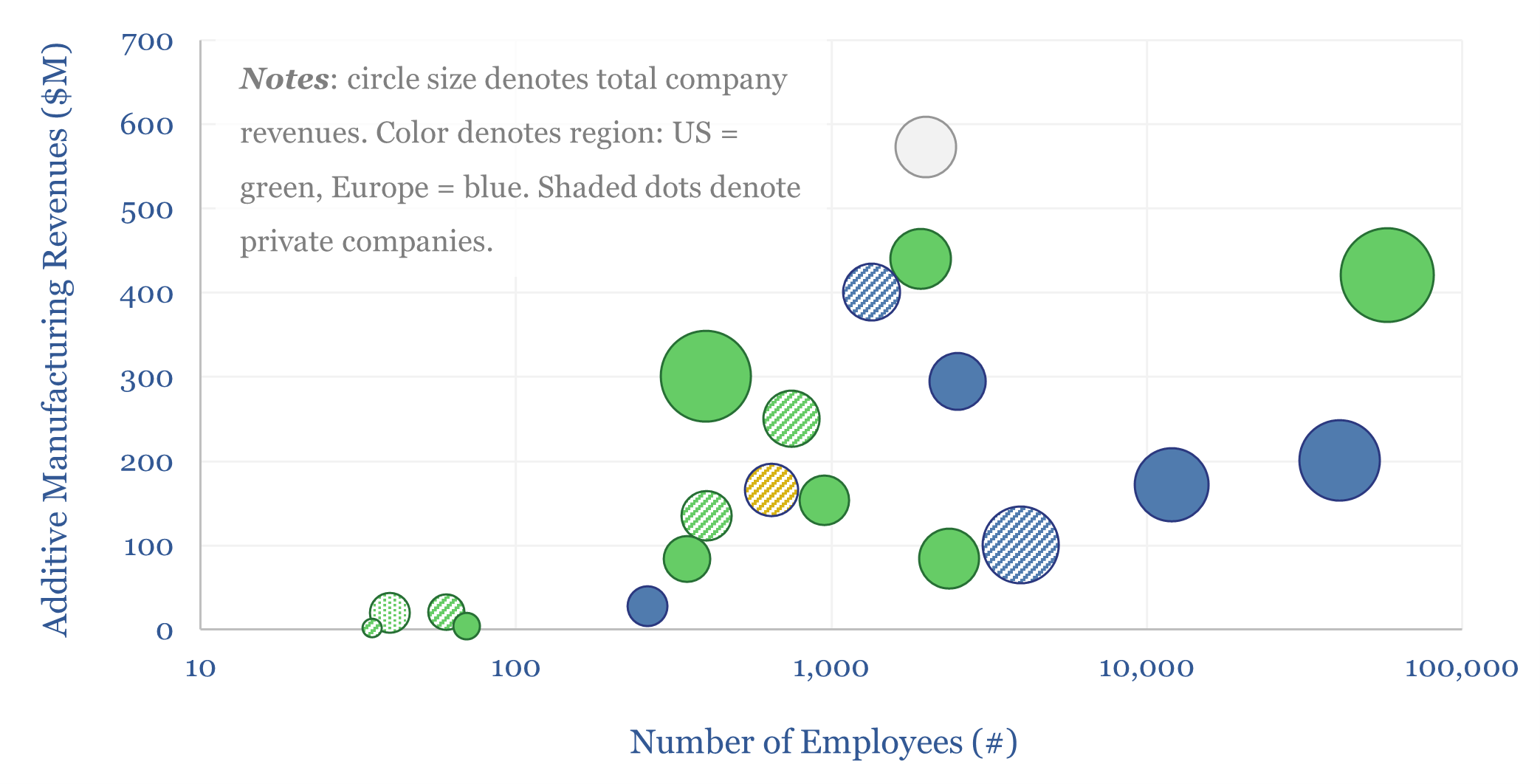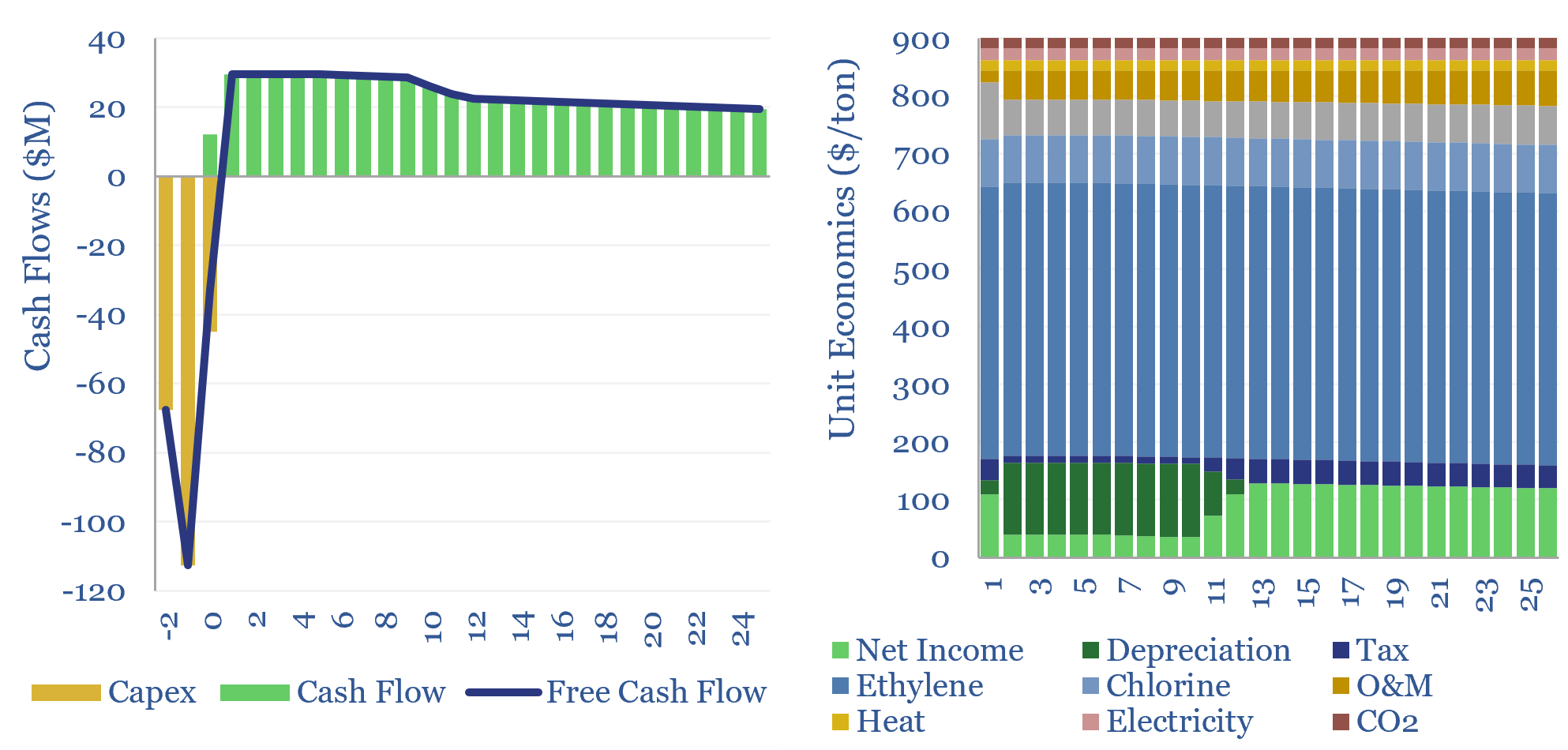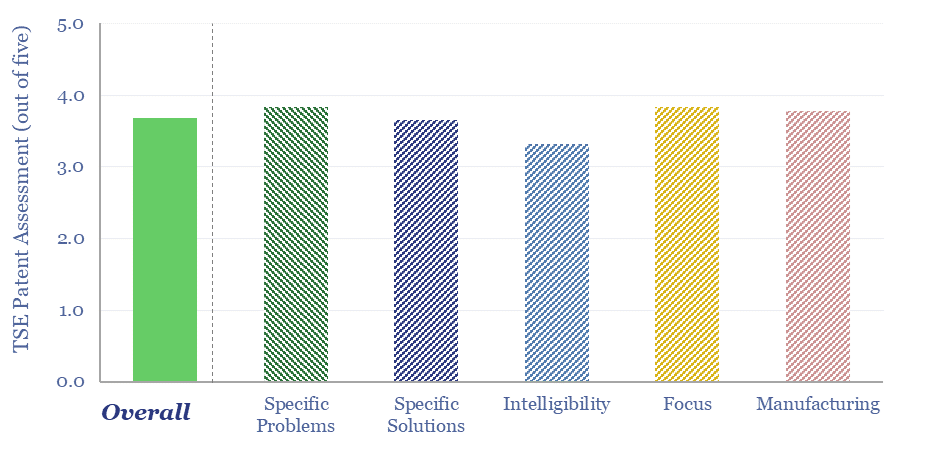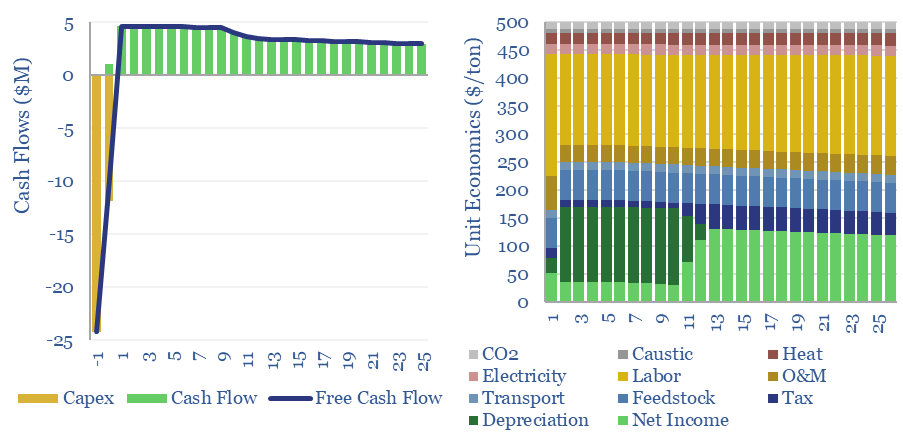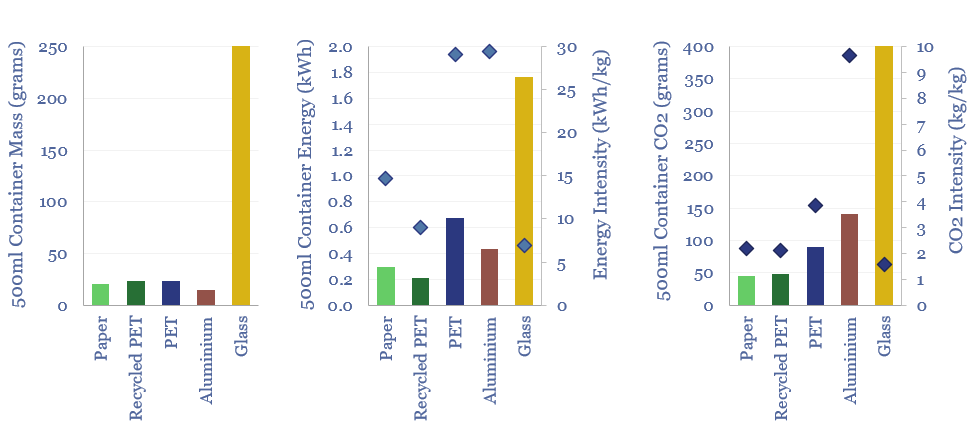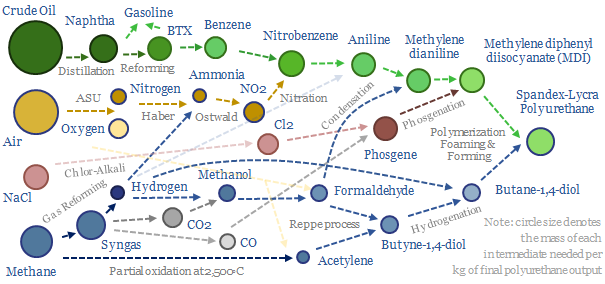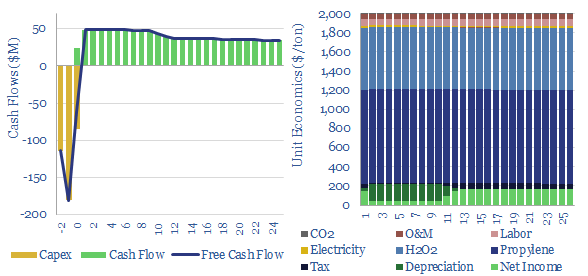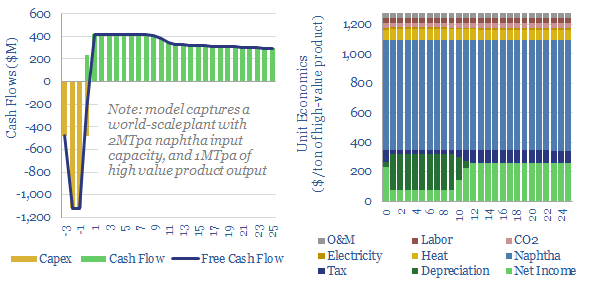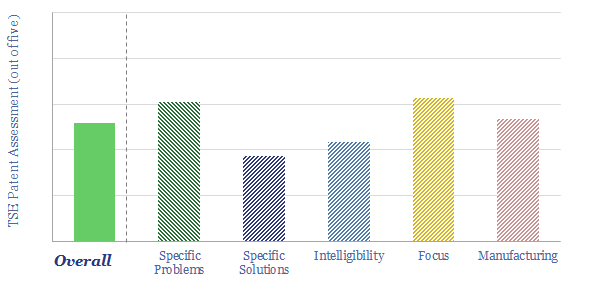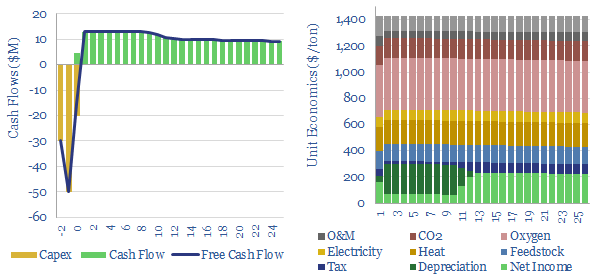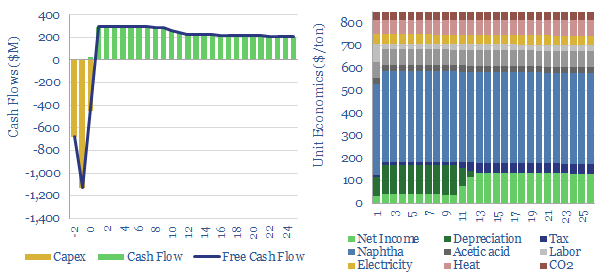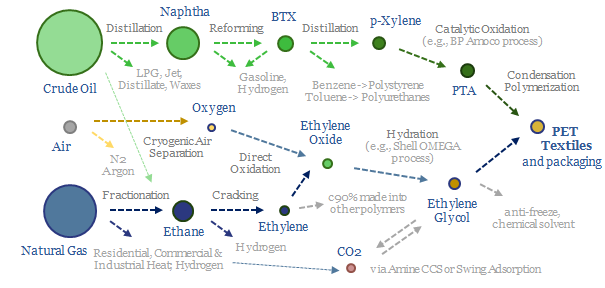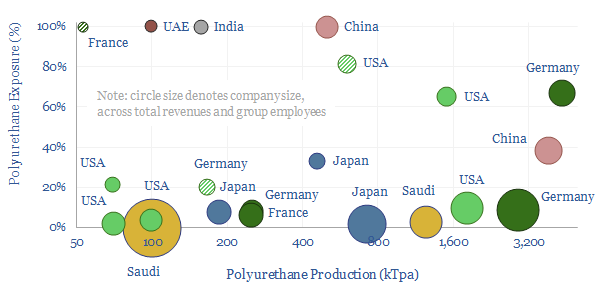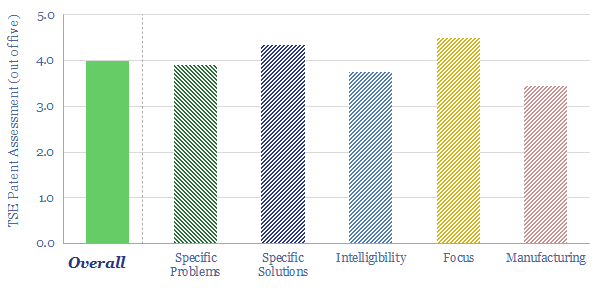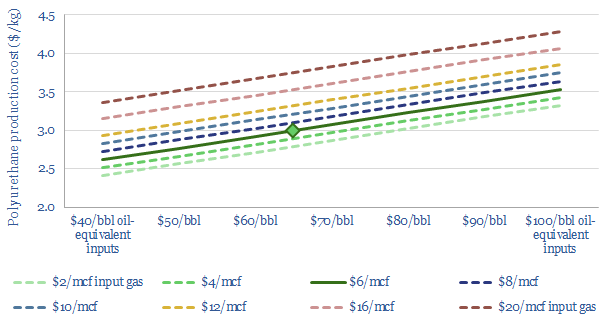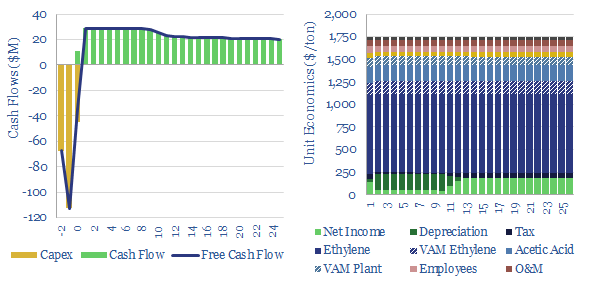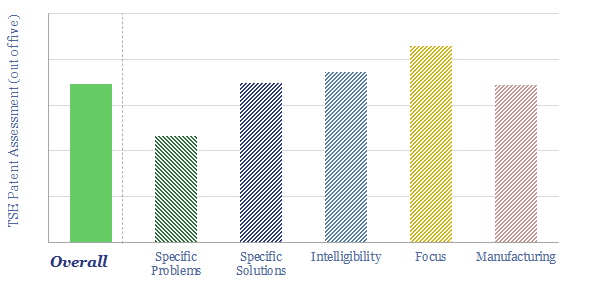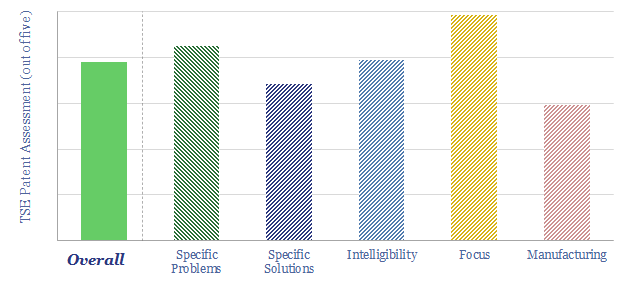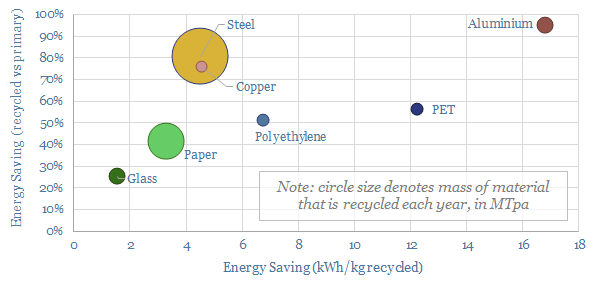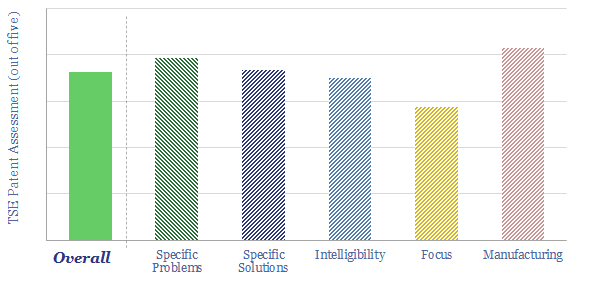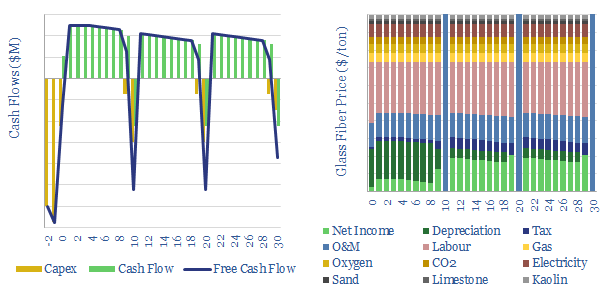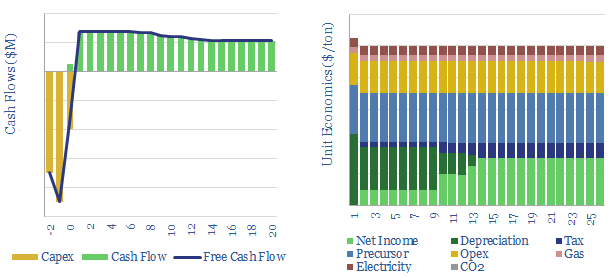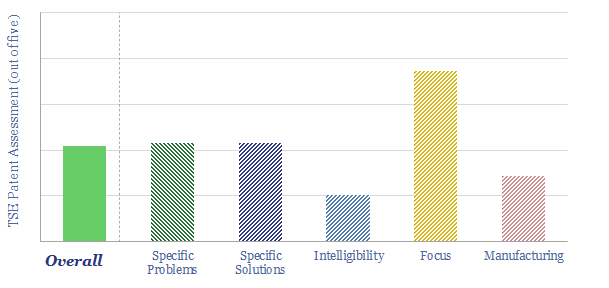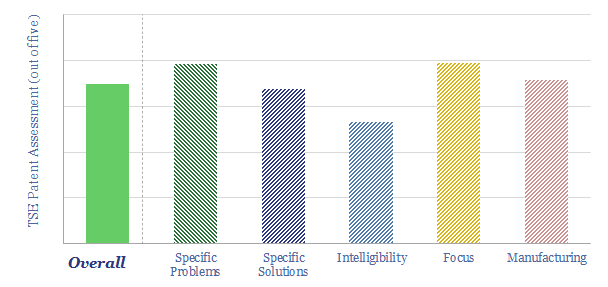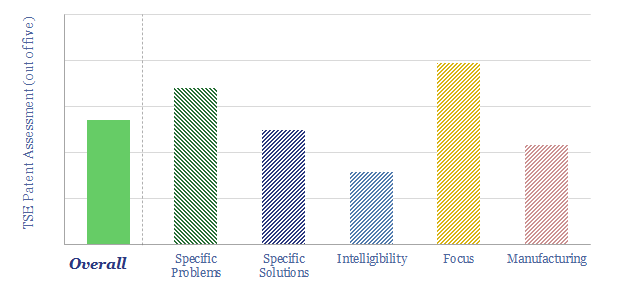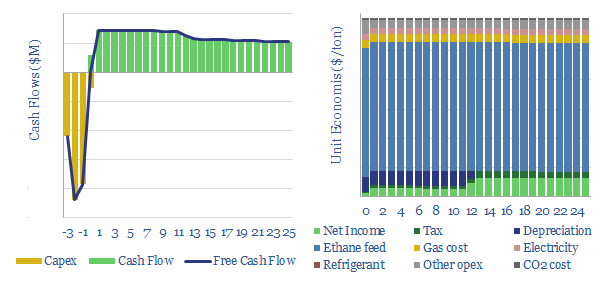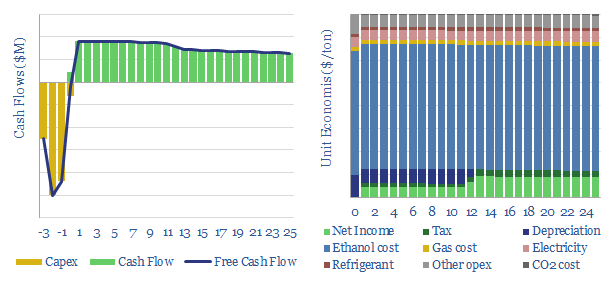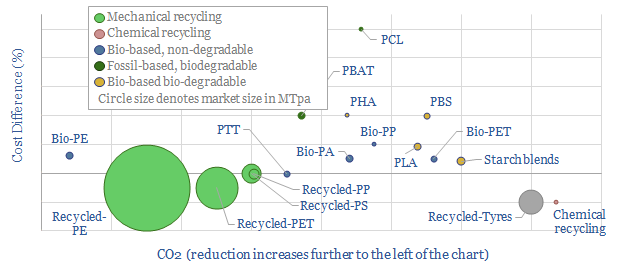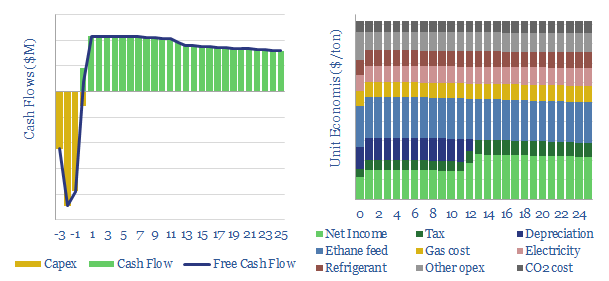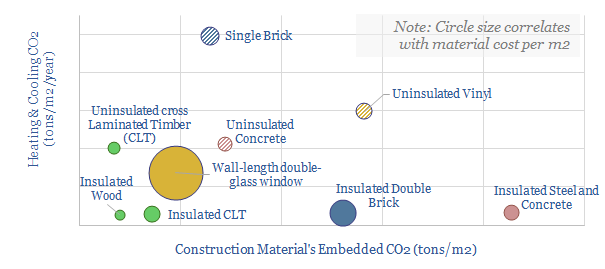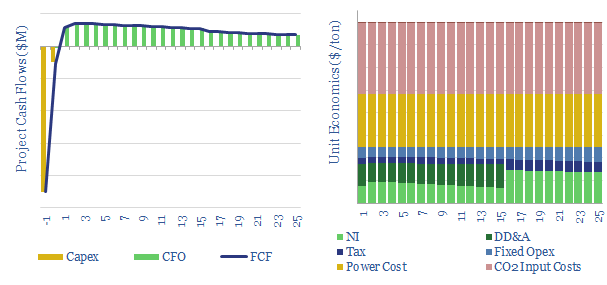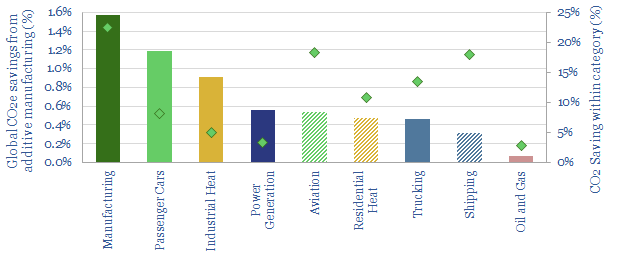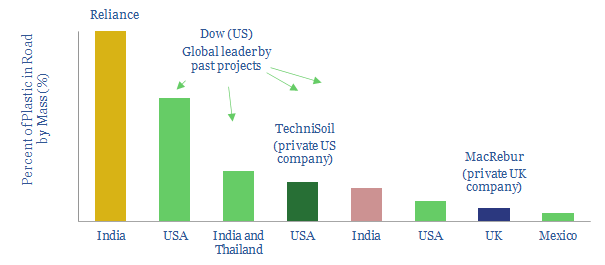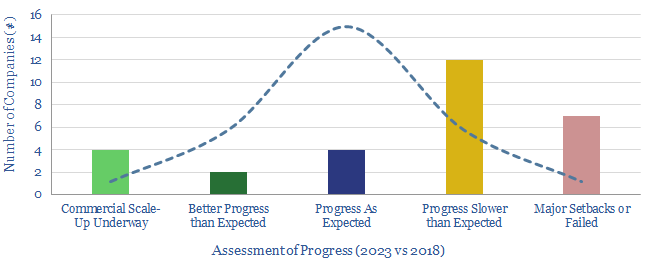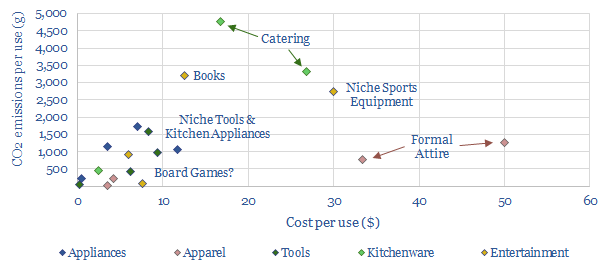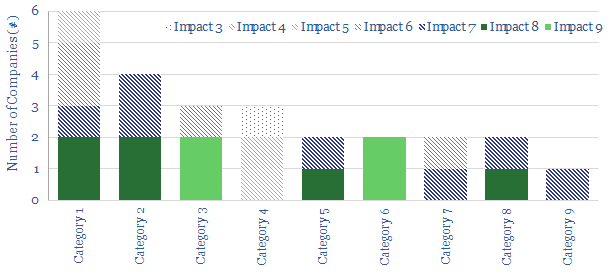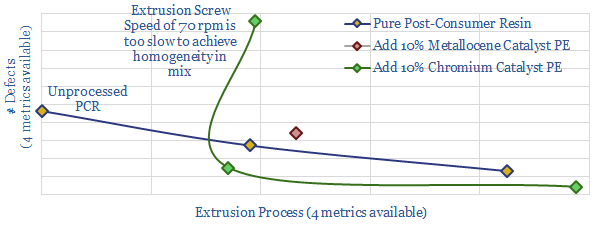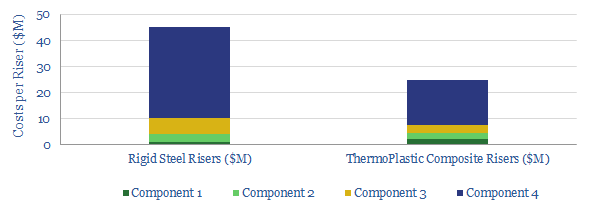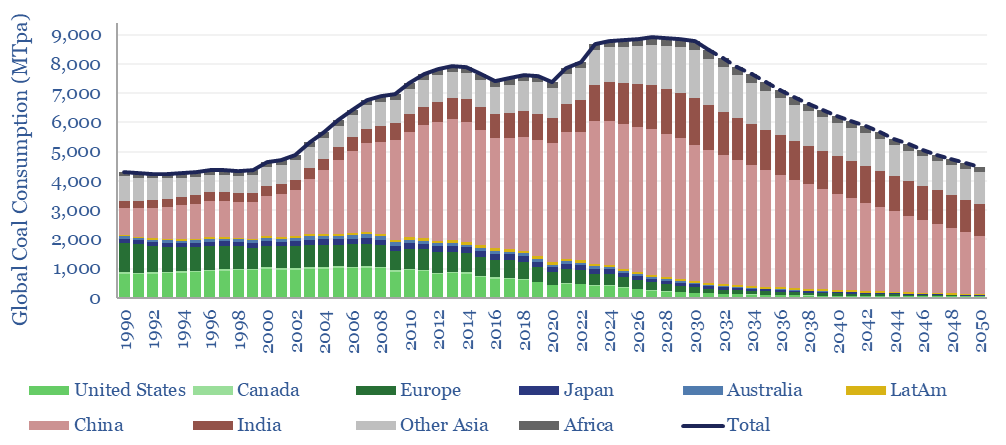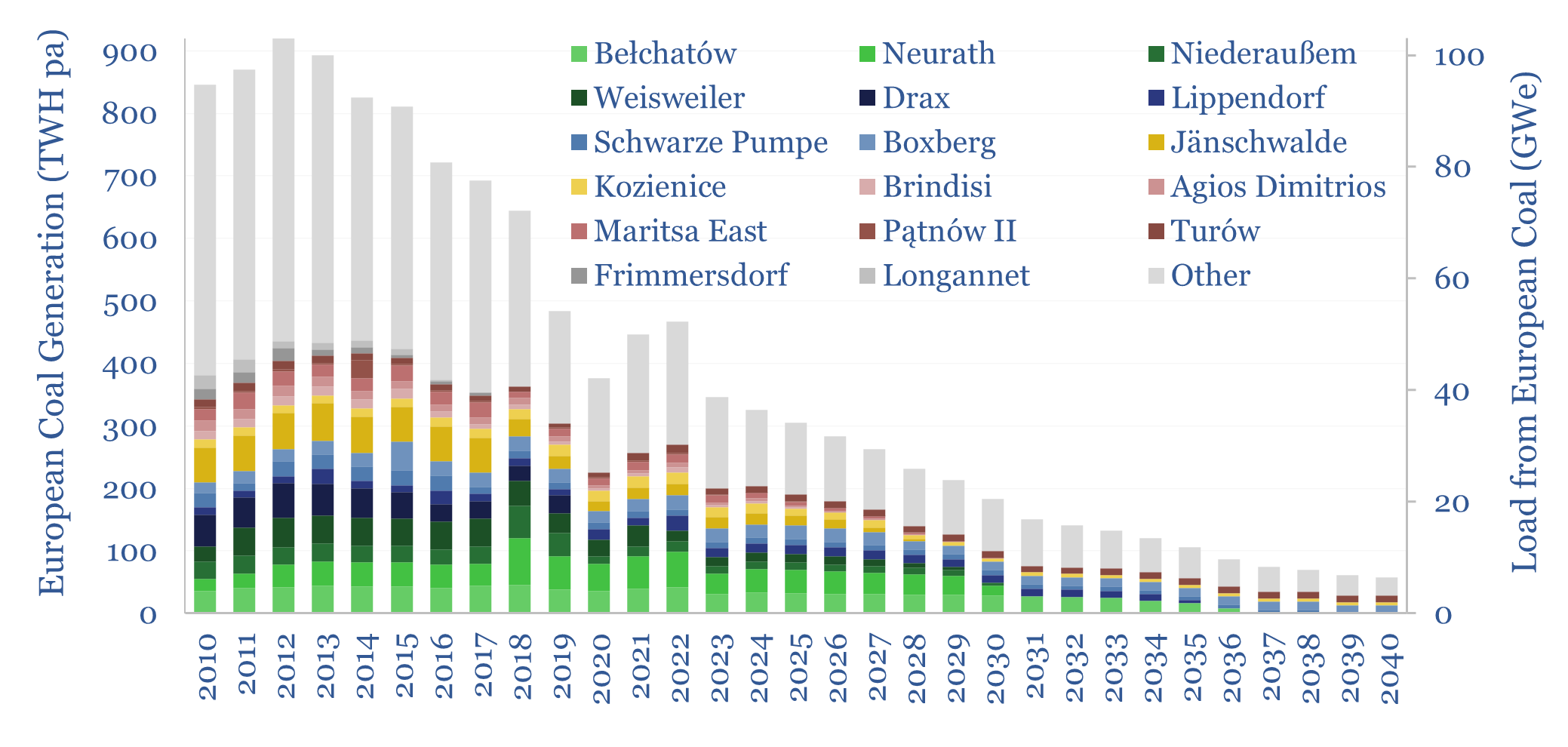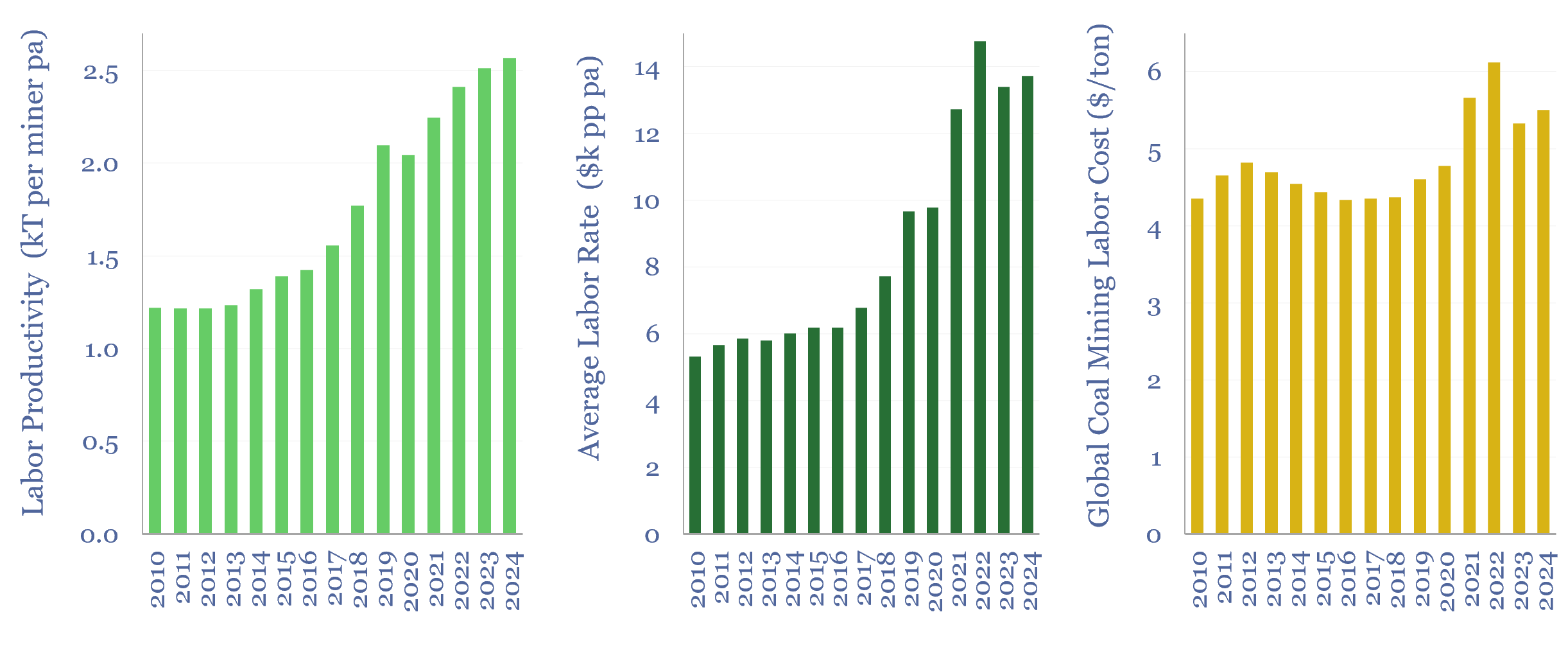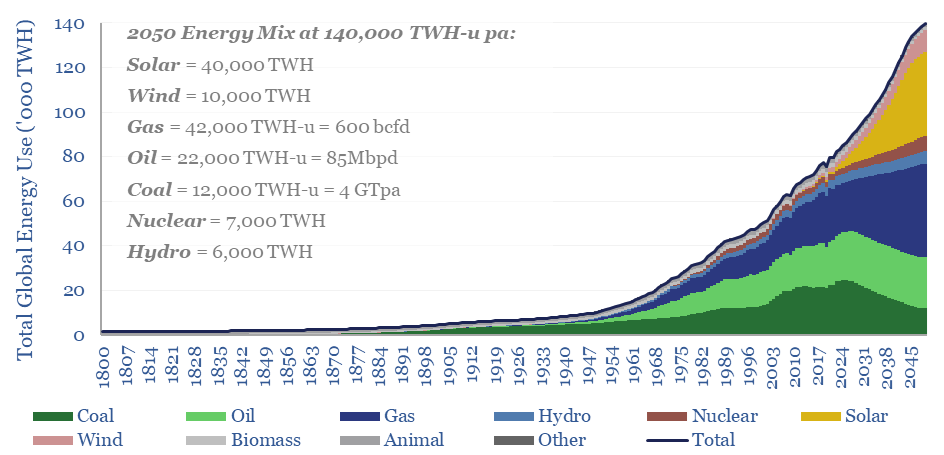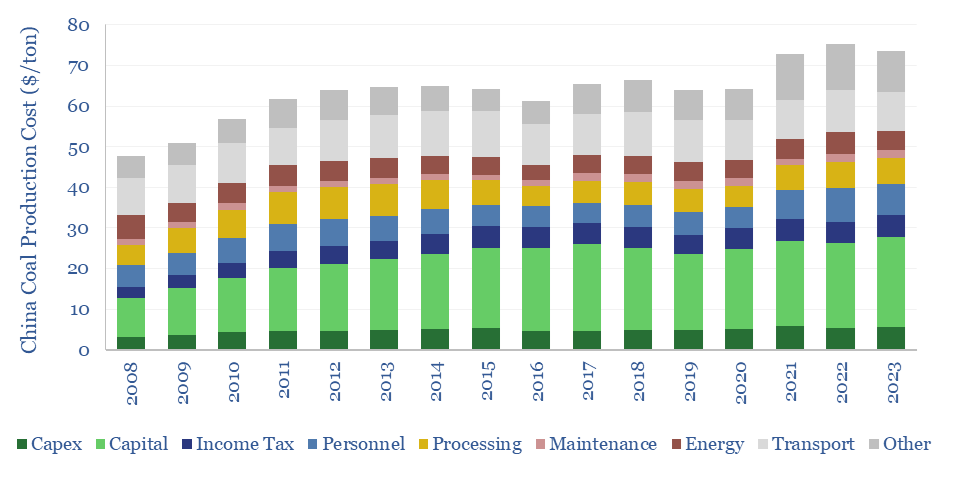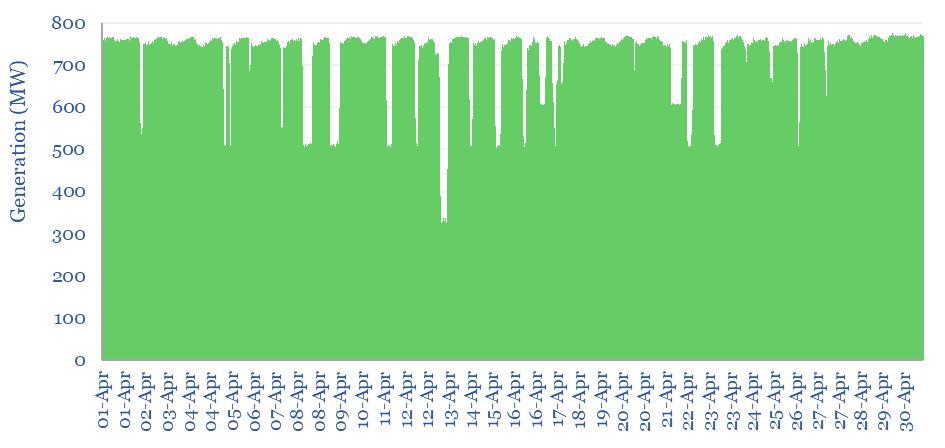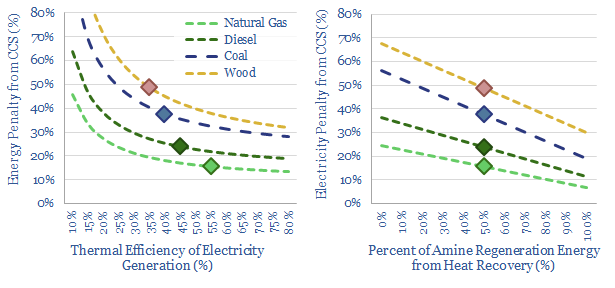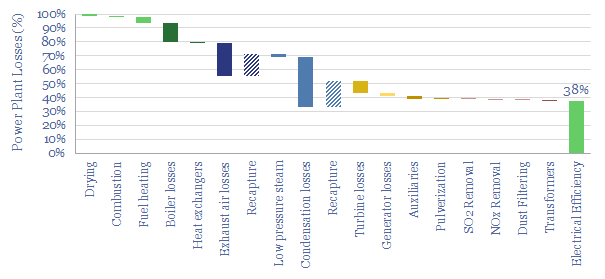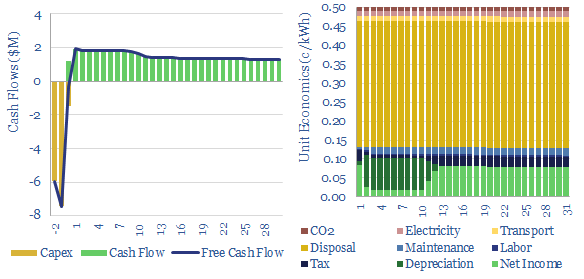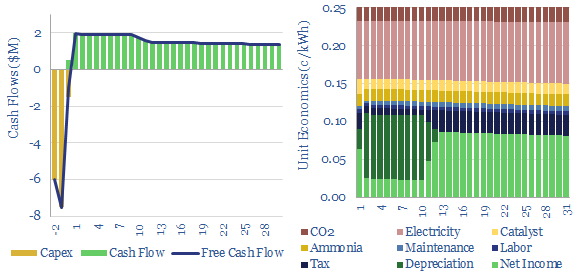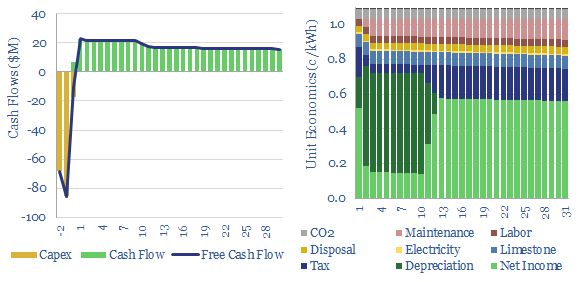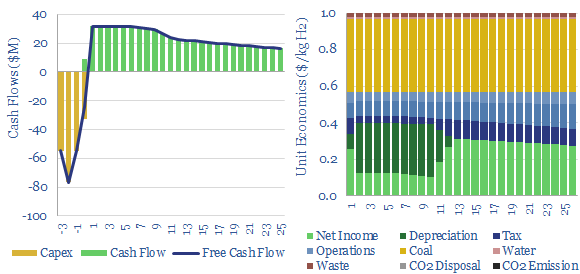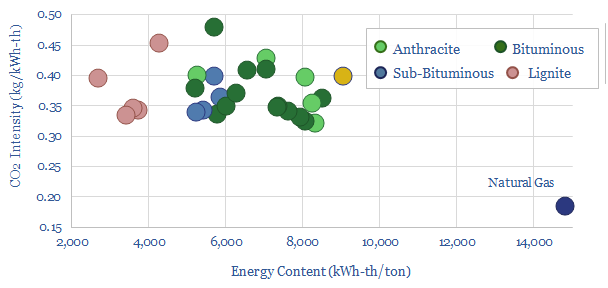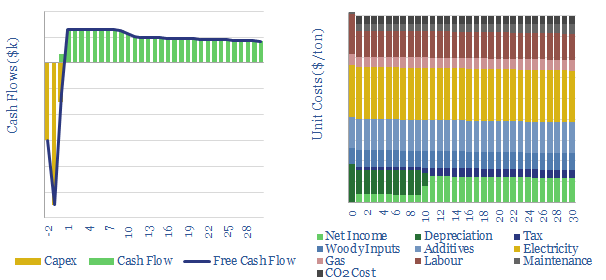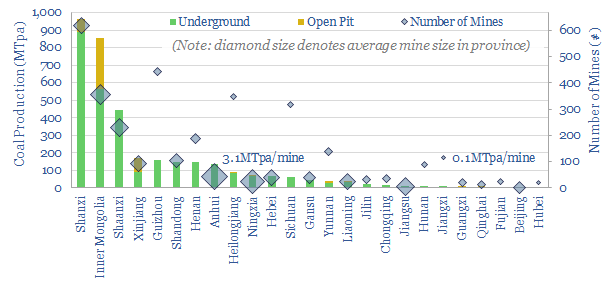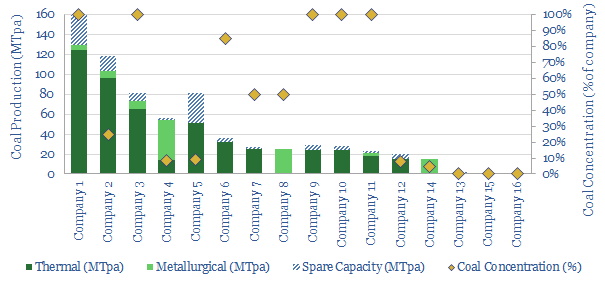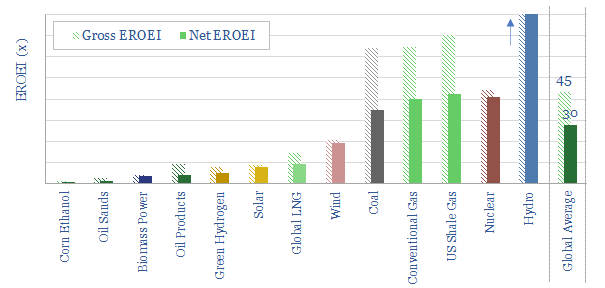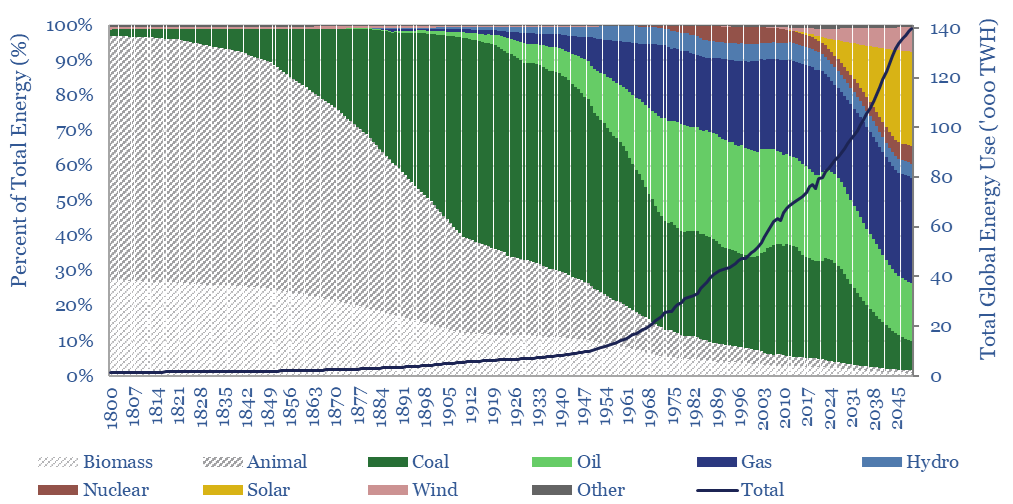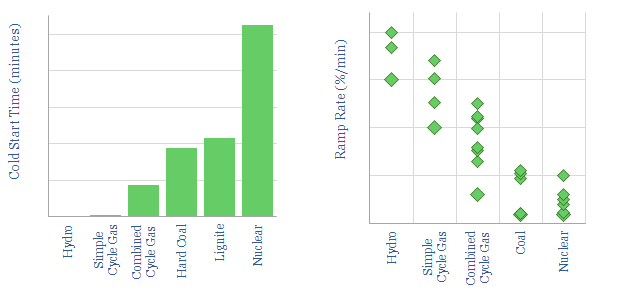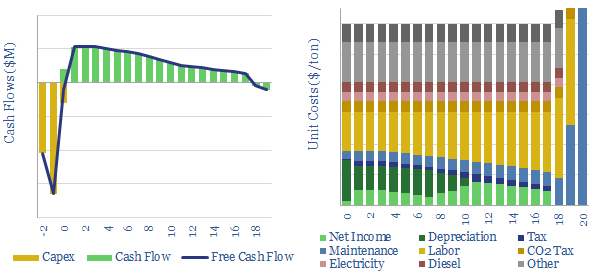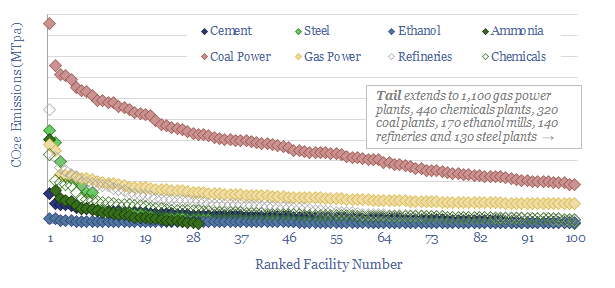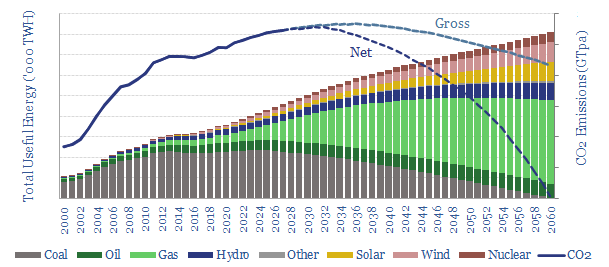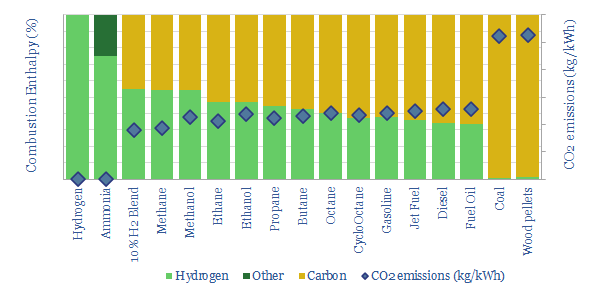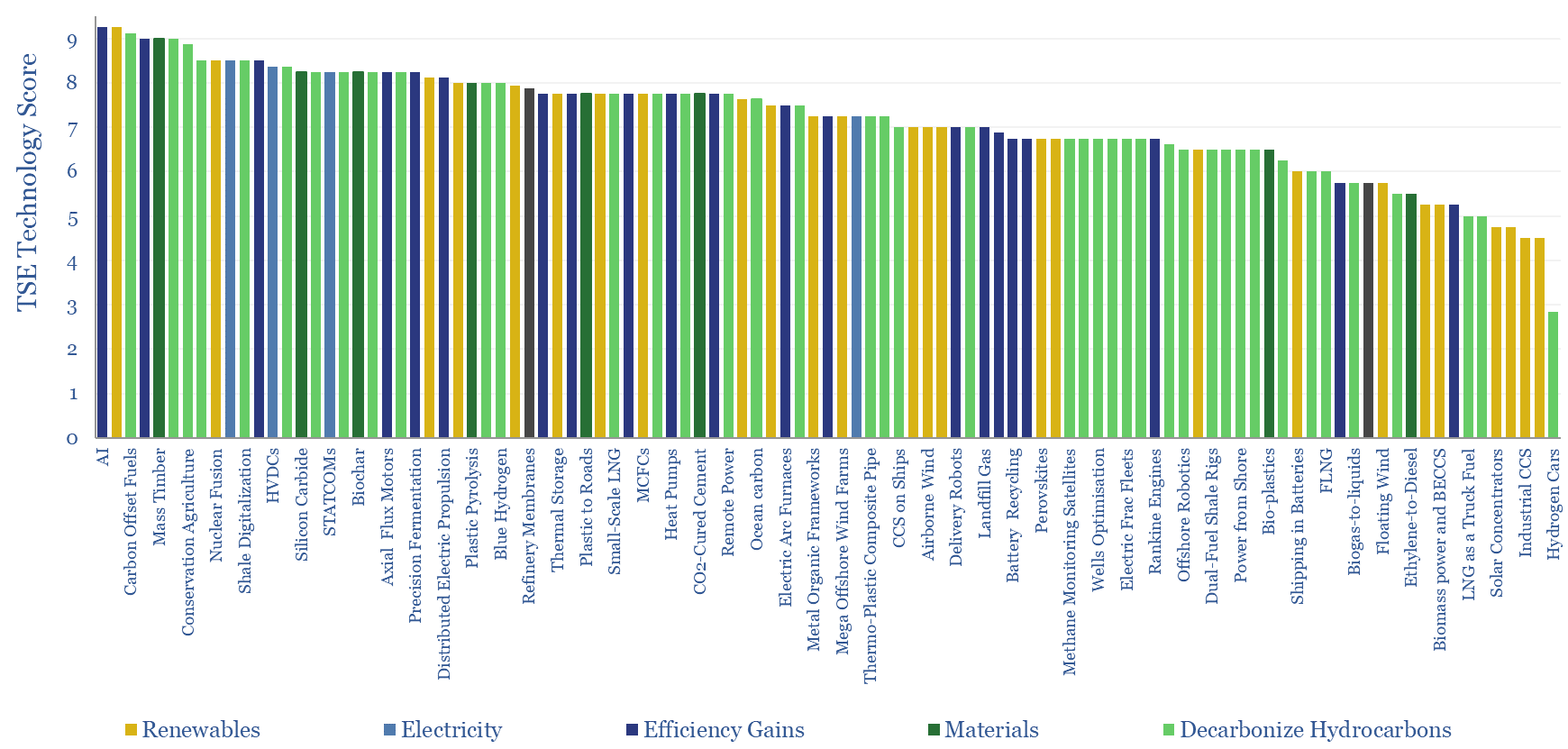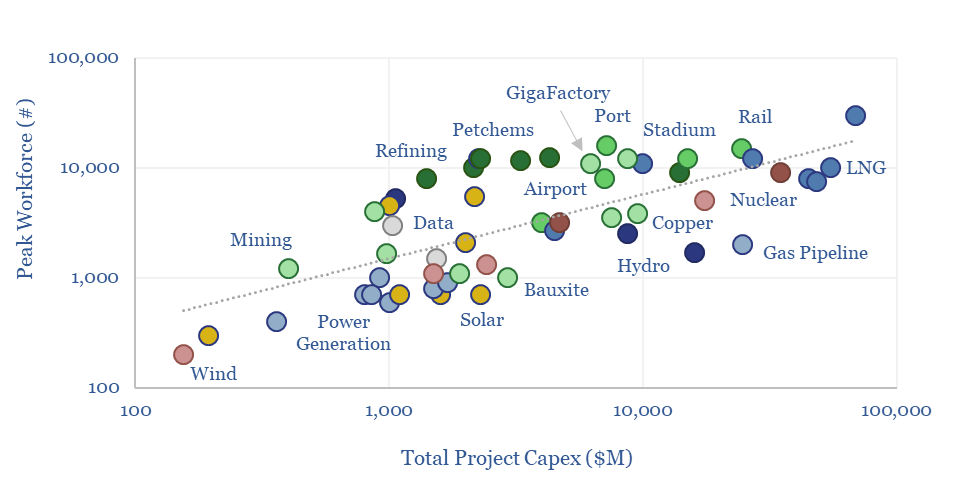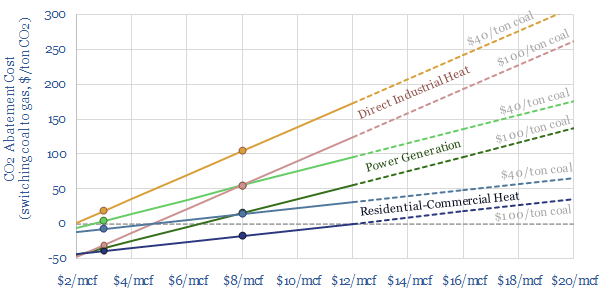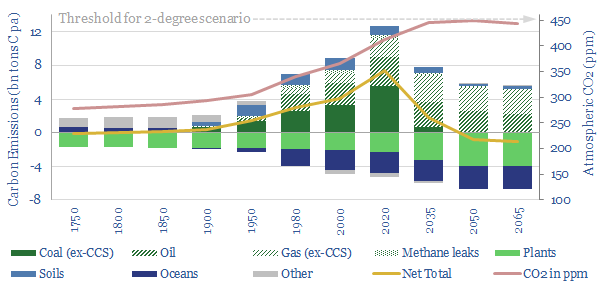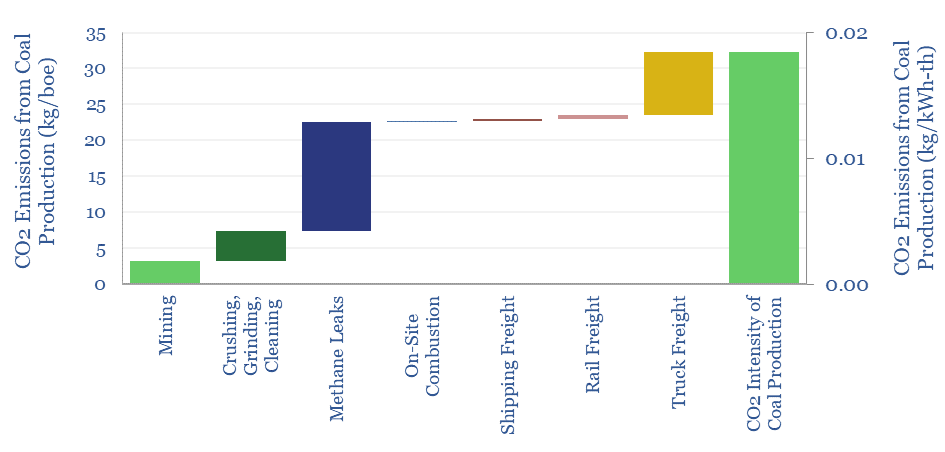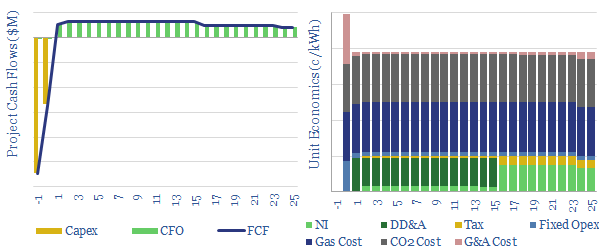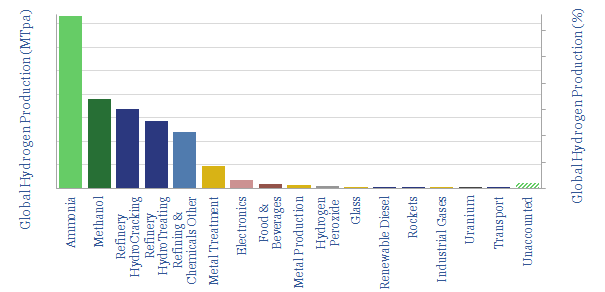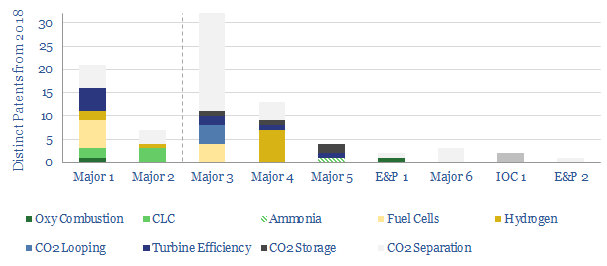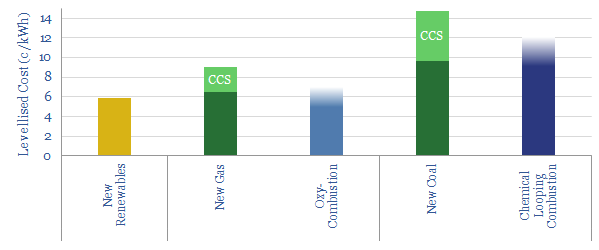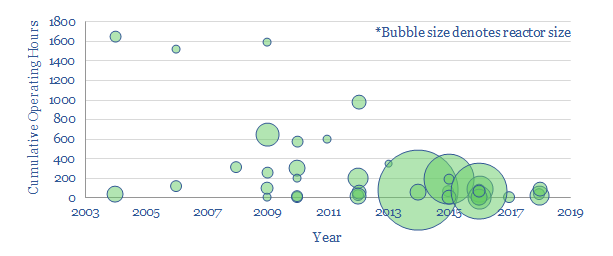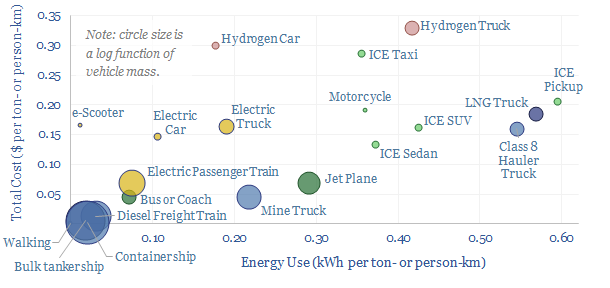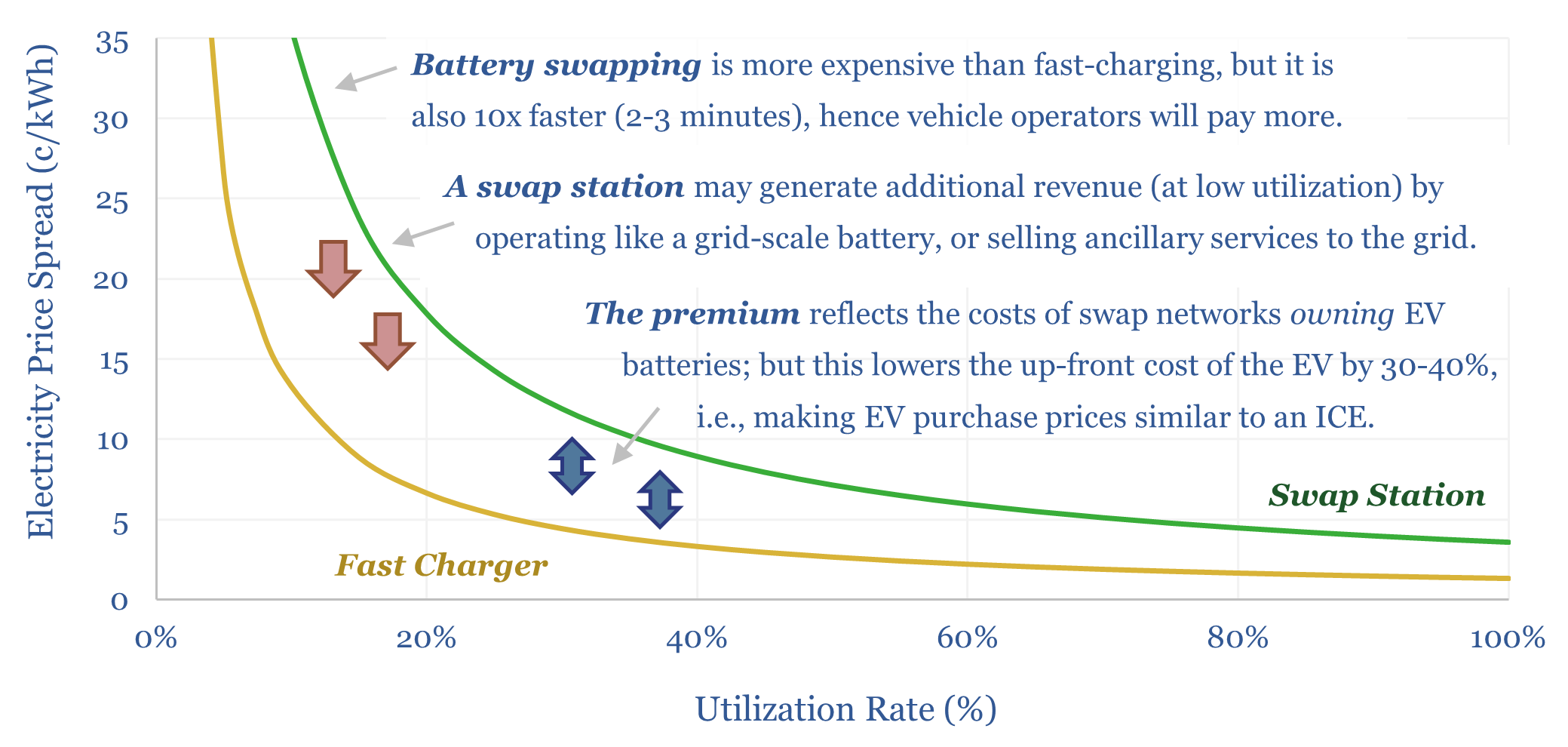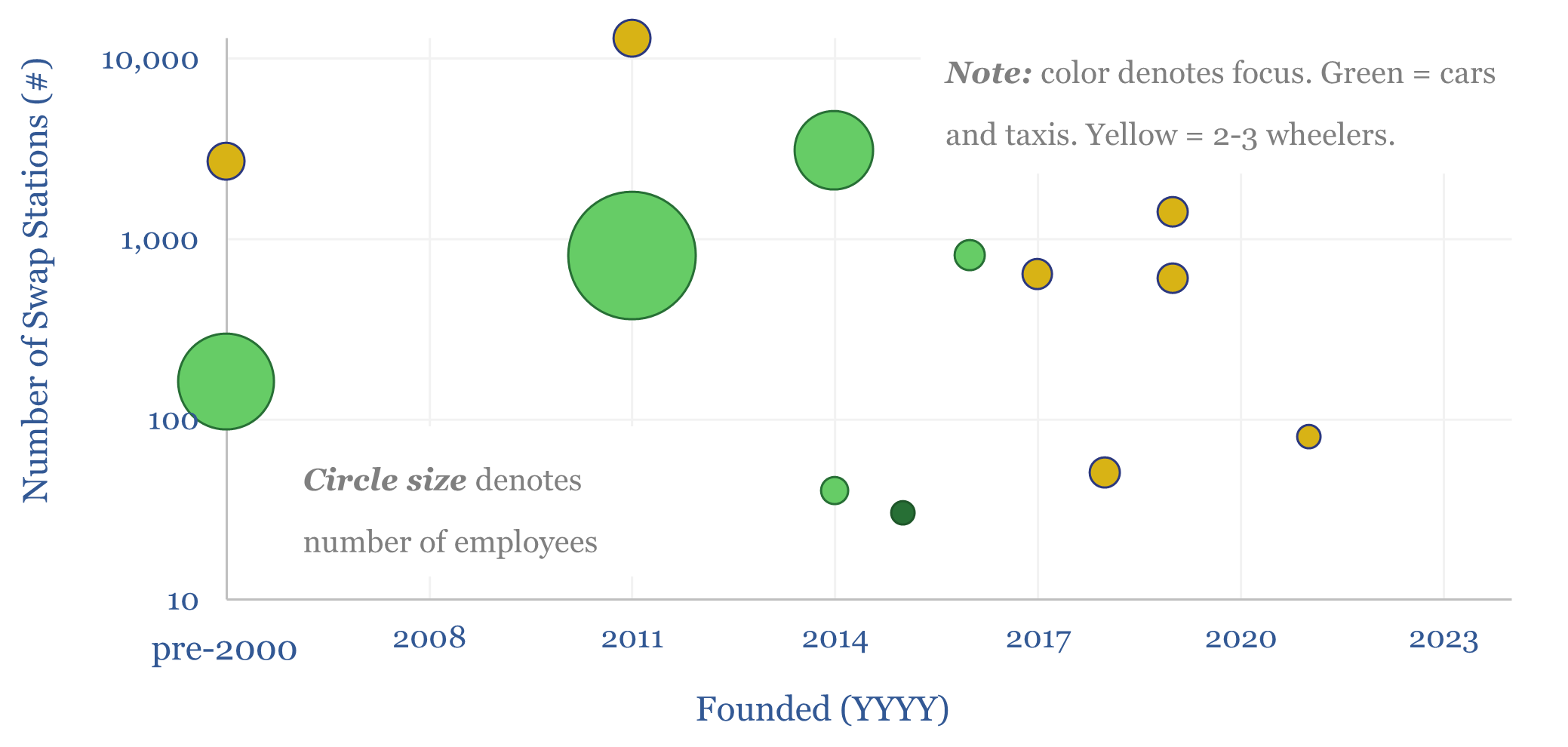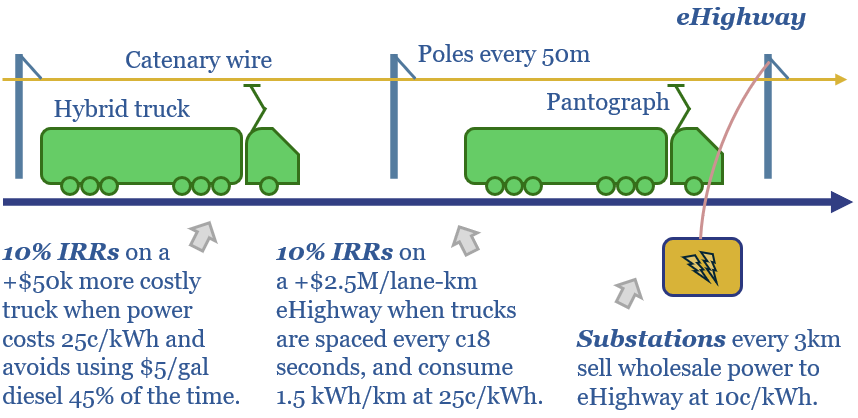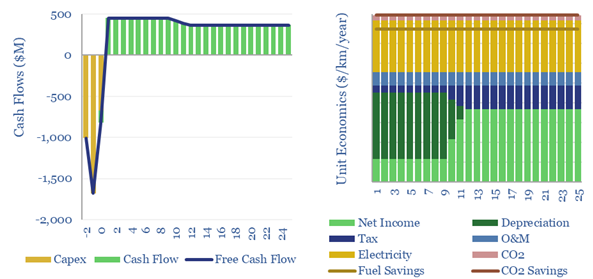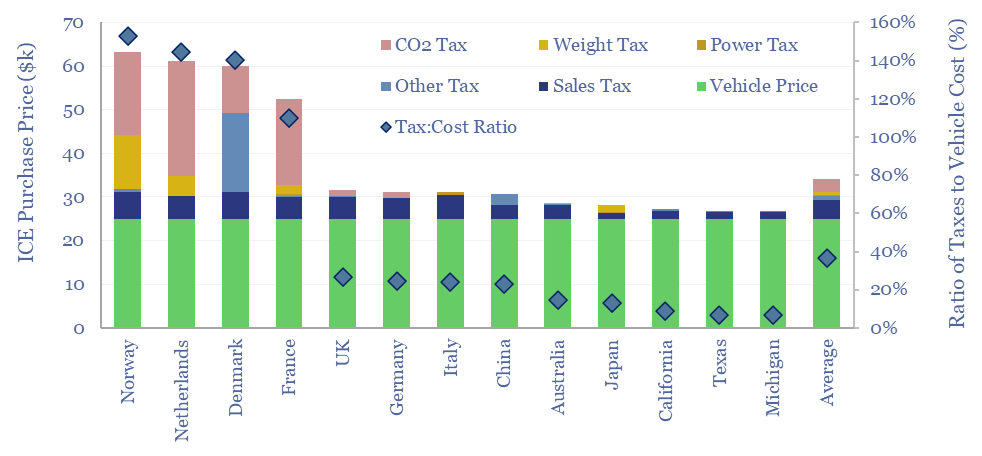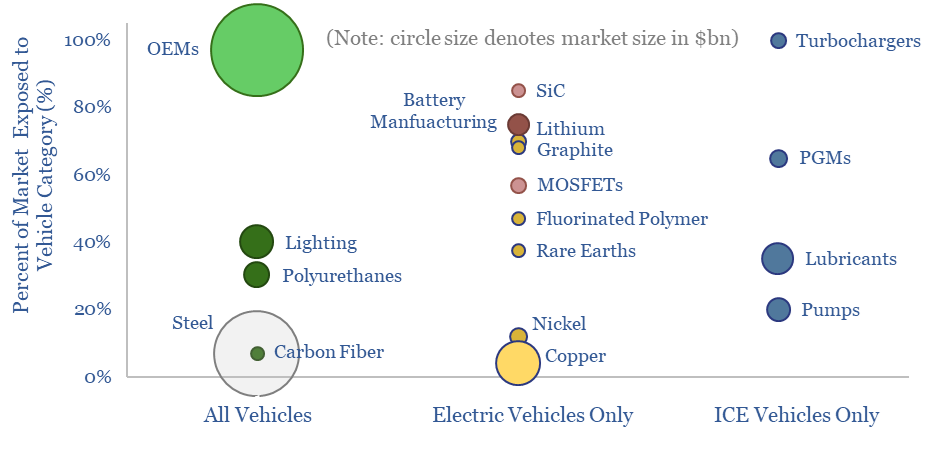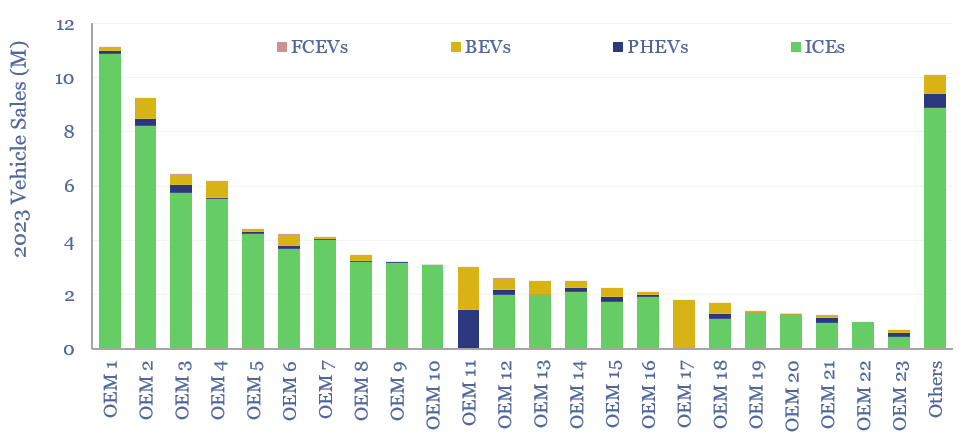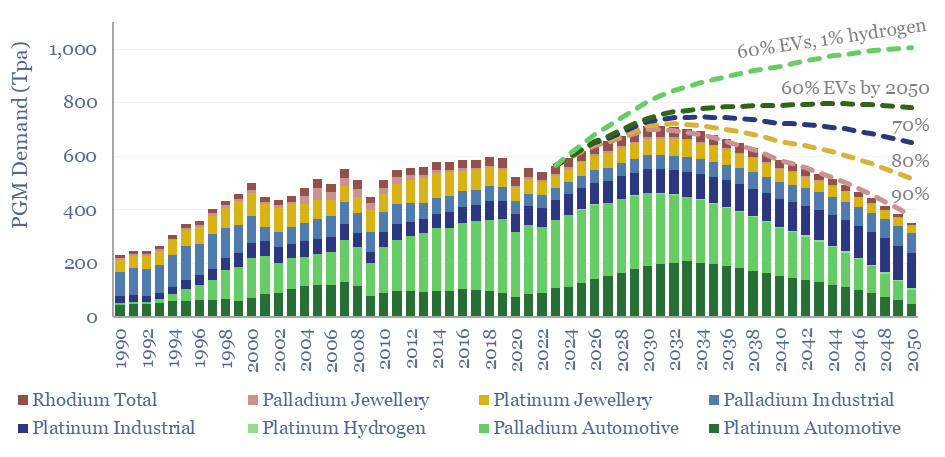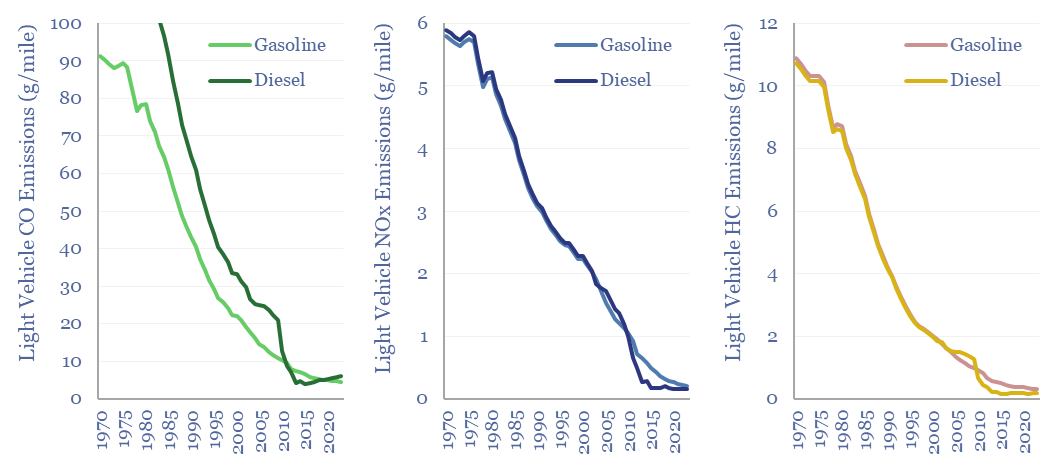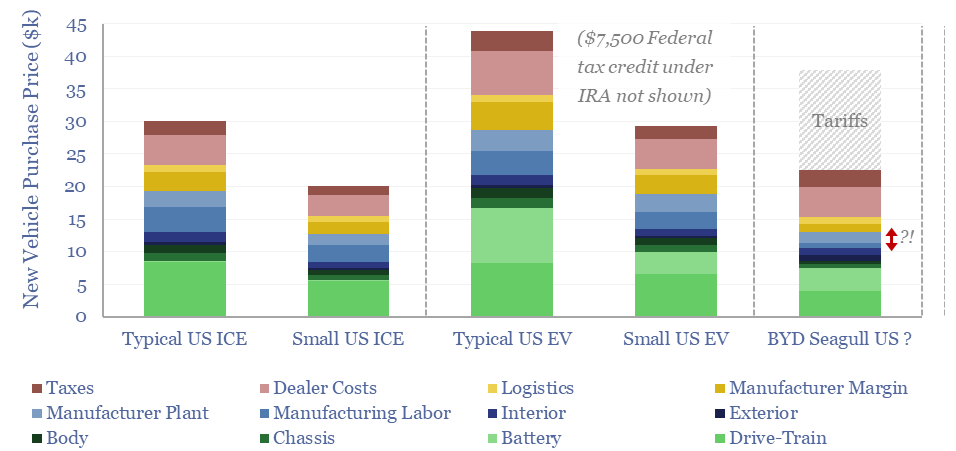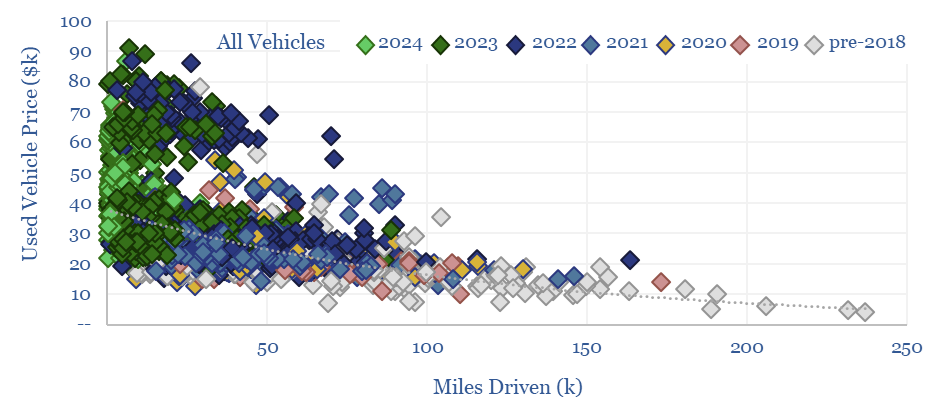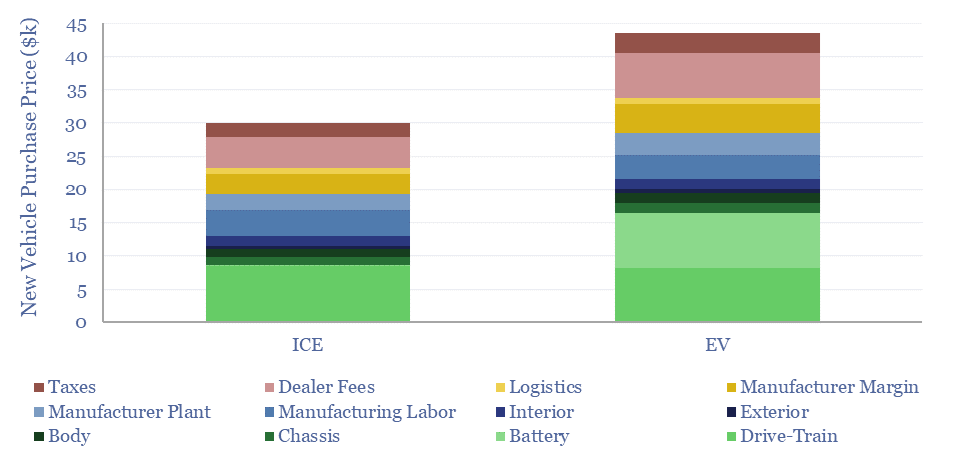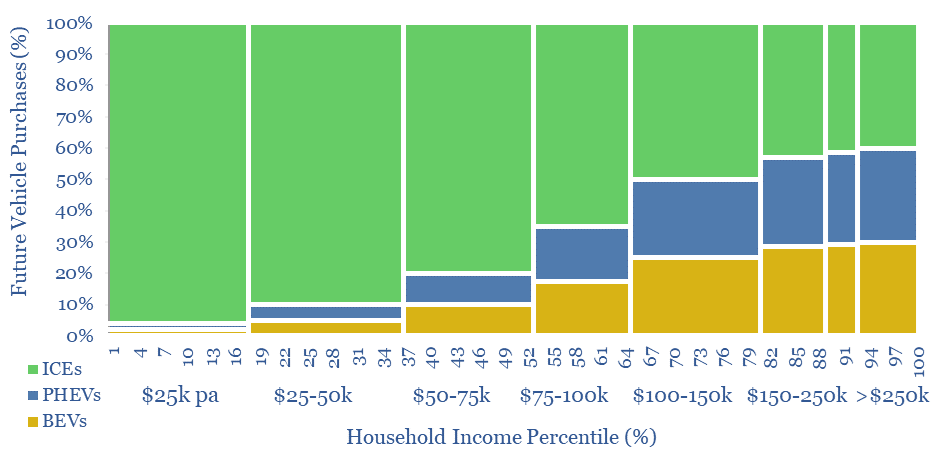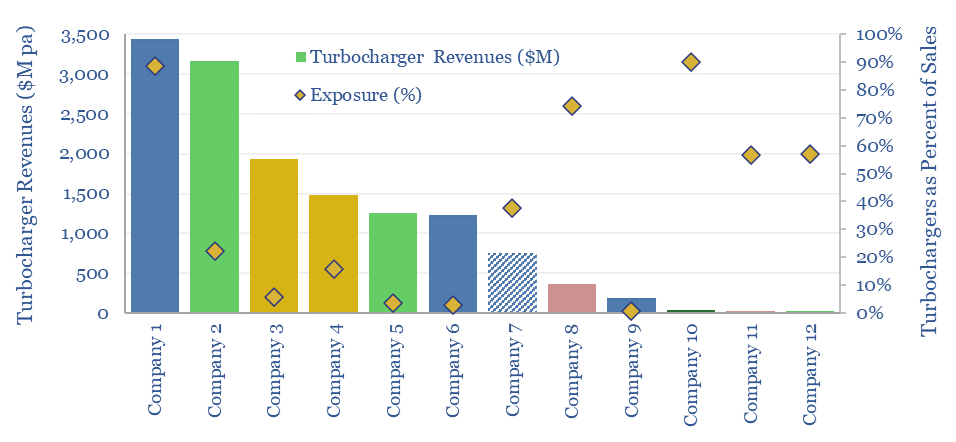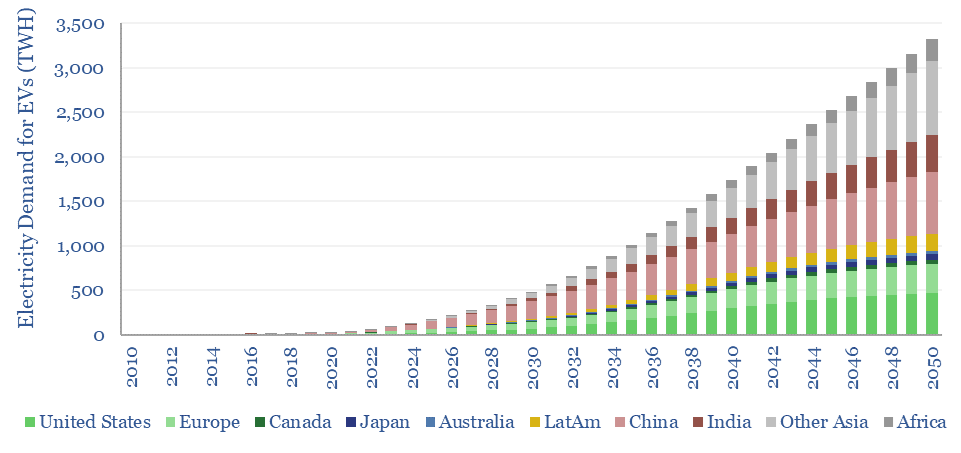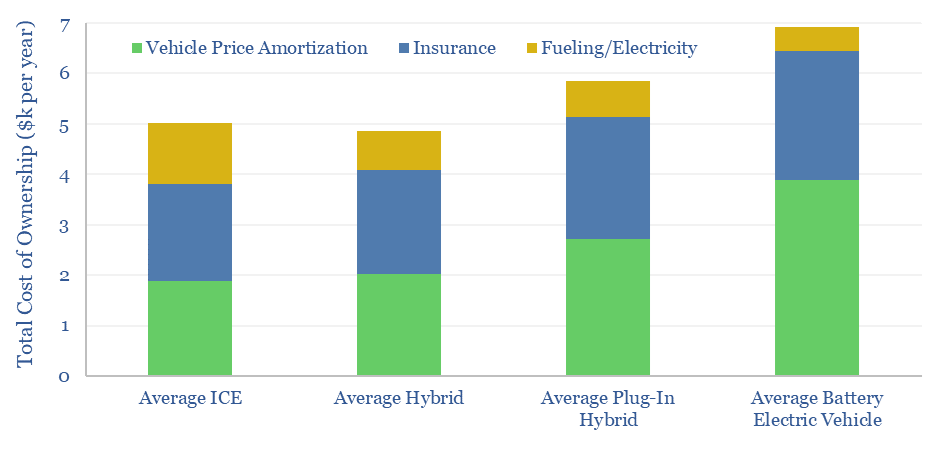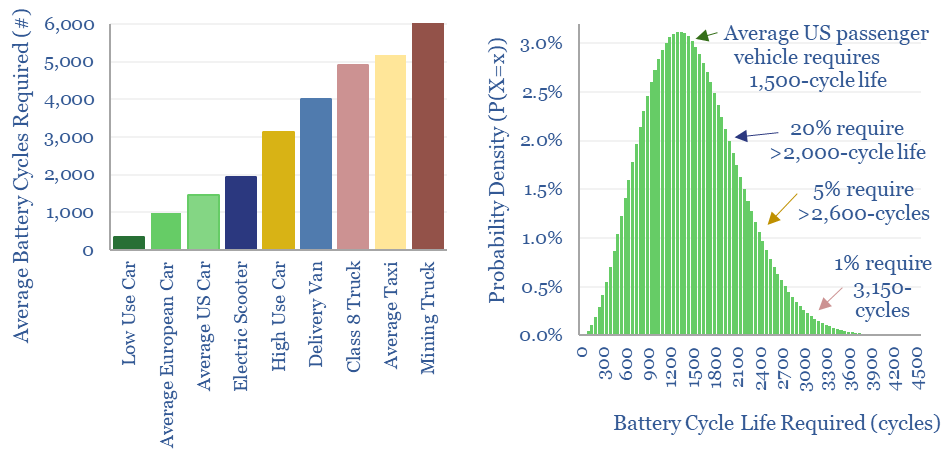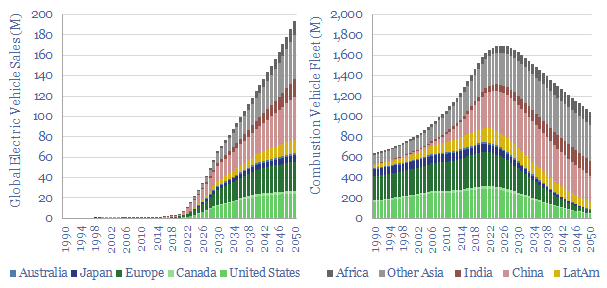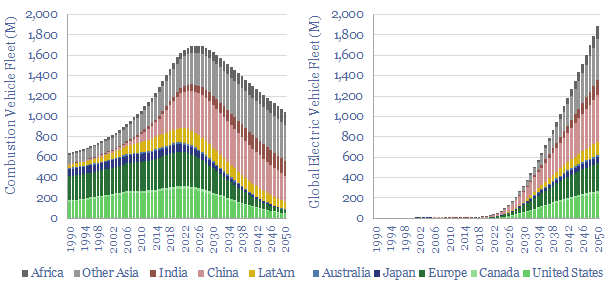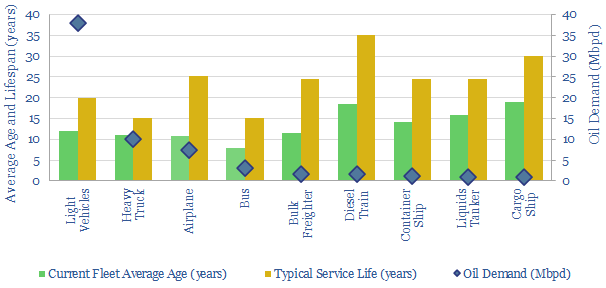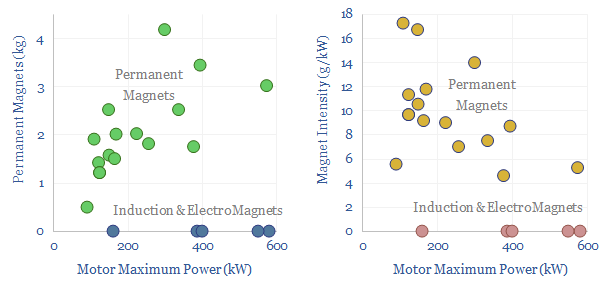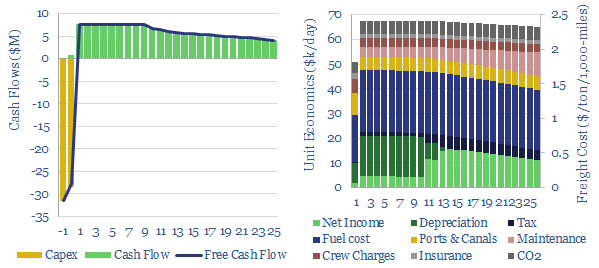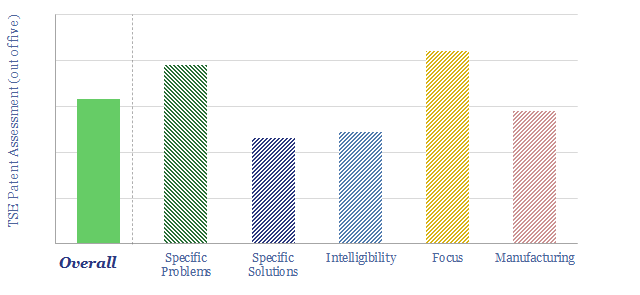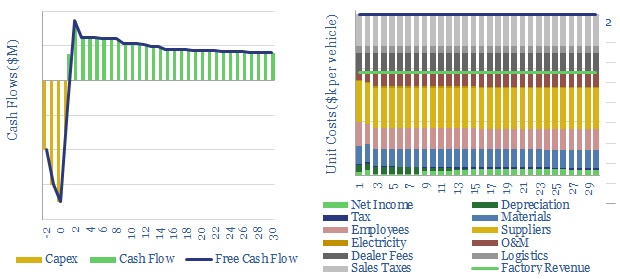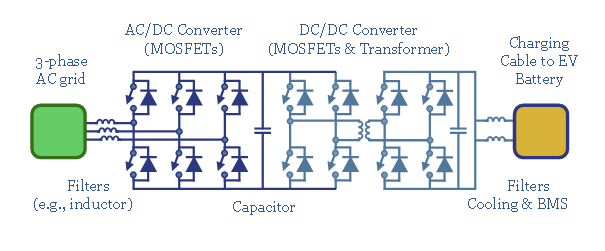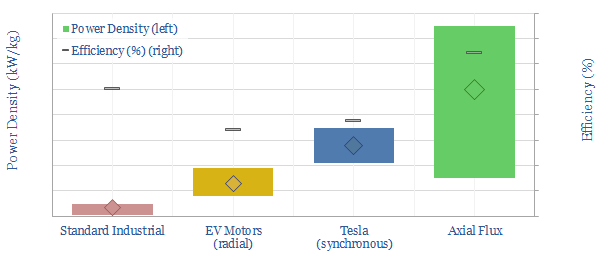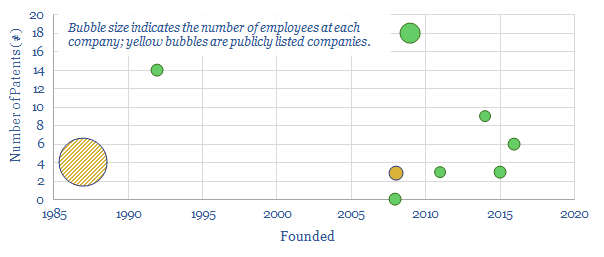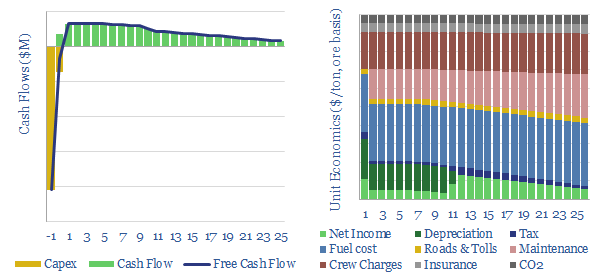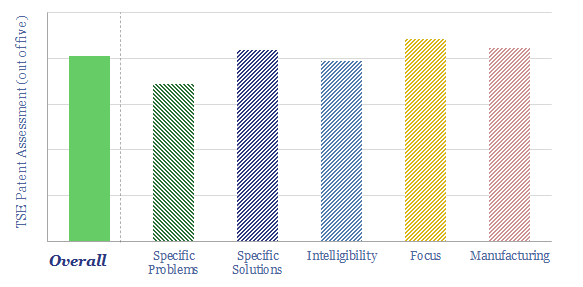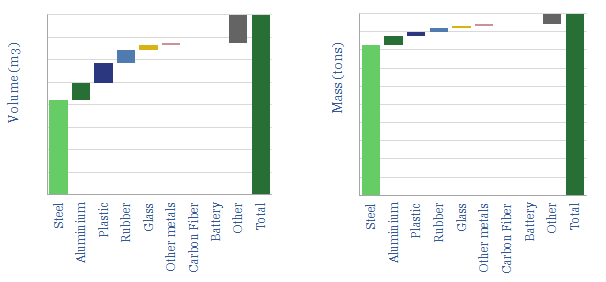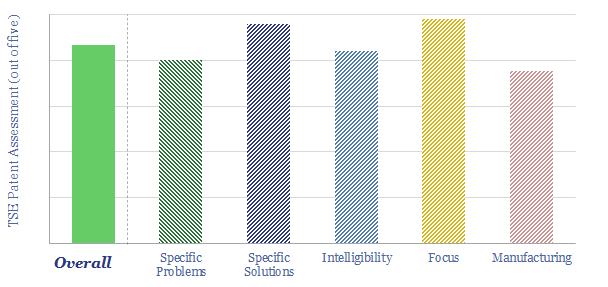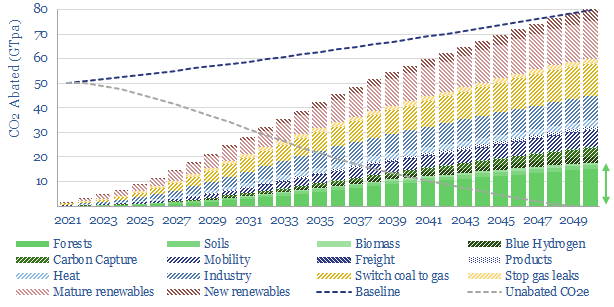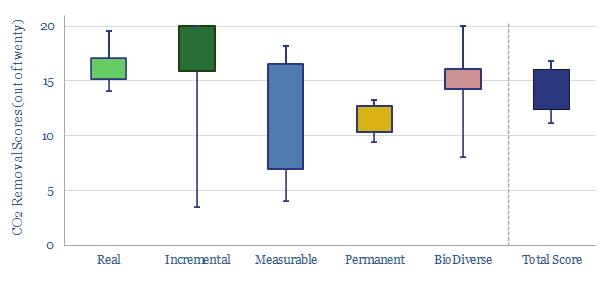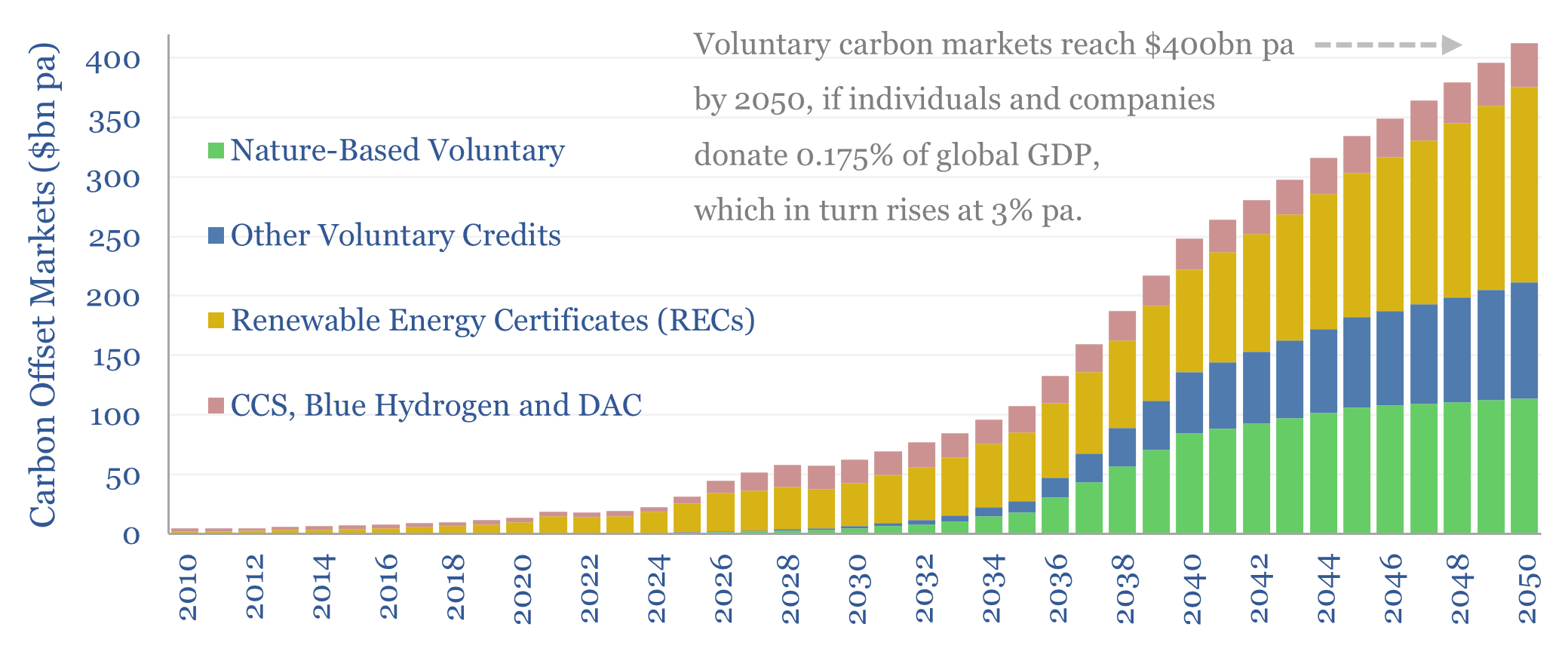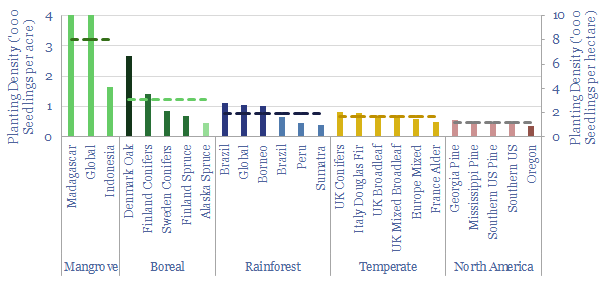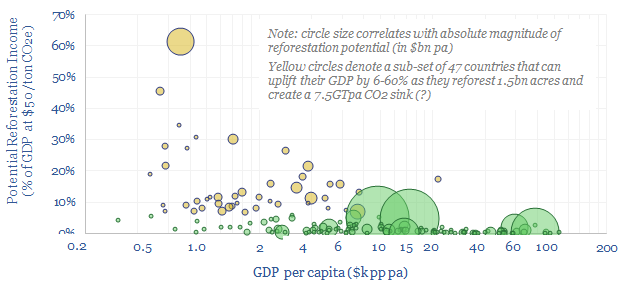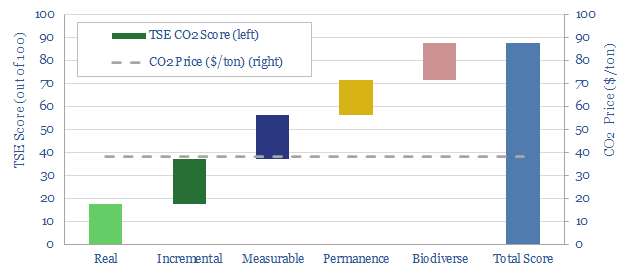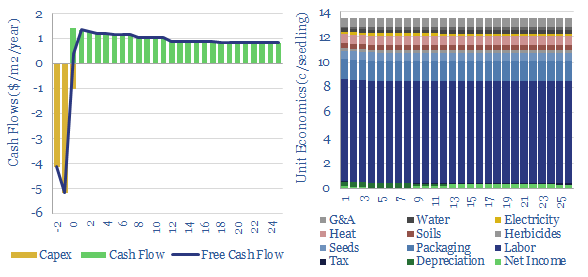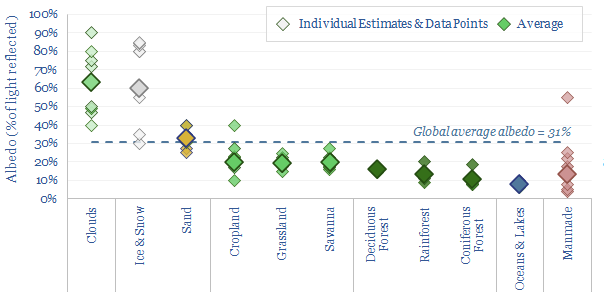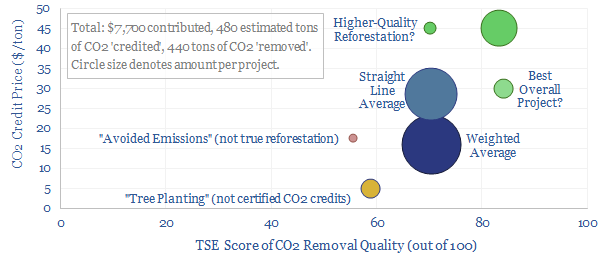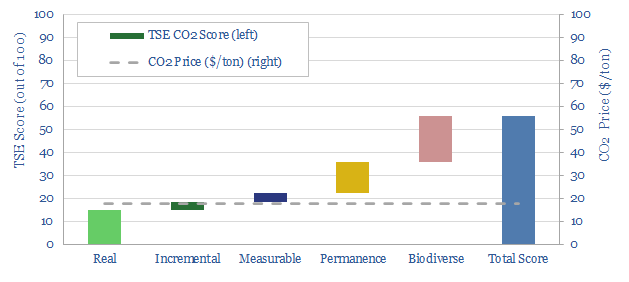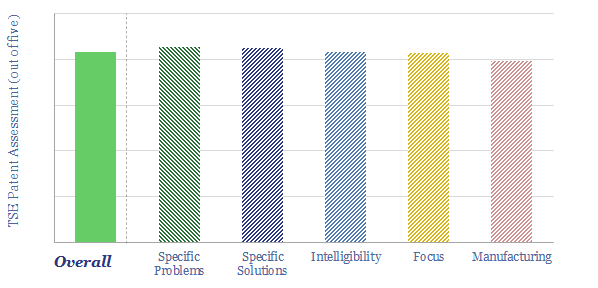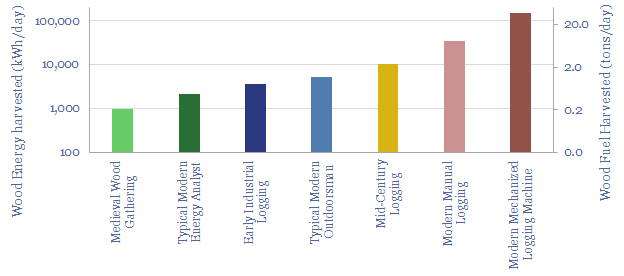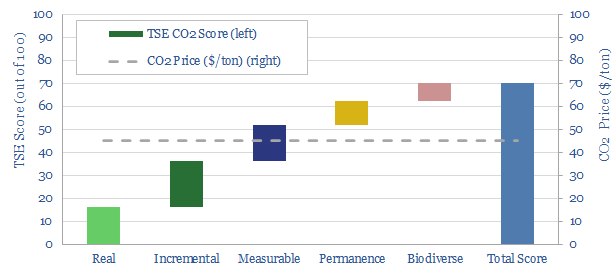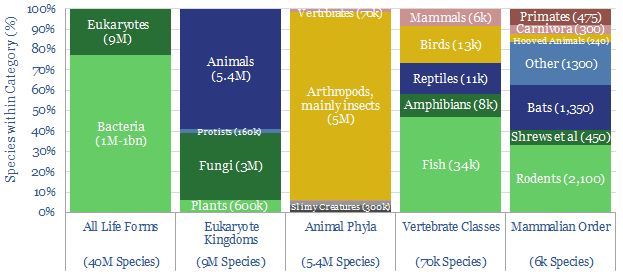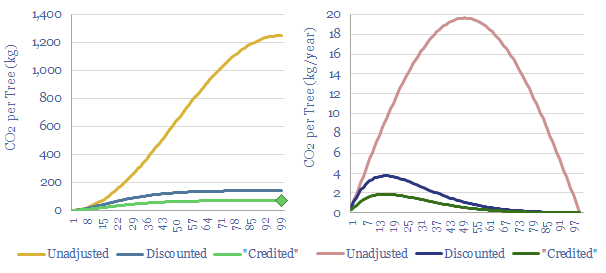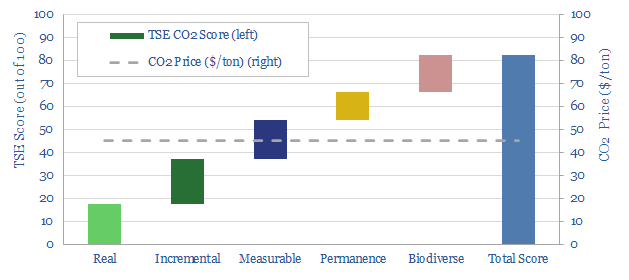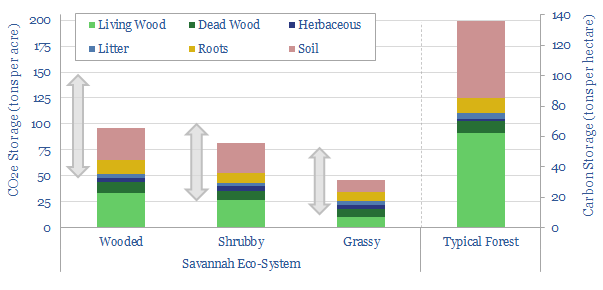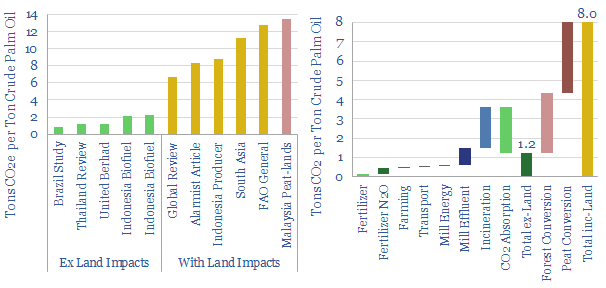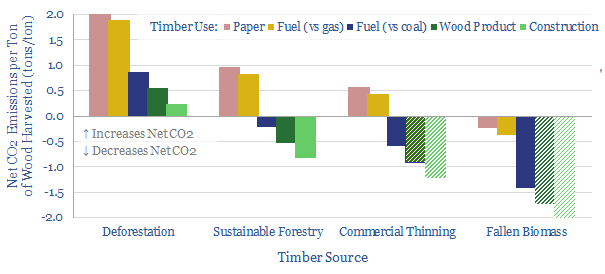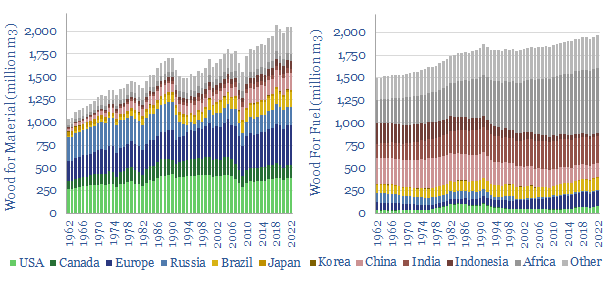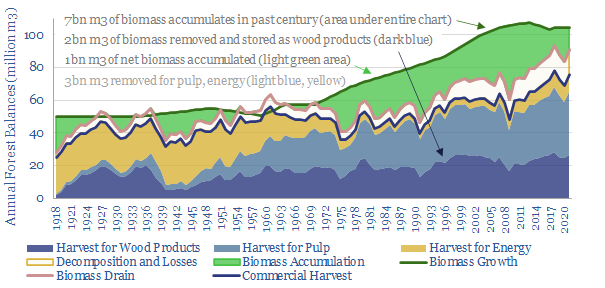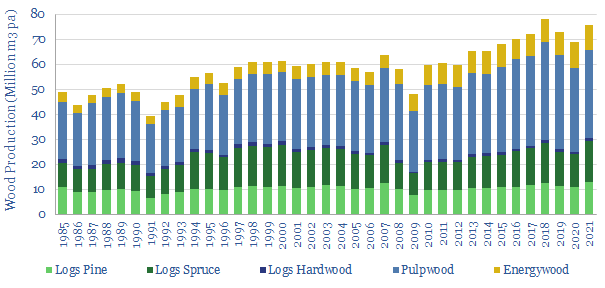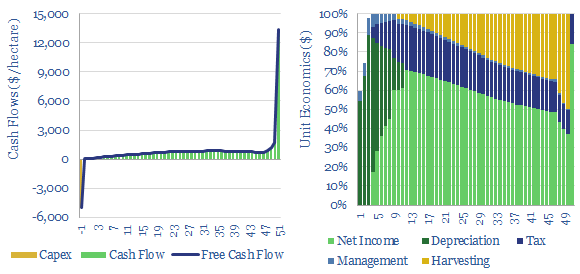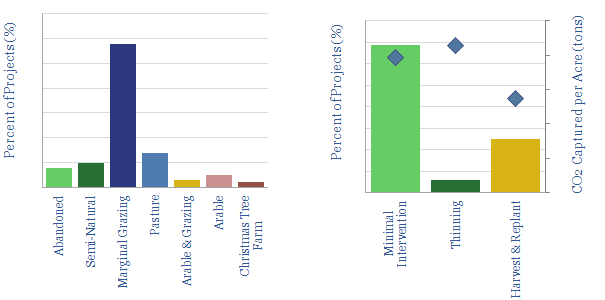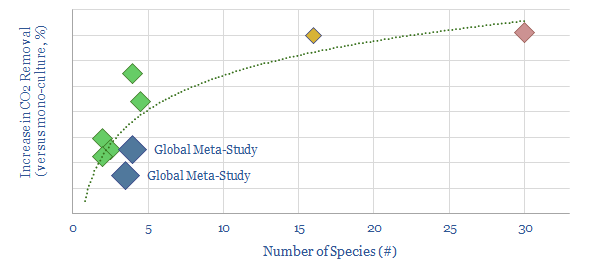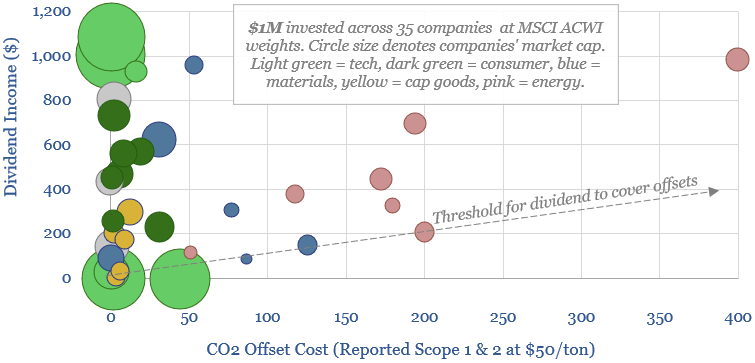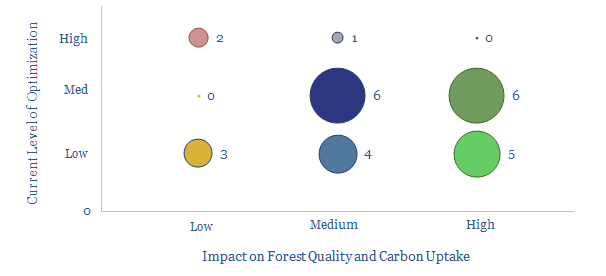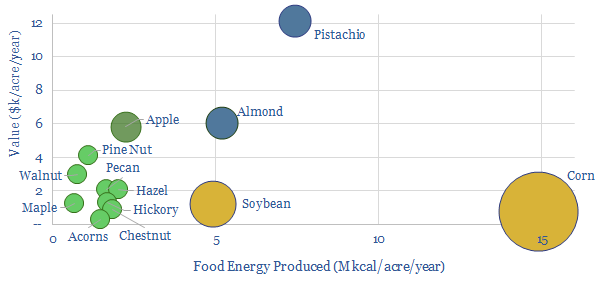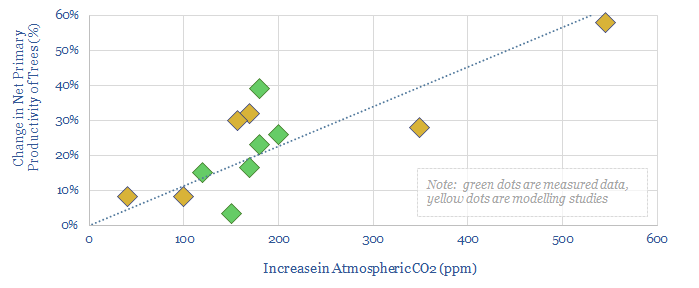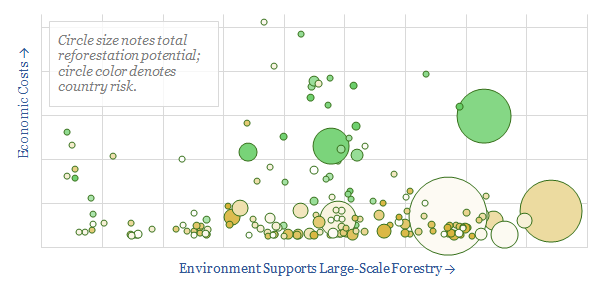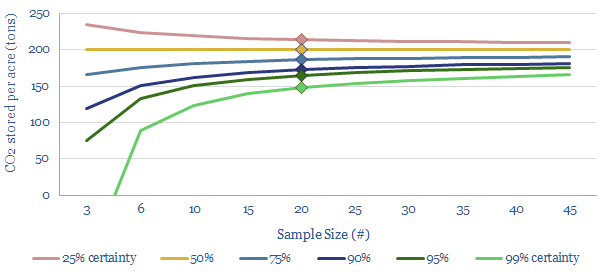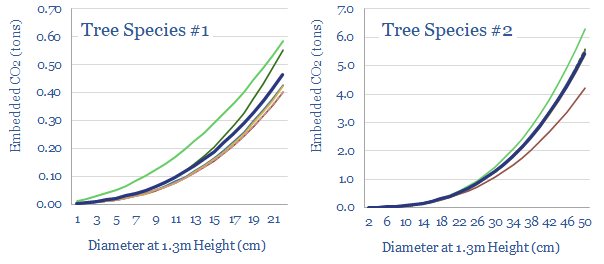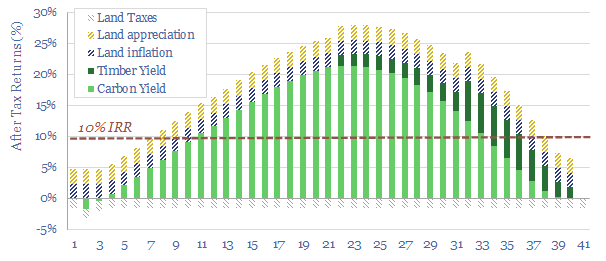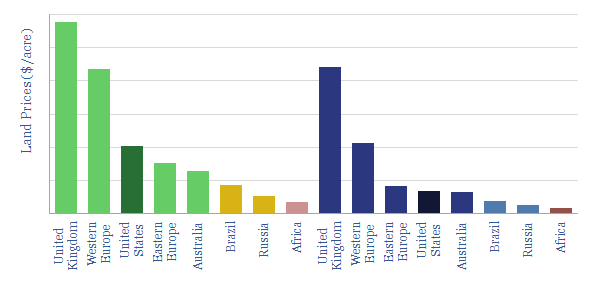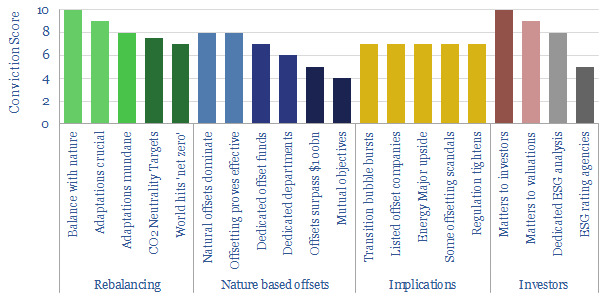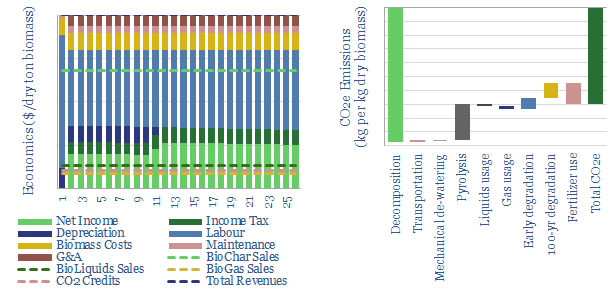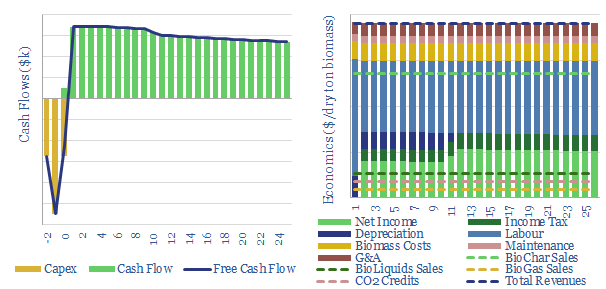Hydrocarbons denote commodities that are extracted from the Earth, composed of carbon and hydrogen, refined, and then combusted for energy or converted into useful materials. Hydrocarbons currently supply over 80% of the world’s useful energy, evenly split across natural gas (methane), oil products and coal. A crucial objective in the energy transition is to maintain hydrocarbon supplies, economically, in order to prevent debilitating energy shortages, and to fuel the transition itself. Other crucial objectives are to reduce hydrocarbons’ CO2 intensity (Scope 1&2), shift to lower-carbon hydrocarbons (e.g., coal to gas switching), improve efficiency factors; and then abate all of the remaining CO2, including via pre-combustion CCS, post-combustion CCS and nature-based solutions. Opportunities in our recent hydrocarbon research are explored below.
Oil Research
US shale: outlook and forecasts?
Download
Commodity demand: how sensitive to GDP growth?
Download
Global commodity demand: sensitivity to GDP?
Download
Shale water costs: transport, treatment and disposal?
Download
Commodity intensity of global GDP in 30 key charts?
Download
Oil demand: making millions?
Download
Japan oil demand: breakdown over time?
Download
Commodity price volatility: energy, metals and ags?
Download
Offshore oilfields: development capex over time in Norway?
Download
Oil markets: rising volatility?
Download
Global oil production by country?
Download
Combustion fuels: density, ignition temperature and flame speed?
Download
Diesel power generation: levelized costs?
Download
Commercial aviation: fuel economy of planes?
Download
Development capex: long-term spending from Oil Majors?
Download
Offshore vessels: fuel consumption?
Download
Global oil demand: breakdown by product by country?
Download
Global oil demand forecasts: by end use, by product, by region?
Download
Flaring reduction: fire extinguishers?
Download
US CO2 and Methane Intensity by Basin
Download
Flaring reduction: screen of service and equipment companies?
Download
US Refinery Database: CO2 intensity by facility?
Download
Exploration capex: long-term spending from Oil Majors?
Download
Weird recessions: can commodities de-couple?
Download
How do commodities perform during recessions?
Download
World’s largest energy assets: by category and risk?
Download
Offshore oil: marginal cost?
Download
Sulphur recovery units: Claus process economics?
Download
Energy security: the return of long-term contracts?
Download
Energy development times: first consideration to full production?
Download
Oil storage terminals: the economics?
Download
Global oil demand: rumors of my death?
Download
Oil demand: how much can you save in a crisis?
Download
Russia: a breakdown of export revenues?
Download
US CCS: market sizing?
Download
Commercial aviation: air travel economics?
Download
Container freight: shipping economics?
Download
Electro-fuels: start out as a billionaire?
Download
Oil markets: more balanced than ever before?
Download
Power-to-liquids: the economics?
Download
Shale Research
US shale: outlook and forecasts?
Download
Shale water costs: transport, treatment and disposal?
Download
Shale oil: fractured forecasts?
Download
Flaring reduction: fire extinguishers?
Download
US CO2 and Methane Intensity by Basin
Download
Flaring reduction: screen of service and equipment companies?
Download
European shale: an overview?
Download
Marcellus shale: well by well production database?
Download
Methane emissions from pneumatic devices: by operator, by basin?
Download
US shale gas: the economics?
Download
Shale productivity: snakes and ladders?
Download
US shale: the economics?
Download
US shale sand mines: simple economics?
Download
US shale: our outlook in the energy transition?
Download
US Shale: the second coming?
Download
Ventures for an Energy Transition?
Download
US shale: the quick and the dead?
Download
Fugitive methane: what components are leaking?
Download
Hydraulic Fracturing: where’s the IP?
Download
Chevron: SuperMajor Shale in 2020?
Download
EOG’s Digitization: Pumped-Up?
Download
Blockchain in the Oil & Gas Supply Chain
Download
Ten Themes for Energy in 2020
Download
Shale growth: what if the Permian went CO2-neutral?
Download
CO2 intensity of shale: breakdown by category?
Download
Screen of companies detecting methane leaks?
Download
US E&Ps turn to ESG?
Download
CO2 Intensity of Oilfield Supply Chains
Download
Permian CO2 Emissions by Producer
Download
Oil industry CO2 per barrel?
Download
US Shale: No Country for Old Completion Designs
Download
US Shale Gas to Liquids?
Download
The cutting edge of shale technology?
Download
CO2-EOR in Shale: the economics
Download
Permian Pipeline Bottlenecks?
Download
Dreaming of Electric Frac Fleets?
Download
Shale: Upgrade to Fiber?
Download
Leading Companies in DAS?
Download
DAS. At the cutting edge in shale?
Download
China’s Shale Challenge?
Download
Natural Gas Research
Global gas supply-demand in energy transition?
Download
Gas generation: what kind of bear is best?
Download
VoltaGrid: mobile micro-grid technology?
Download
Power plant cooling: adapting for water scarcity?
Download
Doosan Enerbility: gas turbine technology?
Download
Gas turbines: what outlook in energy transition?
Download
Global gas turbines by region and over time?
Download
US natural gas: the stuff of dreams?
Download
Seeing sense: digitize the downstream gas network?
Download
Gas distribution: loss rates, leakage, unaccounted gas?
Download
Global heat pump sales by country?
Download
Global CCS Projects Database
Download
US gas pipeline capex over time?
Download
Gas peaker plants: the economics?
Download
Back up: does ramping renewables displace gas?
Download
Mainspring Energy: linear generator breakthrough?
Download
Gas power: does low utilization entail spare capacity?
Download
Global biogas production by country?
Download
US gas transmission: by company and by pipeline?
Download
Peak commodities: everything, everywhere, all at once?
Download
Renewable-heavy grids: dividing the pie?
Download
Density of gases: by pressure and temperature?
Download
Gas dehydration: costs and economics?
Download
Gas fractionation: NGL economics?
Download
European gas and power model: natural gas supply-demand?
Download
Biogas: the economics?
Download
Development capex: long-term spending from Oil Majors?
Download
Air quality: sulphur, NOx and particulate emissions?
Download
Gas turbines: operating parameters?
Download
NET Power: gas-fired power with inherent CO2 capture?
Download
Methane slip: how much gas evades combustion?
Download
Decarbonized gas: ship LNG out, take CO2 back?
Download
Exploration capex: long-term spending from Oil Majors?
Download
CH4 context: the largest methane leaks of all time?
Download
Global gas: five predictions through 2030?
Download
Scope 4 emissions: avoided CO2 has value?
Download
CO2 intensity: Scope 1, 2 & 3 and Scope 4 emissions?
Download
US decarbonization: energy and CO2 emissions?
Download
Gas diffusion: how will record prices resolve?
Download
Global gas prices: by country?
Download
LNG Research
LNG: top conclusions in the energy transition?
Download
Global gas supply-demand in energy transition?
Download
LNG plant compressors: chilling goes electric?
Download
LNG plant compression: gas drives vs electric motors?
Download
LNG trucks: Asian equation?
Download
Energy trading: value in volatility?
Download
European gas and power model: natural gas supply-demand?
Download
Liquefied CO2 carriers: CO2 shipping costs?
Download
Decarbonized gas: ship LNG out, take CO2 back?
Download
LNG shipping: company screen?
Download
Energy transition: top commodities?
Download
Global gas: five predictions through 2030?
Download
Gas diffusion: how will record prices resolve?
Download
North Field: sharing the weight of the world?
Download
Qatar’s North Field: production and productivity?
Download
Energy security: the return of long-term contracts?
Download
Global LNG: offtake contracts and spot market development?
Download
Japan: nuclear restart tracker?
Download
US LNG: new perceptions?
Download
LNG regasification: the economics?
Download
Global LNG supply model: by project and by country?
Download
LNG transport: shipping economics?
Download
LNG in the energy transition: rewriting history?
Download
LNG liquefaction: what challenges and opportunities?
Download
LNG liquefaction: the economics?
Download
LNG plant footprints: compaction costs?
Download
Heavy truck costs: diesel, gas, electric or hydrogen?
Download
Net zero Oil Majors: four cardinal virtues?
Download
LNG: deep disruptions?
Download
Shell: the future of LNG plants?
Download
Global Flaring Intensity by Country
Download
The Ascent of Small Scale LNG?
Download
CO2 intensity of natural gas value chains?
Download
Long-Term LNG Demand: technology-led?
Download
US Shale Gas to Liquids?
Download
Greenfield LNG: Does Exxon have an edge?
Download
China’s Shale Challenge?
Download
The World’s Great Gas Fields and Their CO2
Download
Small-Scale LNG liquefaction Costs: New Opportunities?
Download
LNG in transport: scaling up by scaling down?
Download
Downstream Research
Storage tank costs: storing oil, energy, water and chemicals?
Download
Crude to chemicals: there will be naphtha?
Download
Global oil demand forecasts: by end use, by product, by region?
Download
US Refinery Database: CO2 intensity by facility?
Download
Scope 4 emissions: avoided CO2 has value?
Download
Electric vehicles: chargers of the light brigade?
Download
Fuel retail: economics of a petrol station?
Download
Hydroprocessing: the economics?
Download
Methanol production: the economics?
Download
Methanol: leading companies?
Download
Low-carbon refining: insane in the membrane?
Download
Refinery membranes: where’s the IP?
Download
Pipeline costs: moving oil, products or other liquids?
Download
Waste heat recovery: heat exchanger costs?
Download
Renewable diesel: the economics?
Download
Can carbon-neutral fuels re-shape the oil industry?
Download
Biomass to biofuel, or biomass for burial?
Download
Should fuel retail stations sell carbon credits: the economics?
Download
Carbon Offsets vs Renewable Diesel?
Download
Decarbonise Downstream?
Download
Carbon Costs of IMO 2020?
Download
Upgrading Catalysts: lower refinery temperatures and pressures?
Download
US Refining: energy and CO2 intensity
Download
Carbon Capture Costs at Refineries?
Download
Overview of Downstream Catalyst Companies
Download
Global CO2 emissions breakdown?
Download
Distribution Costs: Ships, Trucks, Trains and Delivery Vans?
Download
Lubricant Leaders: our top five conclusions
Download
Drones attack military fuel economy?
Download
Patent Leaders in Energy
Download
US Shale Gas to Liquids?
Download
Explaining US gasoline?
Download
Electric cars slow the energy transition?
Download
Scooter Wars?
Download
Offshore Capex for Technology Leaders?
Download
Hydrogen Cars: how economic?
Download
Aerial Vehicles: why flying cars fly
Download
A Short History of Travel Speeds
Download
Vehicles: fuel economy and energy efficiency?
Download
Our Top Technologies for IMO 2020
Download
Plastics and Polymers Research
Global plastic demand: breakdown by product, region and use?
Download
Additive manufacturing: technology leaders?
Download
Poly Vinyl Chloride: the economics?
Download
Eastman: molecular recycling technology?
Download
Plastic recycling: the economics?
Download
Plastic products: energy and CO2 intensity of plastics?
Download
Polyurethanes: what upside in energy transition?
Download
Propylene oxide: production costs?
Download
Naphtha cracking: costs of ethylene, propylene and aromatics?
Download
Crude to chemicals: there will be naphtha?
Download
Newlight AirCarbon: bioplastics breakthrough?
Download
Acetylene: production costs?
Download
Purified terephthalic acid: PTA production costs?
Download
Polyester: production process?
Download
Polyurethane: leading companies?
Download
Alterra Energy: technology review?
Download
Polyurethane: production costs?
Download
Ethylene vinyl acetate: production costs?
Download
Agilyx: plastic recycling breakthrough?
Download
PureCycle: polypropylene recycling breakthrough?
Download
Recycling: a global overview of energy savings?
Download
Stora Enso: next-generation packaging breakthrough?
Download
Glass fiber: the economics?
Download
Carbon fiber: energy economics?
Download
Carbios: plastic recycling breakthrough?
Download
Danimer: bio-plastics breakthrough?
Download
Origin Materials: bio-plastics breakthrough?
Download
Polymers and higher olefins: the economics?
Download
Ethanol-to-ethylene: the economics?
Download
Next-generation plastics: bioplastic, biodegradable, recycled?
Download
Ethane cracking: the economics?
Download
Construction materials: a screen of costs and CO2 intensities?
Download
CO2 electrolysis: the economics?
Download
3D printing an energy transition?
Download
Turn the Plastics into Roads?
Download
Plastic Recycling Companies: pyrolysis and next-generation recycling?
Download
Value in Use: CO2 intensities of household items?
Download
Make CO2 into valuable products?
Download
TOTAL’s Plastic-Recycling Progress?
Download
Thermo-Plastic Composite: The Future of Risers?
Download
Coal Research
Global coal supply-demand: outlook in energy transition?
Download
European coal generation by facility and coal plant closures?
Download
Labor costs of coal production: labor productivity and salaries?
Download
Energy transition: solar and gas -vs- coal hard reality?
Download
China coal production costs?
Download
Coal power generation: minute-by-minute flexibility?
Download
European gas and power model: natural gas supply-demand?
Download
Post-combustion CCS: what energy penalties?
Download
Thermal power plant: loss attribution?
Download
Electrostatic precipitator: costs of particulate removal?
Download
Selective catalytic reduction: costs of NOx removal?
Download
Air quality: sulphur, NOx and particulate emissions?
Download
Flue gas desulfurization: costs of SO2 scrubbers?
Download
Costs of hydrogen from coal gasification?
Download
Coal grades: what CO2 intensity?
Download
Bio-coke: energy economics?
Download
All the coal in China: our top ten charts?
Download
Coal miners: a screen of Western companies?
Download
Energy return on energy invested?
Download
Global energy market model for the energy transition?
Download
Power plants: cold starts and ramp rates?
Download
Coal mining: the economics?
Download
US CCS: market sizing?
Download
US CO2 emissions by industrial facility size?
Download
China: can the factory of the world decarbonize?
Download
Energy economics: energy content of combustion fuels?
Download
Energy Transition Technologies?
Download
Energy infrastructure: labor intensity?
Download
Coal-to-gas switching: what CO2 abatement cost?
Download
The route to net zero: an energy-climate model for 2-degrees
Download
CO2 intensity of coal production?
Download
Molten Carbonate Fuel Cells: CCS plus Power? The Economics?
Download
Coal-to-Power Project Economics
Download
Global hydrogen: market breakdown?
Download
Global CO2 emissions breakdown?
Download
Major technologies to decarbonise power?
Download
De-carbonising carbon?
Download
Chemical Looping Progress?
Download
Carbon Capture and Storage (CCS)
Vehicles: energy transition conclusions?
Download
Battery swapping: off to the races?
Download
Battery swapping: leading companies?
Download
eHighways: trucking by wire?
Download
eHighway economics: costs of electrifying heavy trucks?
Download
EV incentives: vehicle taxes by country?
Download
Mapping vehicle value chains?
Download
Global vehicle sales by manufacturer?
Download
Going platinum: PGMs in energy transition?
Download
Vehicle emissions of CO, NOx and HCs?
Download
Electric vehicles: the road to cost parity?
Download
Vehicle depreciation rates: EVs versus ICEs?
Download
Electric vehicle cost breakdown by component?
Download
Electric vehicles: saturation point?
Download
Turbochargers: leading companies?
Download
Electricity demand for electric vehicles?
Download
Electric vehicles: total cost of ownership?
Download
Electric vehicle: battery life?
Download
Electric vehicles: breaking the ICE?
Download
Global vehicle fleet: vehicle sales and electrification by region?
Download
Vehicle fleets: service life and retirement age by vehicle type?
Download
Electric vehicles: motors and magnets?
Download
Bulk shipping: cost breakdown?
Download
Commercial aviation: fuel economy of planes?
Download
Offshore vessels: fuel consumption?
Download
Hillcrest: ZVS inverter breakthrough?
Download
Auto manufacturing: the economics?
Download
EV fast charging: opening the electric floodgates?
Download
Power-MOSFETs: leading companies?
Download
Electric vehicles: chargers of the light brigade?
Download
Electric motors: state of flux?
Download
Axial flux motors: leading companies and products?
Download
Mine trucks: transport economics?
Download
LNG transport: shipping economics?
Download
Commercial aviation: air travel economics?
Download
Container freight: shipping economics?
Download
ChargePoint: electric vehicle charging edge?
Download
Vehicle mass: what opportunities to improve fuel economy?
Download
Battery recycling: long division?
Download
Nio: EV-charging breakthrough?
Download
Nature Based Solutions
Nature based solutions to climate change?
Download
Nature-based CO2 removals: a summary?
Download
Carbon markets: charity case?
Download
Reforestation: what planting density for seedlings?
Download
Growing economies: reforest and reinvest?
Download
Wood products: typical pricing?
Download
CO2 removals: CO2OL Panama project?
Download
Tree seedlings: costs and economics?
Download
Albedo of different landscapes: a challenge for reforestation?
Download
Nature based solutions: CO2 removals in 2022?
Download
CO2 offsets: Pachama’s AI platform?
Download
Tigercat: forestry and timber innovations?
Download
Energy history: how much wood can be cut in a day?
Download
CO2 removals: teak plantations, Nicaragua?
Download
Biodiversity: a breakdown of species and carbon stocks?
Download
Carbon offsets: cost of CO2 removal per tree planted?
Download
CO2 Removals: BaumInvest Mixed Reforestation, Costa Rica?
Download
Savanna carbon: great plains?
Download
Palm oil: what CO2 intensity?
Download
Wood use: what CO2 credentials?
Download
CO2 intensity of wood: context by context?
Download
Global wood production: supply by country by year?
Download
Finnish forests: a two billion ton CO2 case-study?
Download
Finnish forests: trees, yields, costs, value?
Download
Reforestation: costs of CO2 removals?
Download
UK reforestation projects: 25 case studies?
Download
Biodiversity: impacts on forest CO2?
Download
Carbon neutral investing: hedge funds, forest funds?
Download
Carbon-offset equities’ Scope 1&2 CO2 emissions?
Download
Nature based CO2 removals: theory of evolution?
Download
Tree crops: financial and agricultural yields?
Download
Photo opp: reforestation, CO2 fertilization and global temperatures?
Download
Global reforestation potential by country?
Download
Carbon stocks: measuring the forest from the trees?
Download
Allometry: how much CO2 in a tree or forest?
Download
Reforestation: a real-life roadmap?
Download
Land prices: an overview for renewables and reforestation?
Download
Carbon offset funds: the future of ESG?
Download
Biochar: burnt offerings?
Download
Biomass to biochar: the economics?
Download
